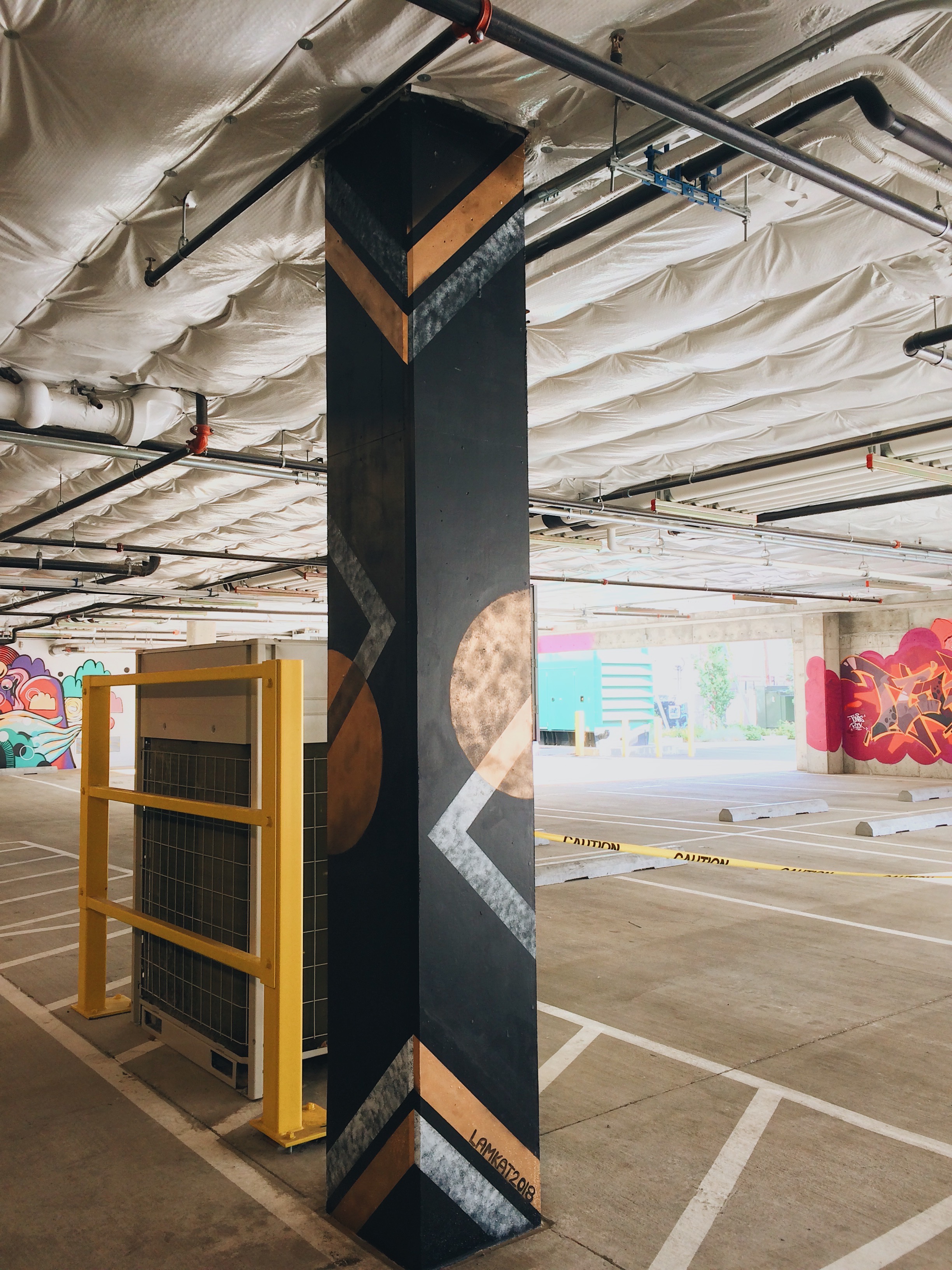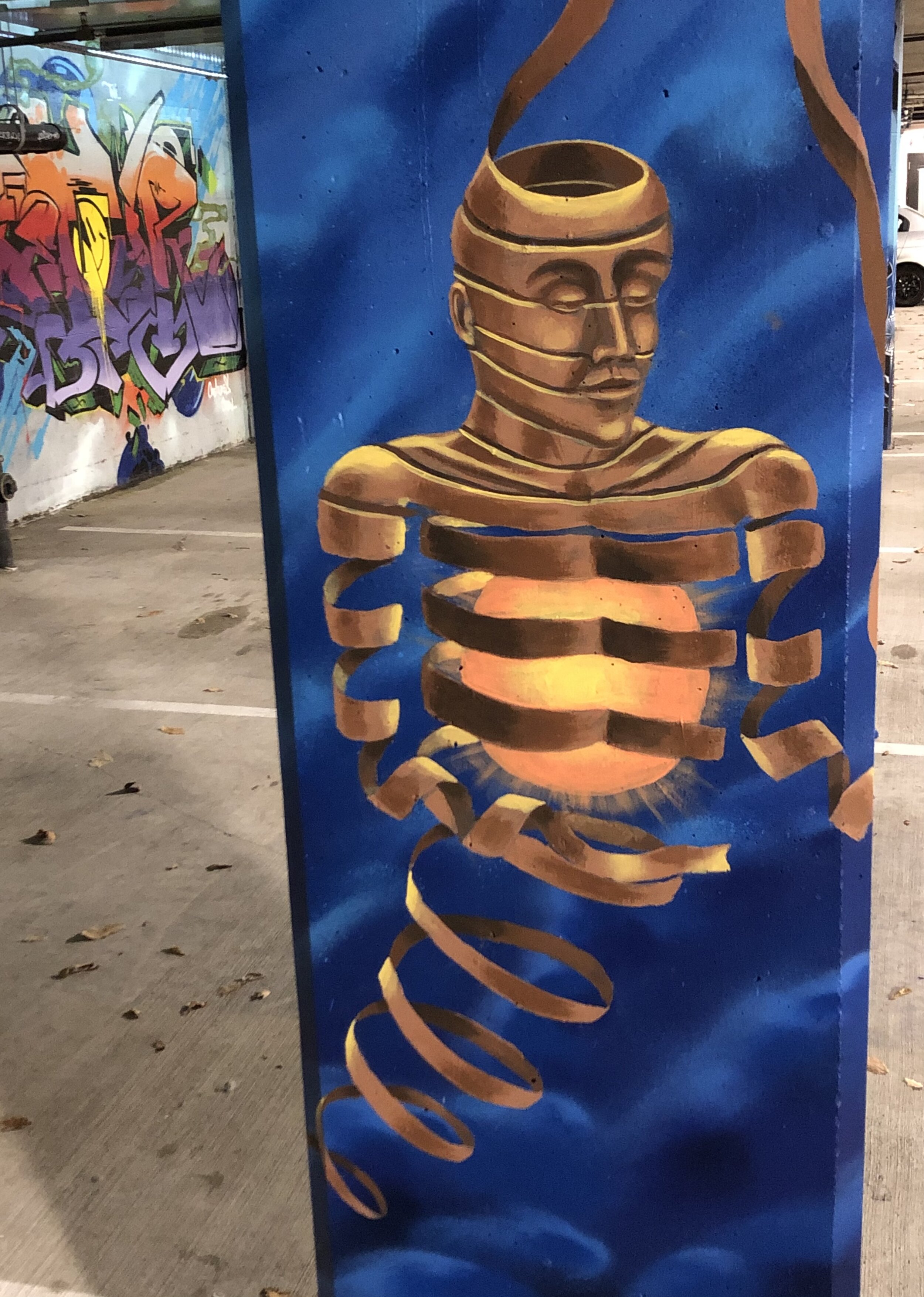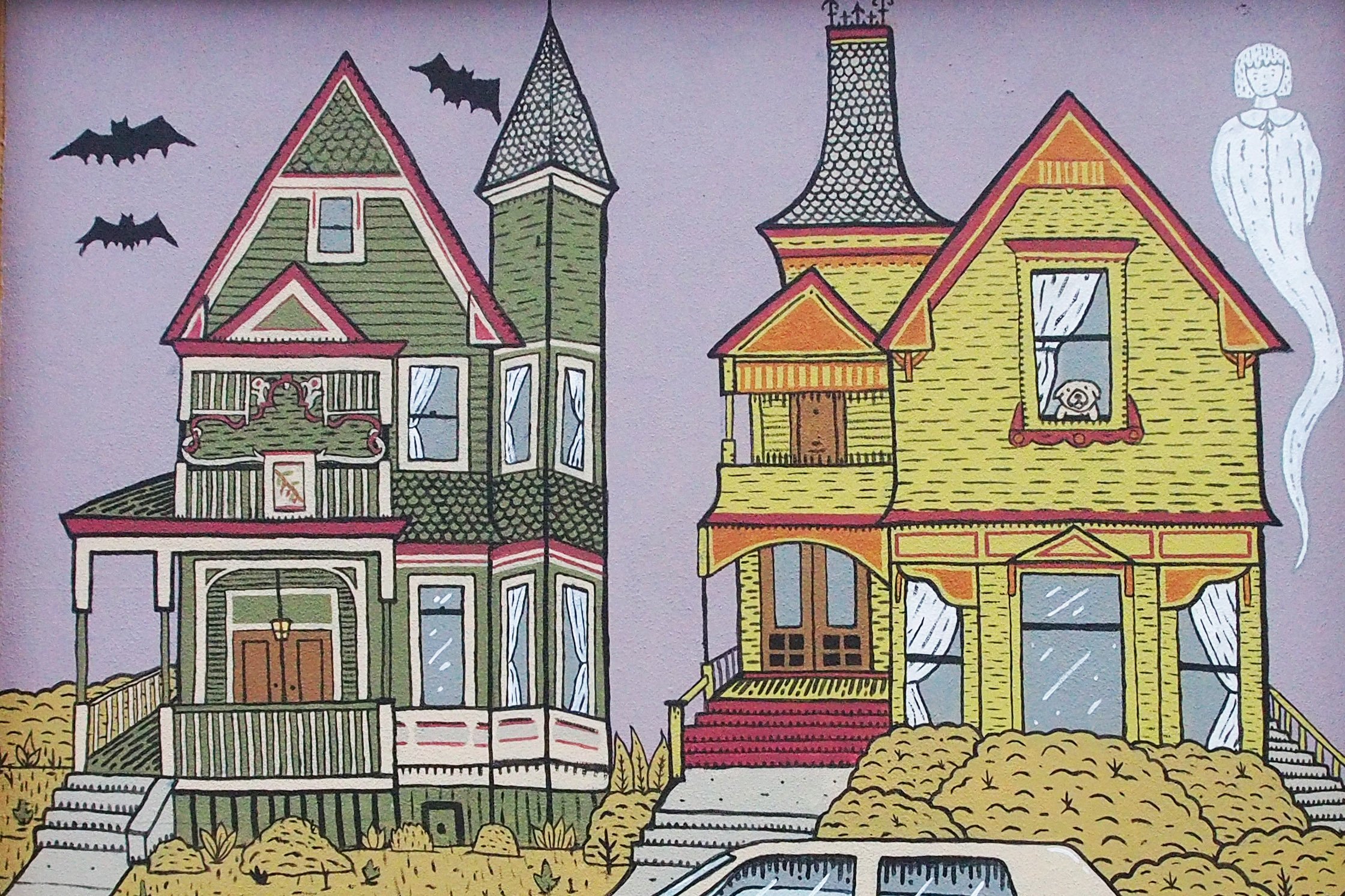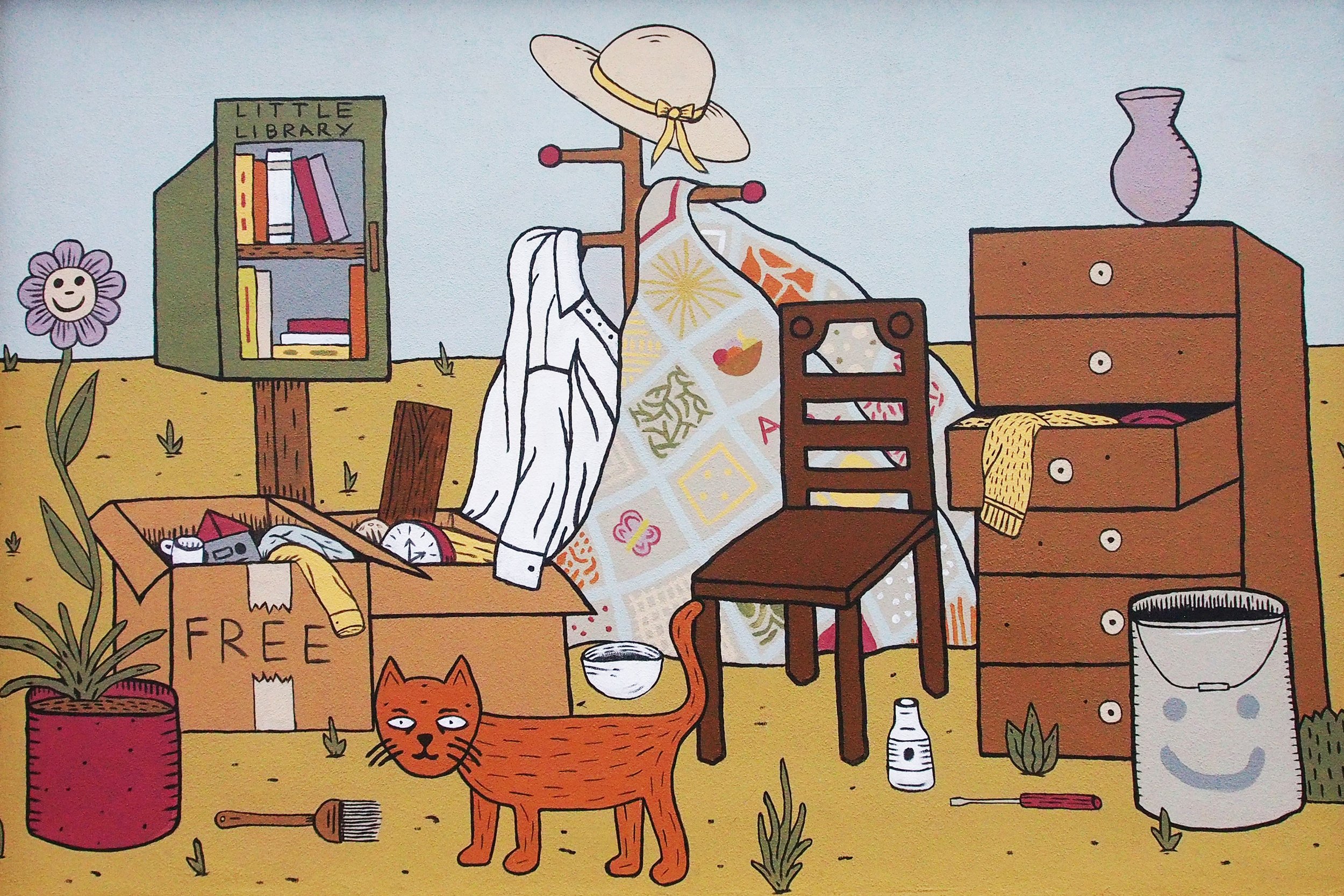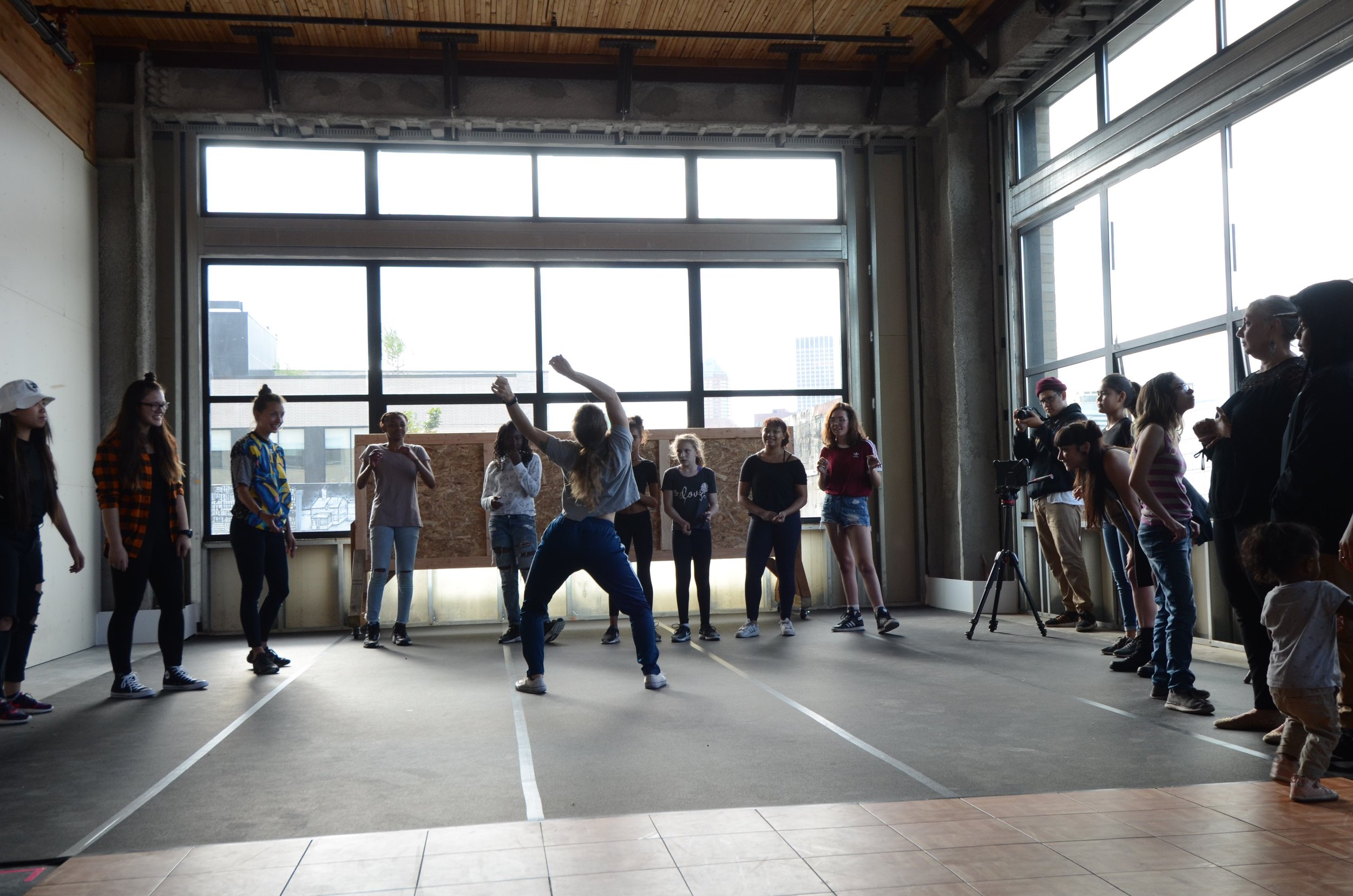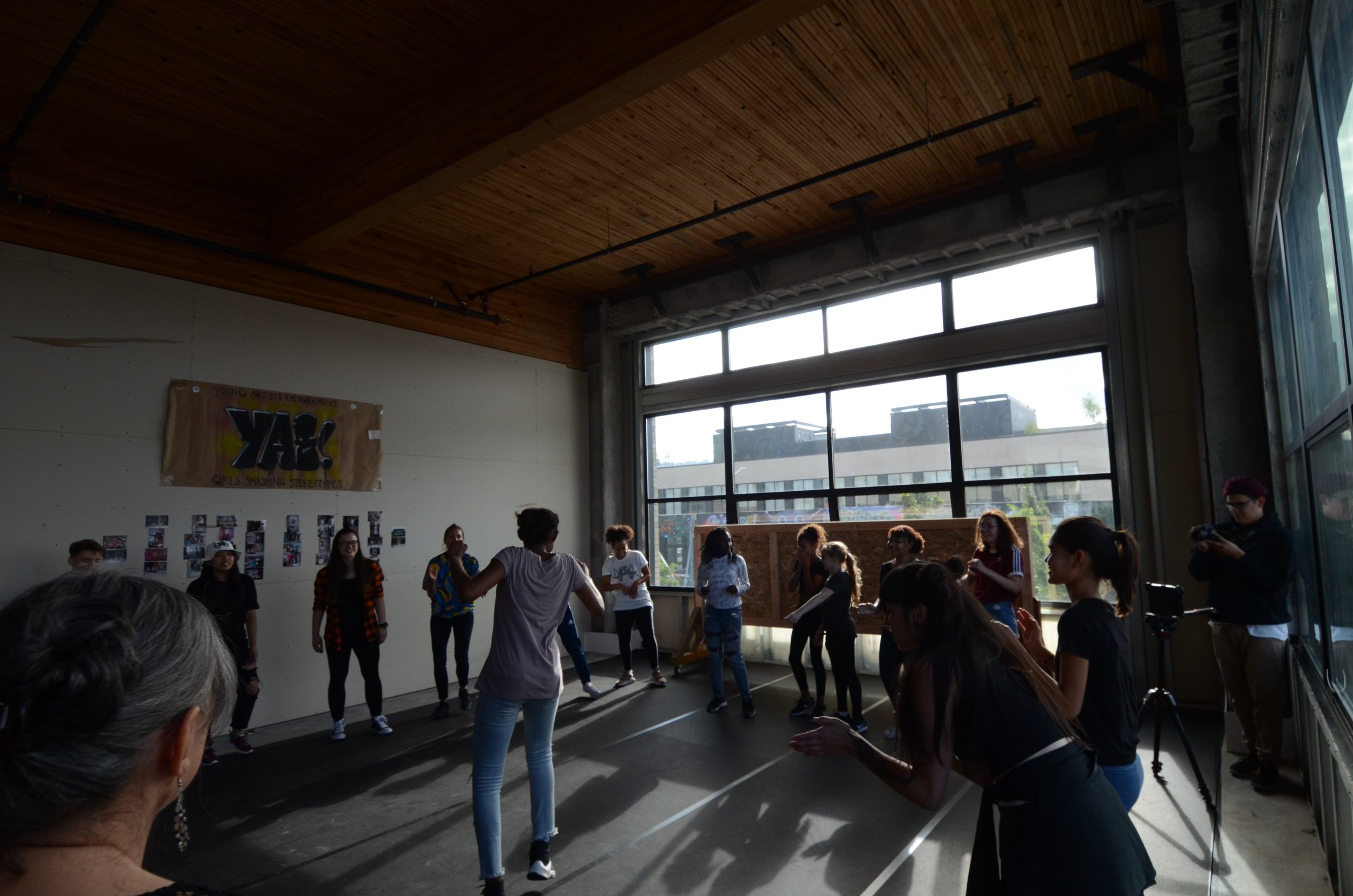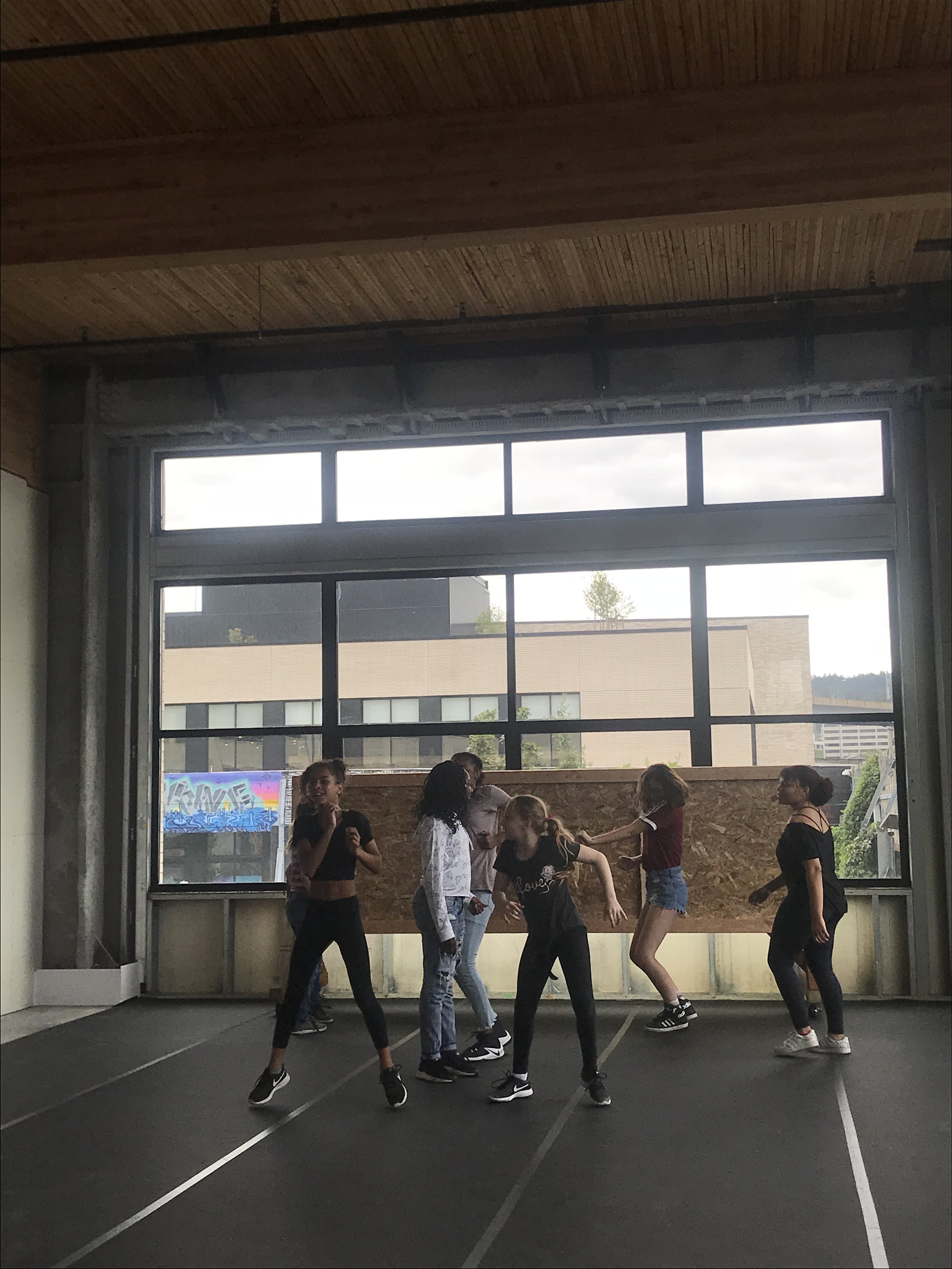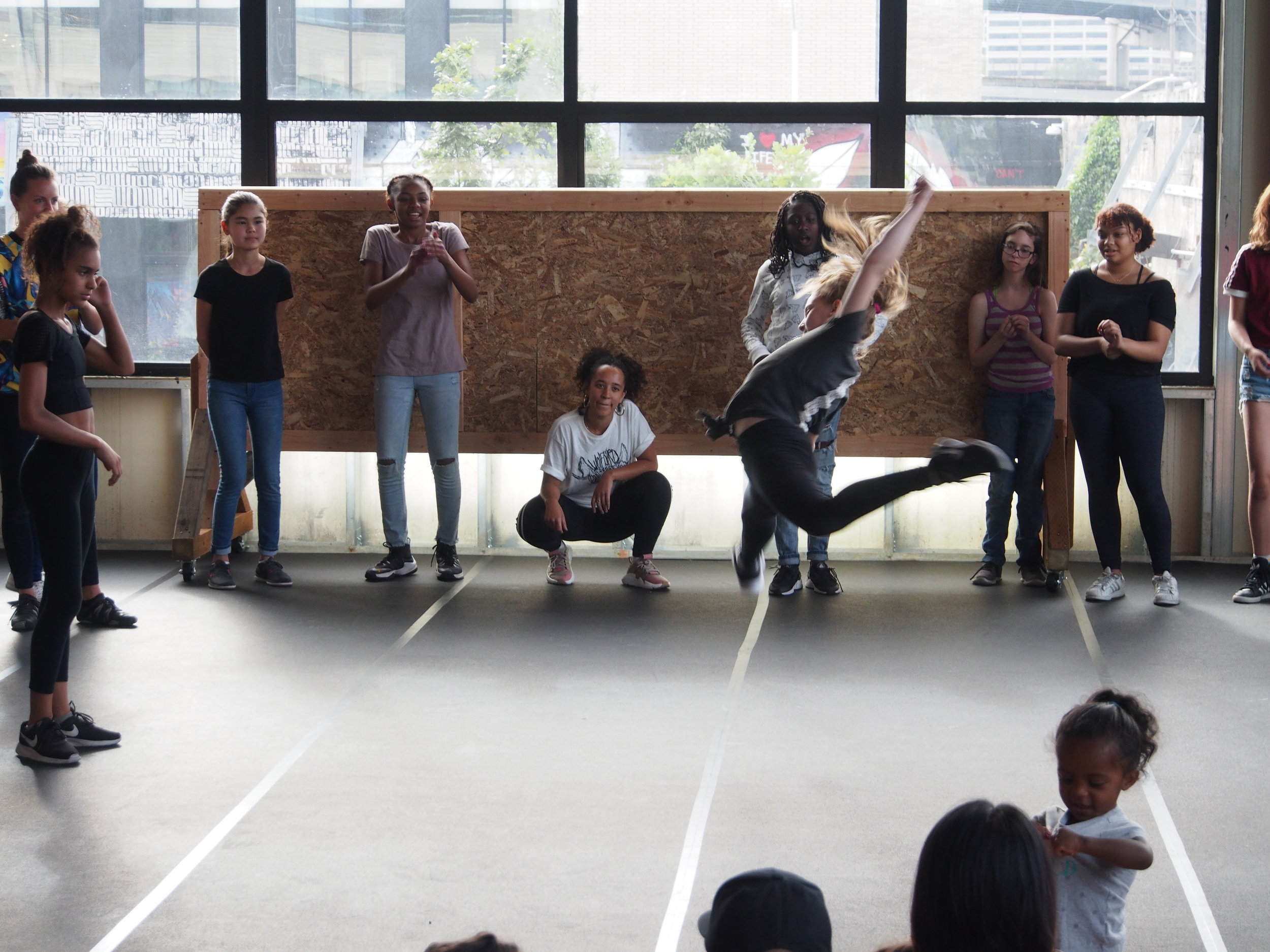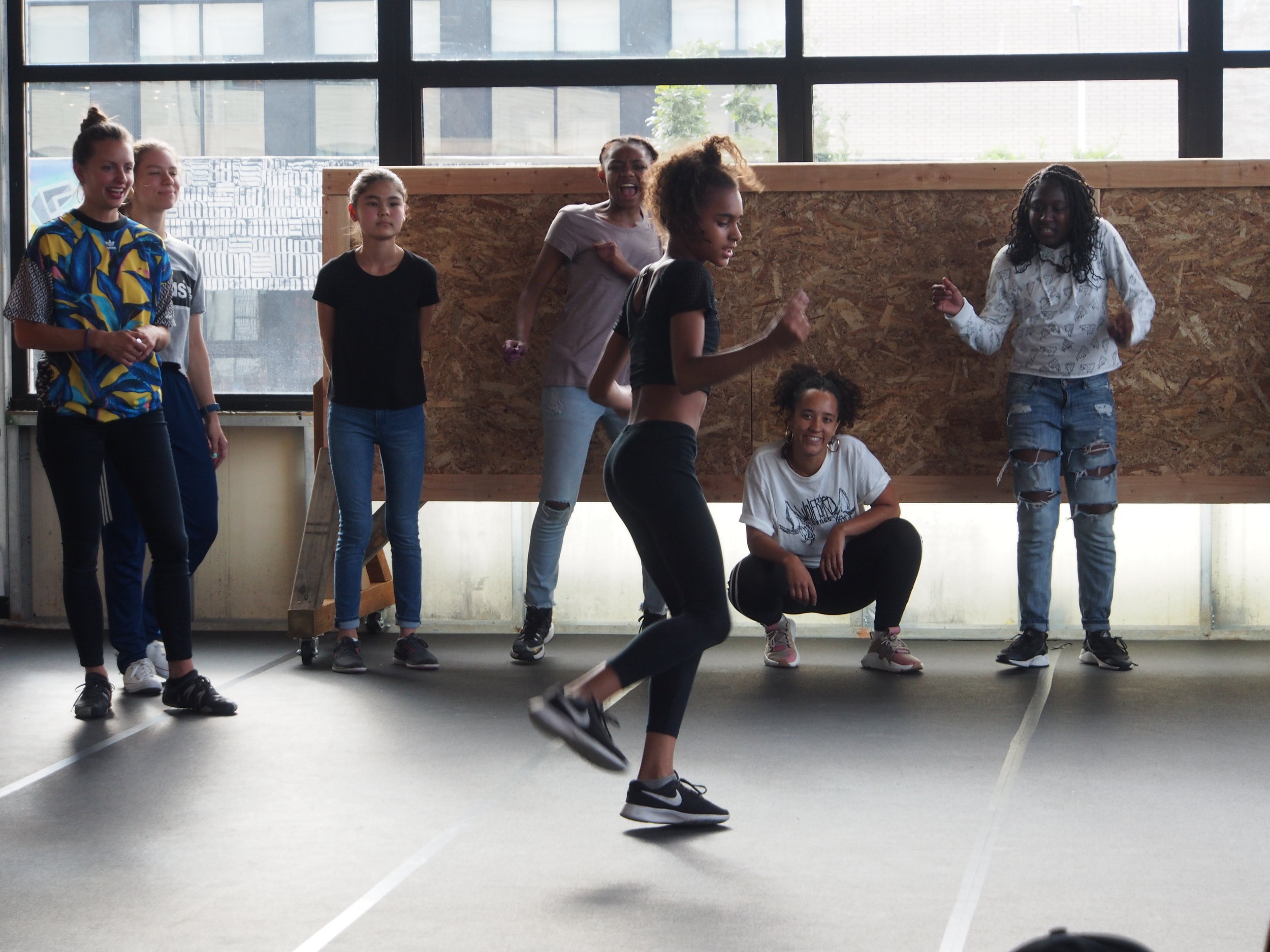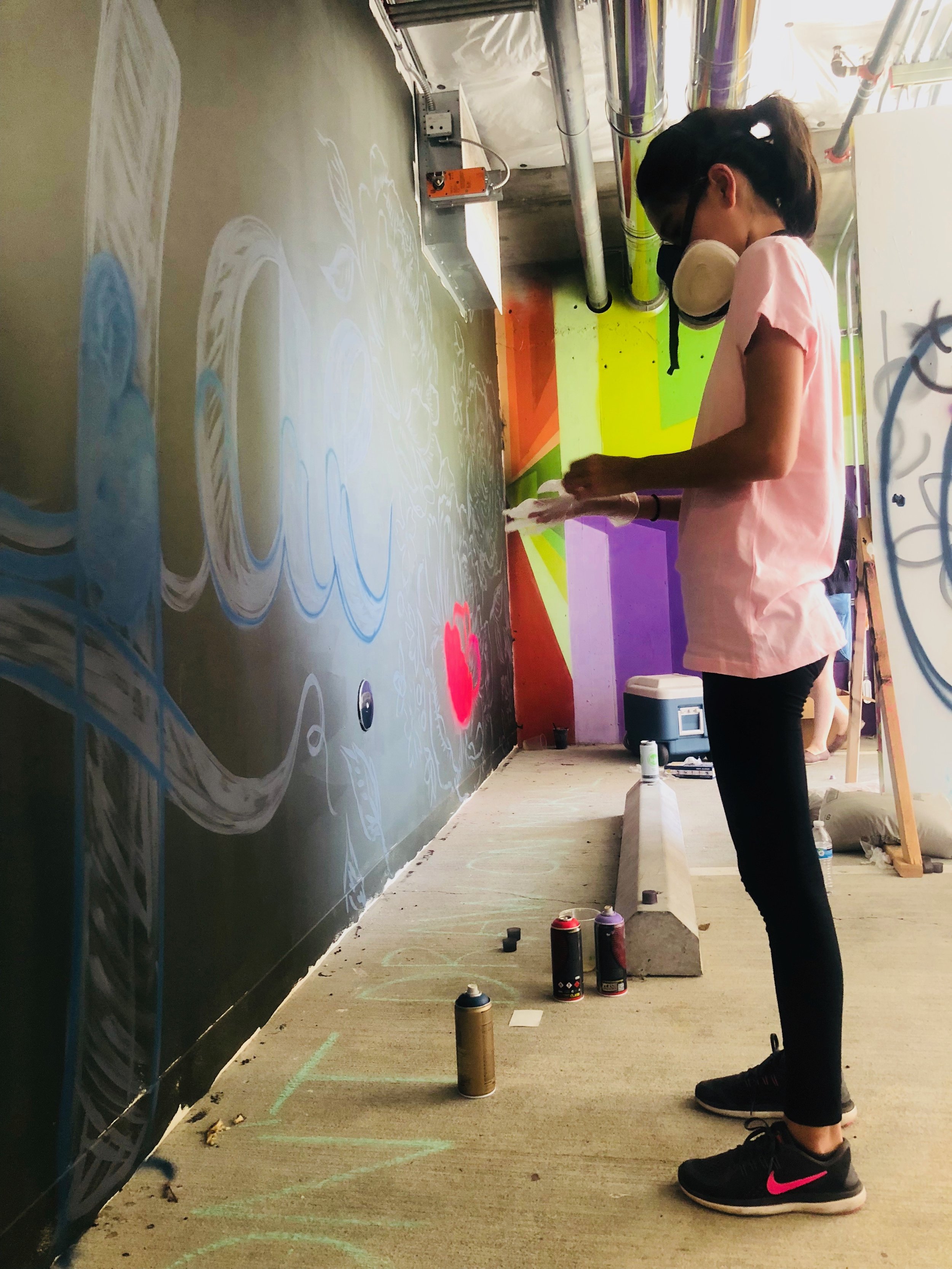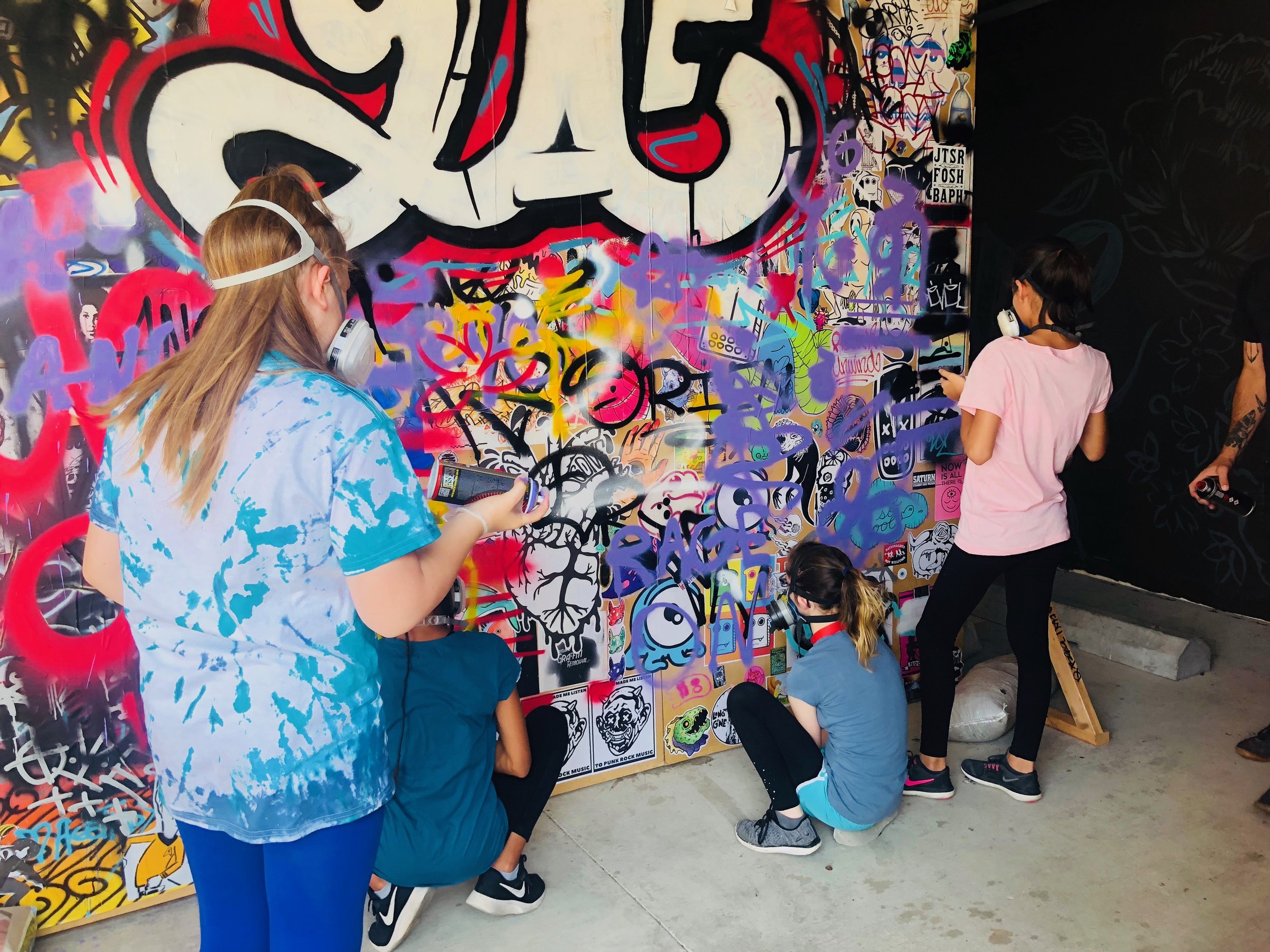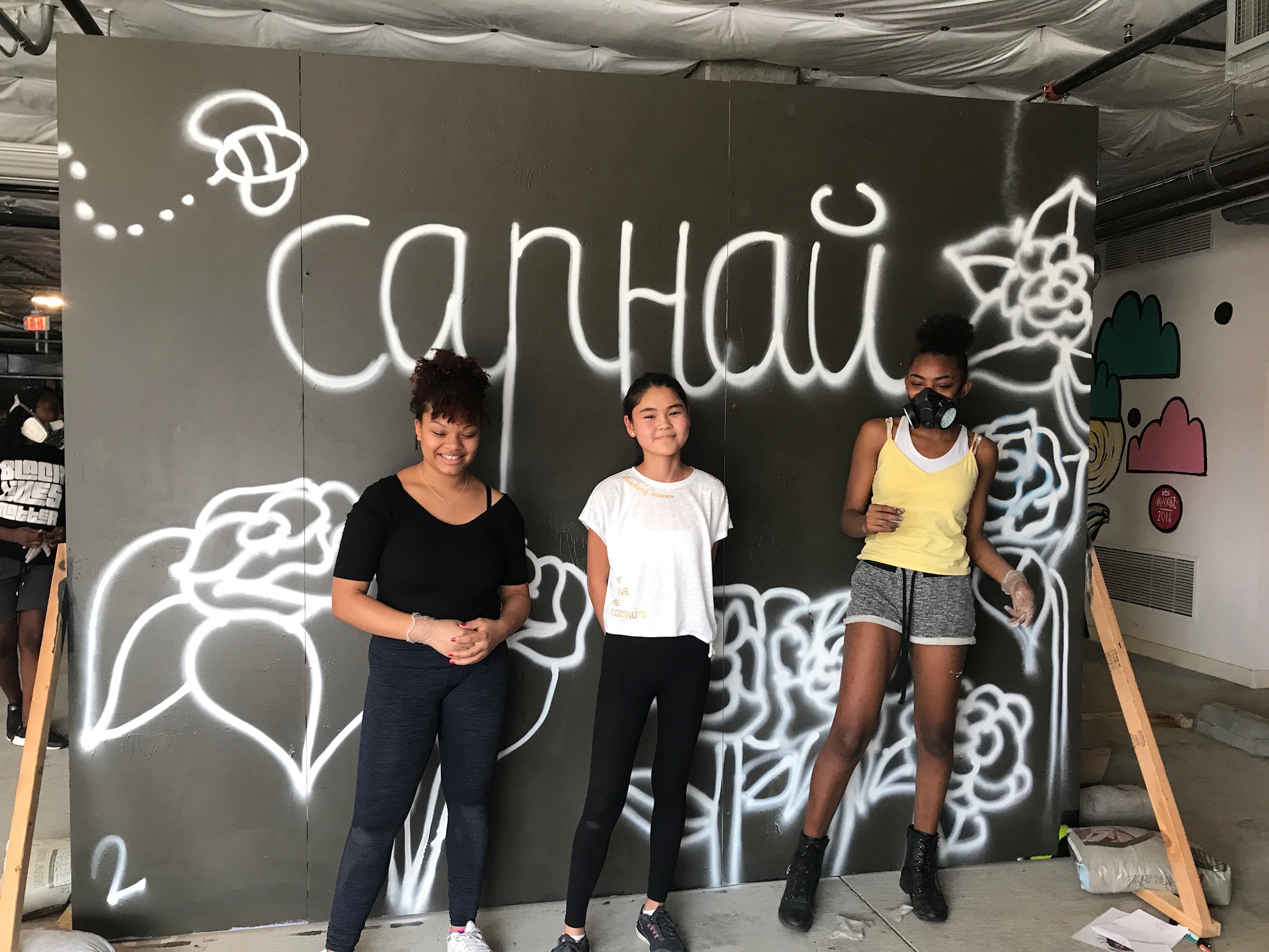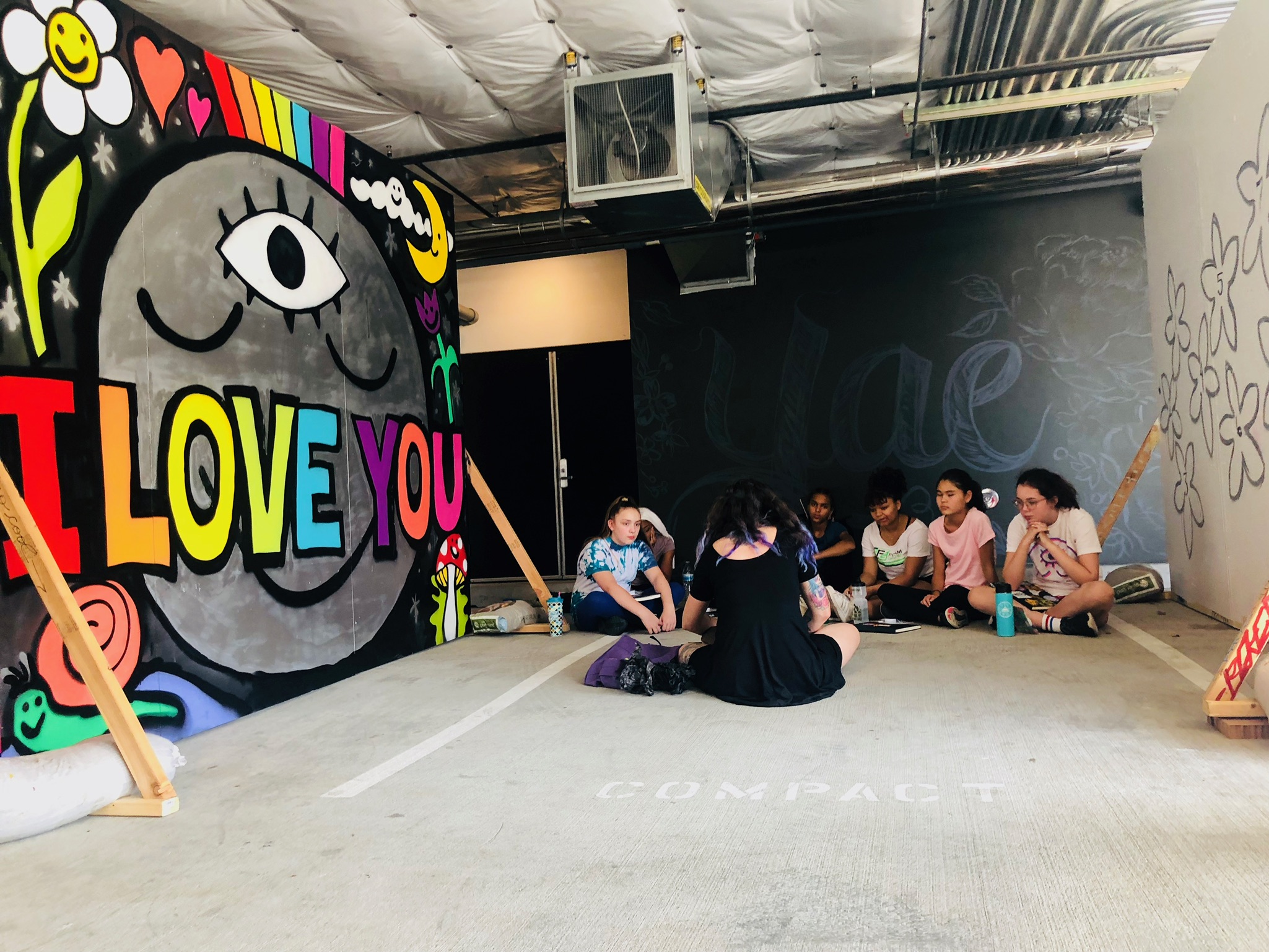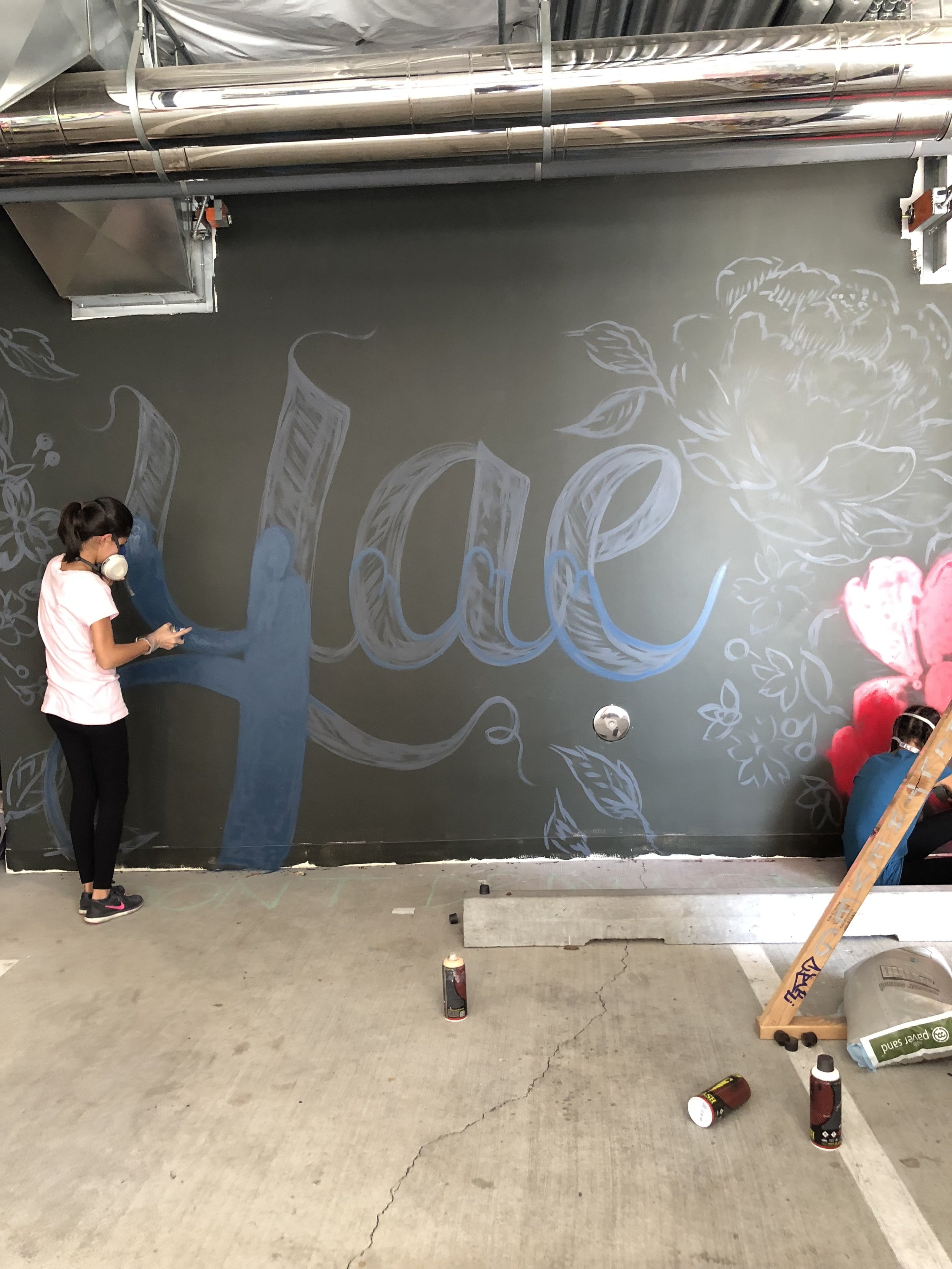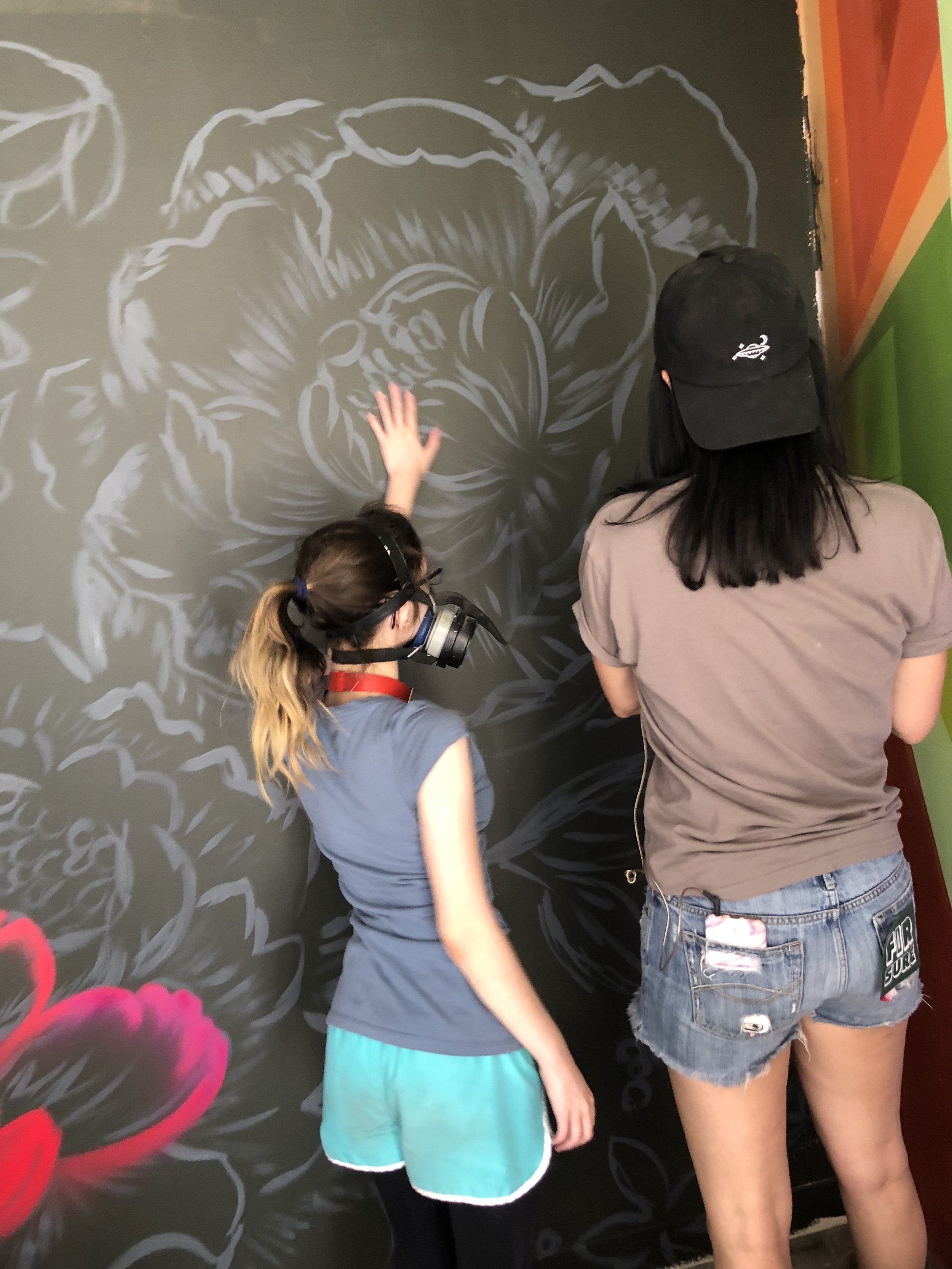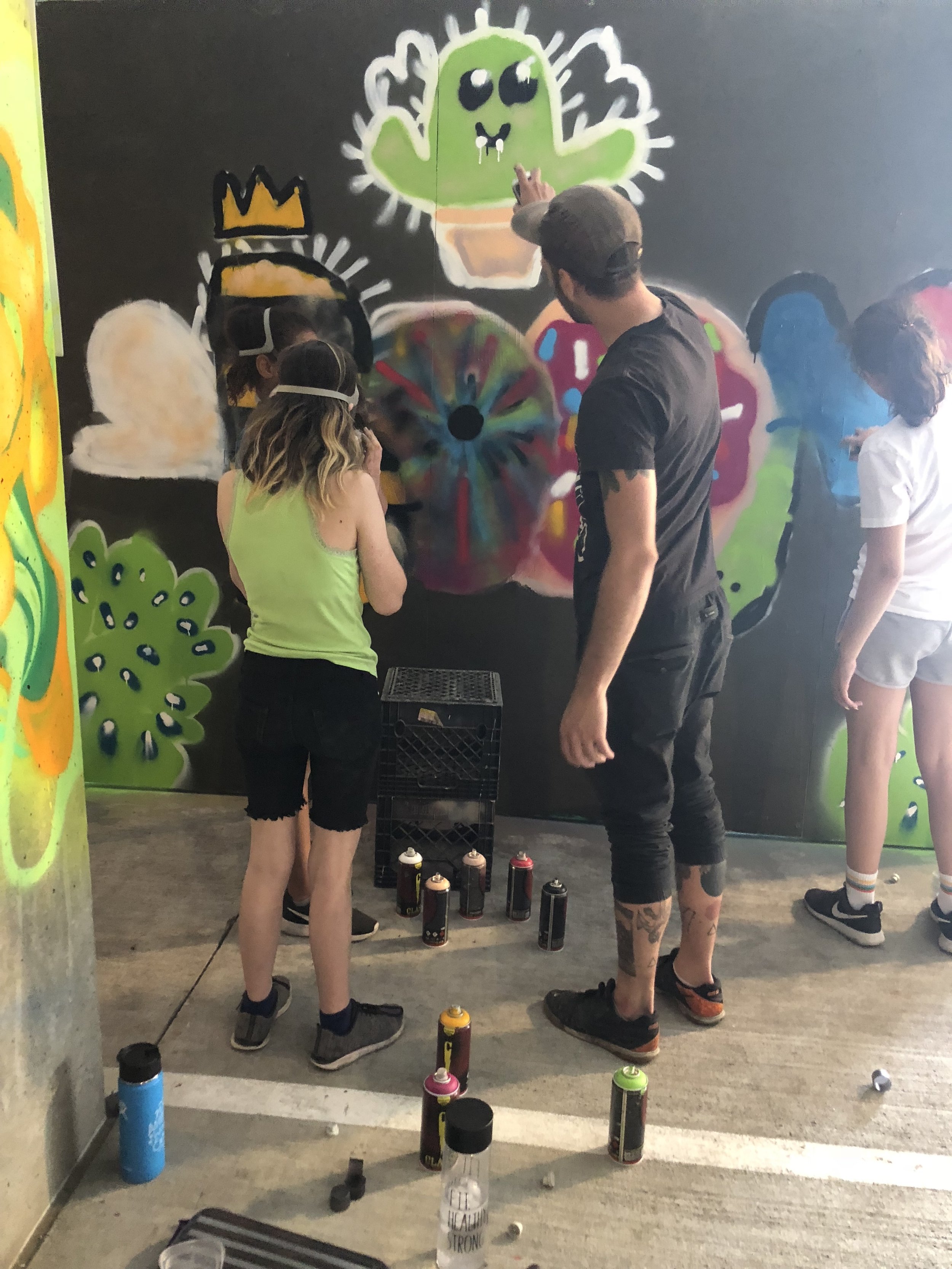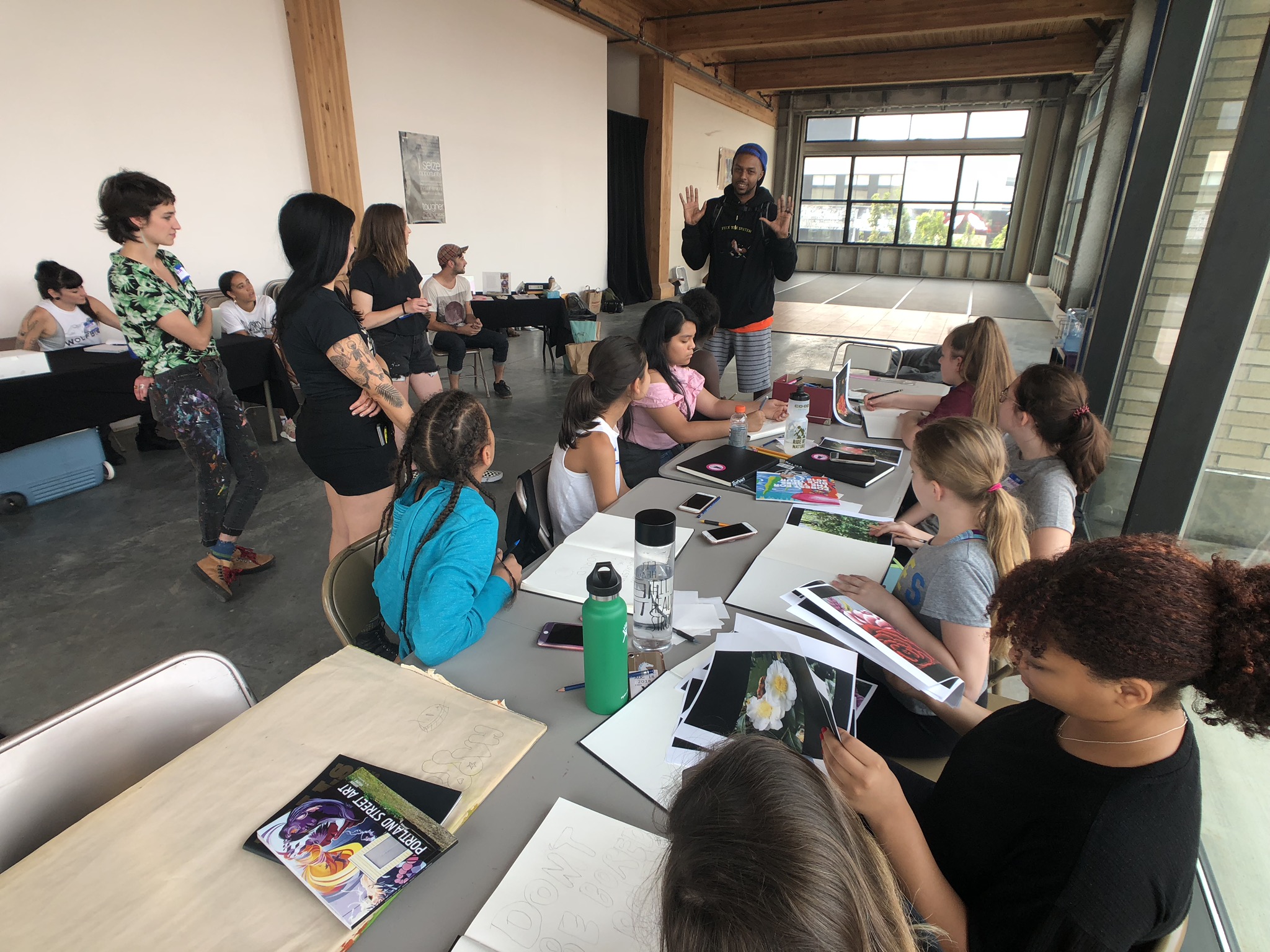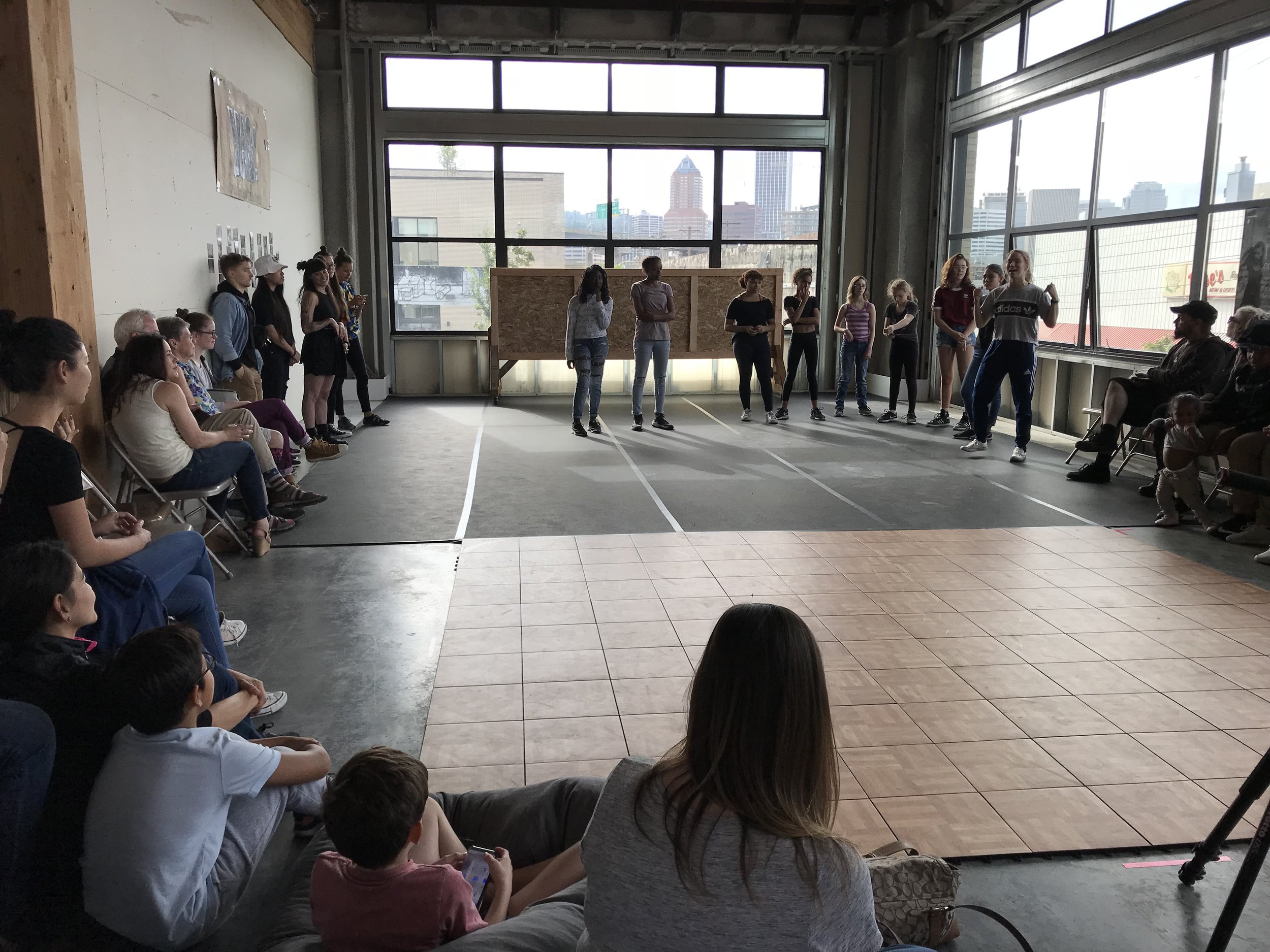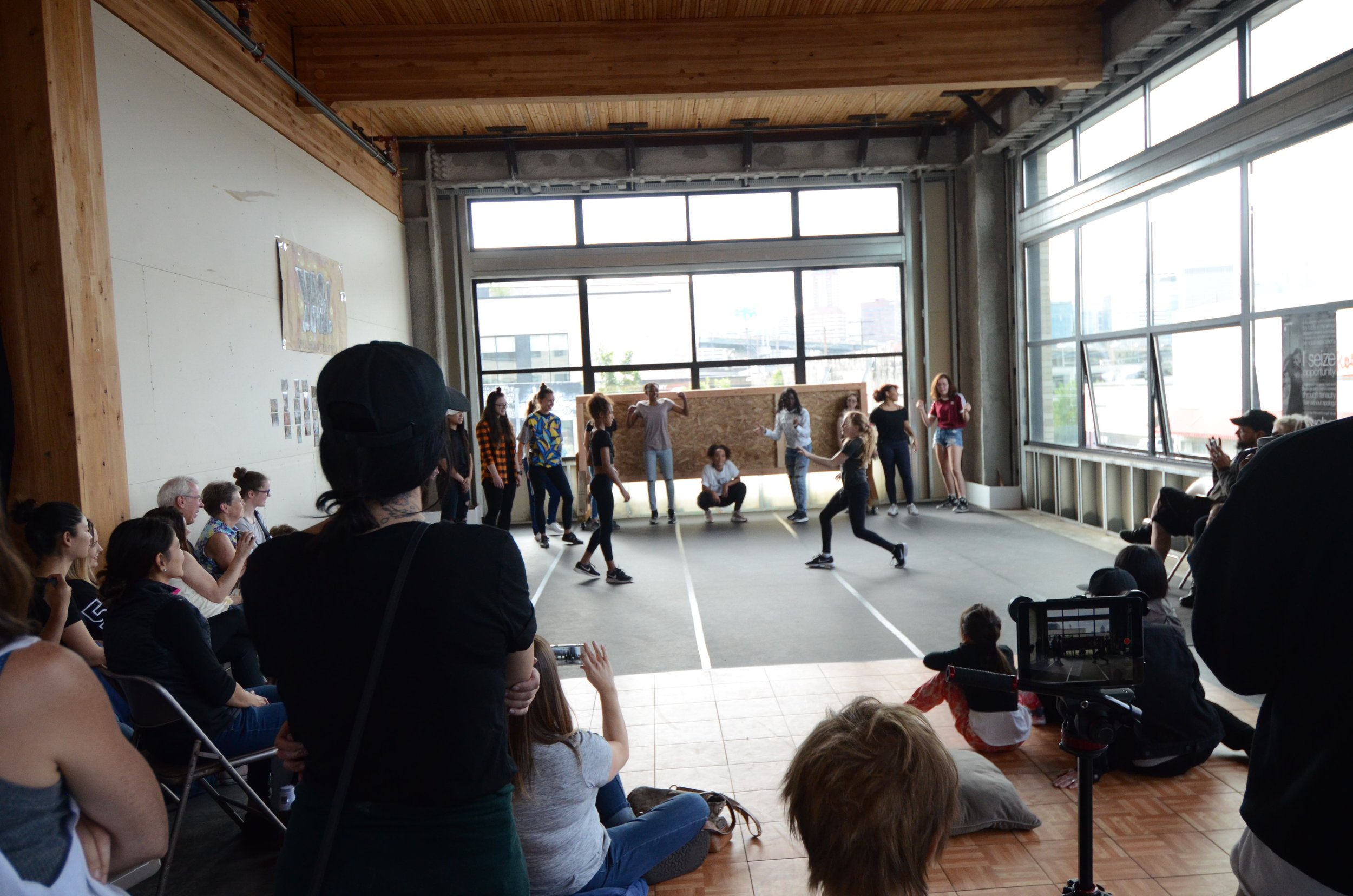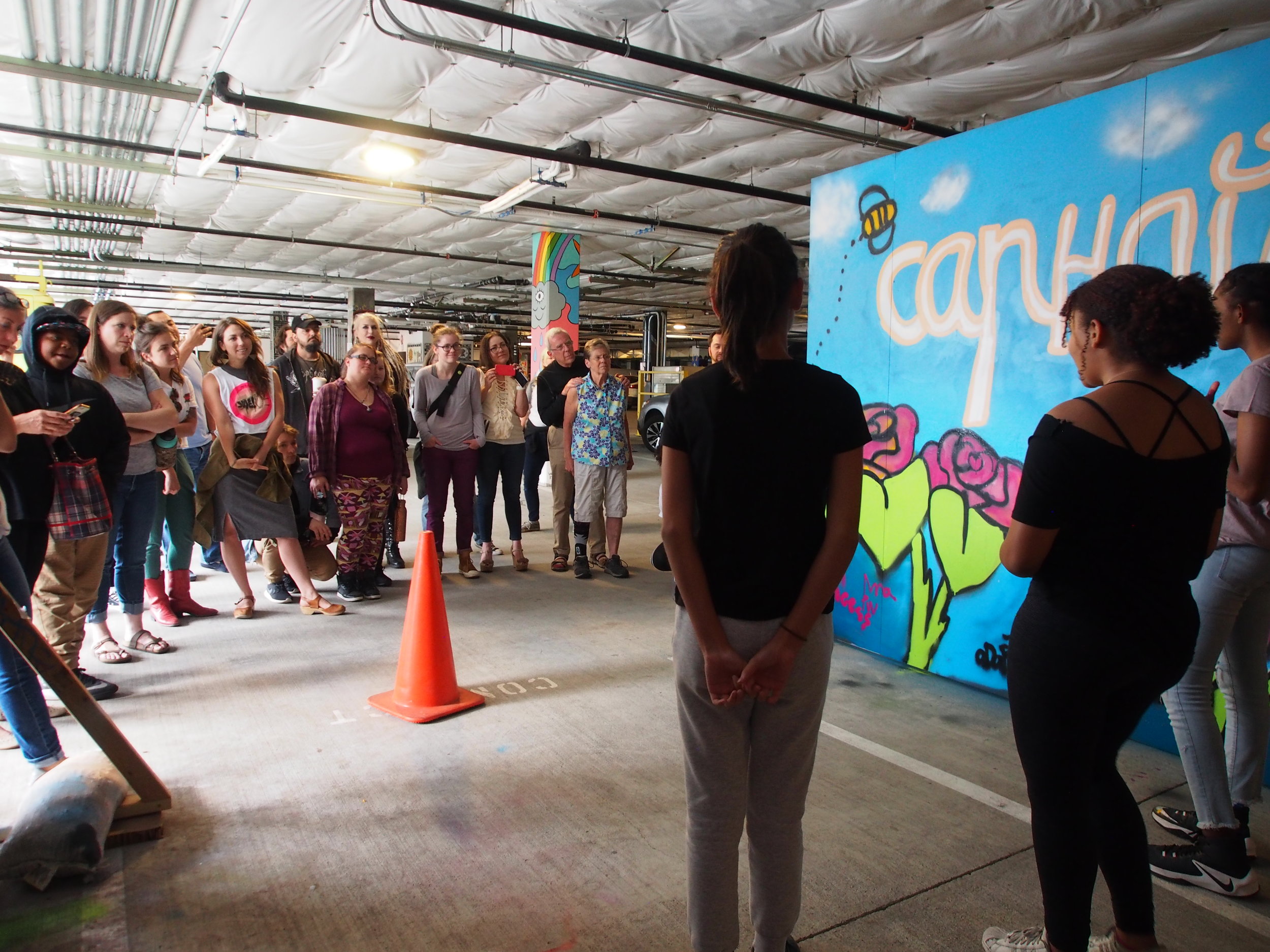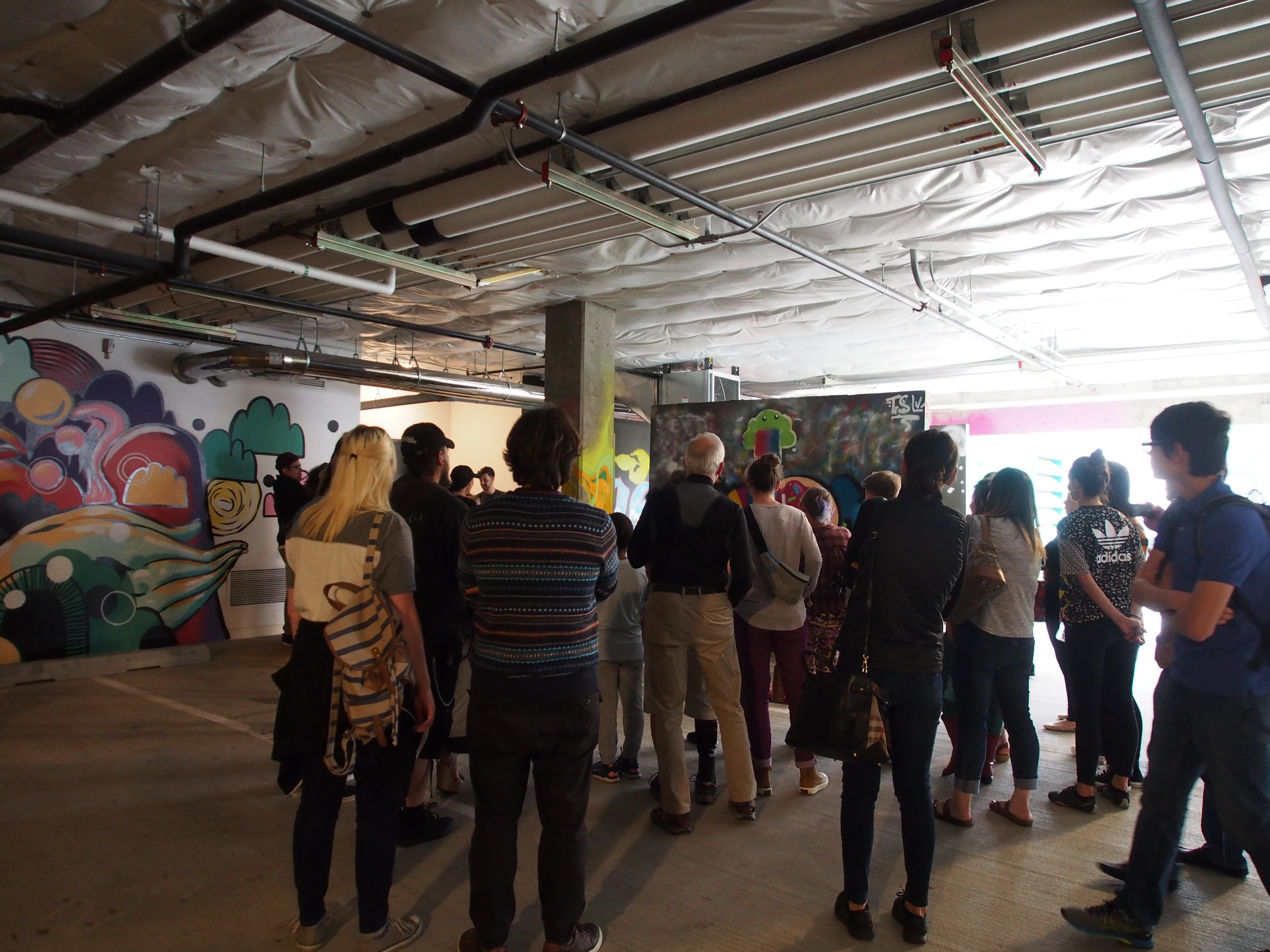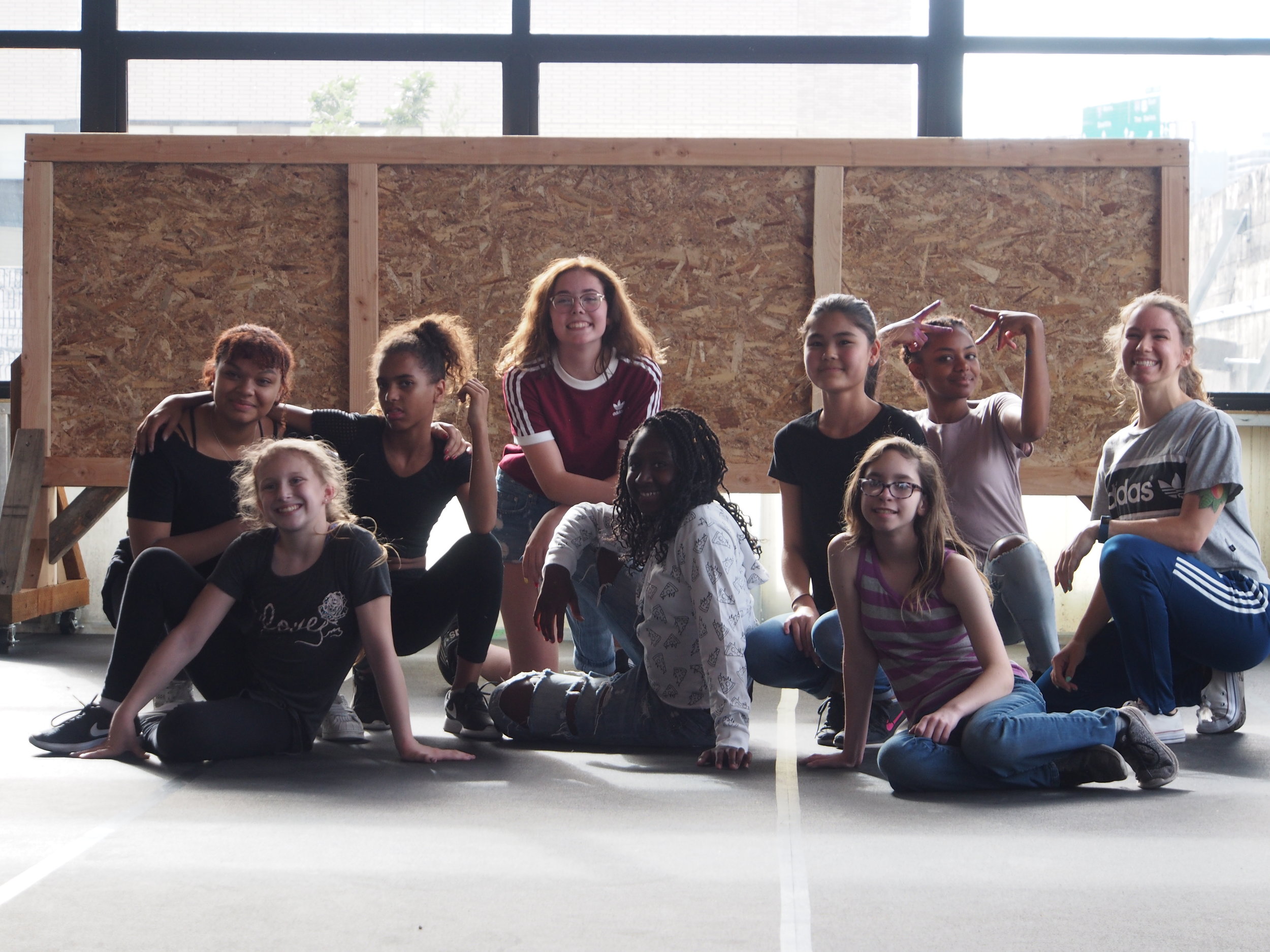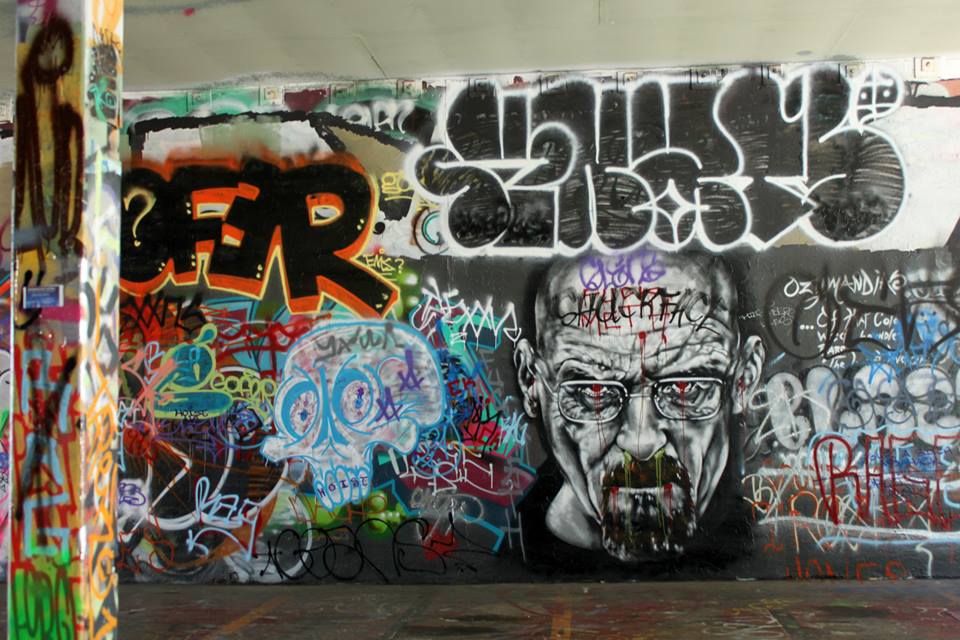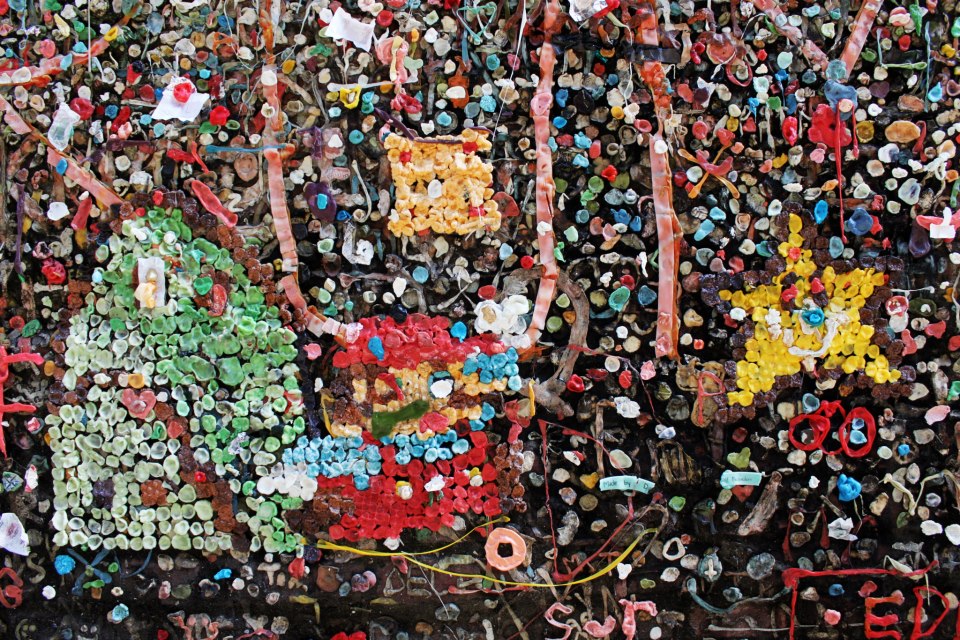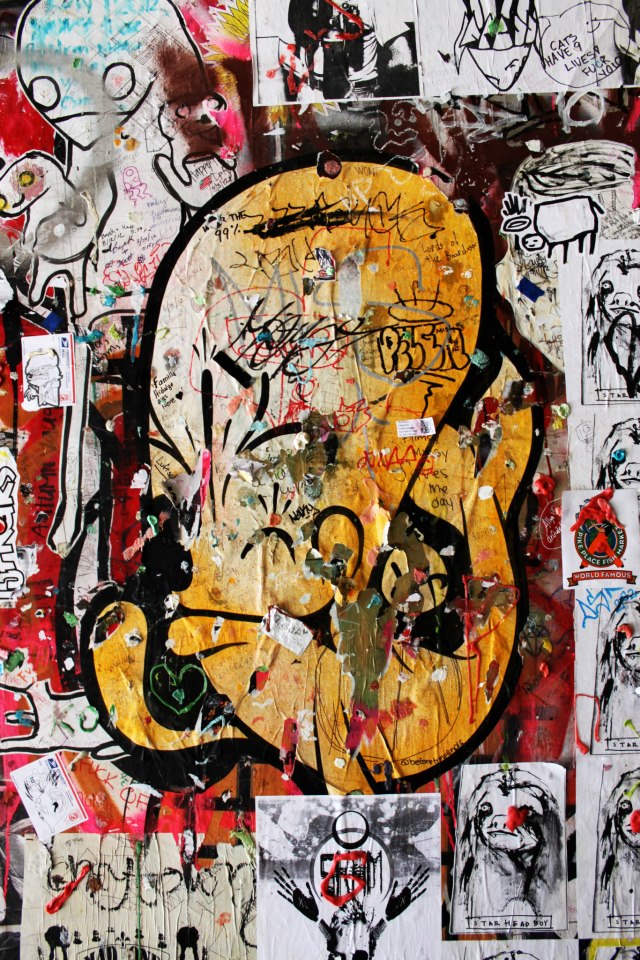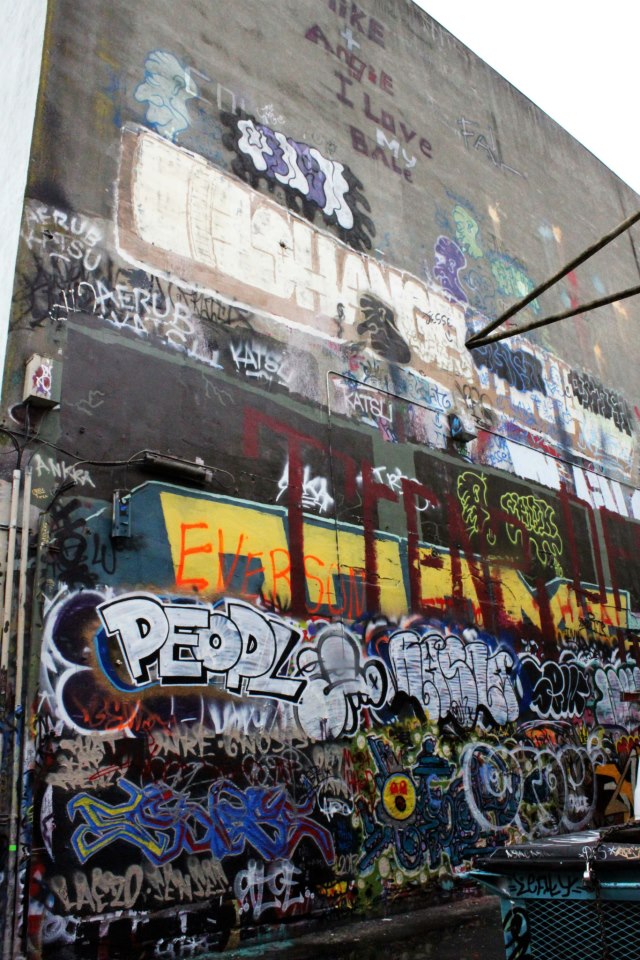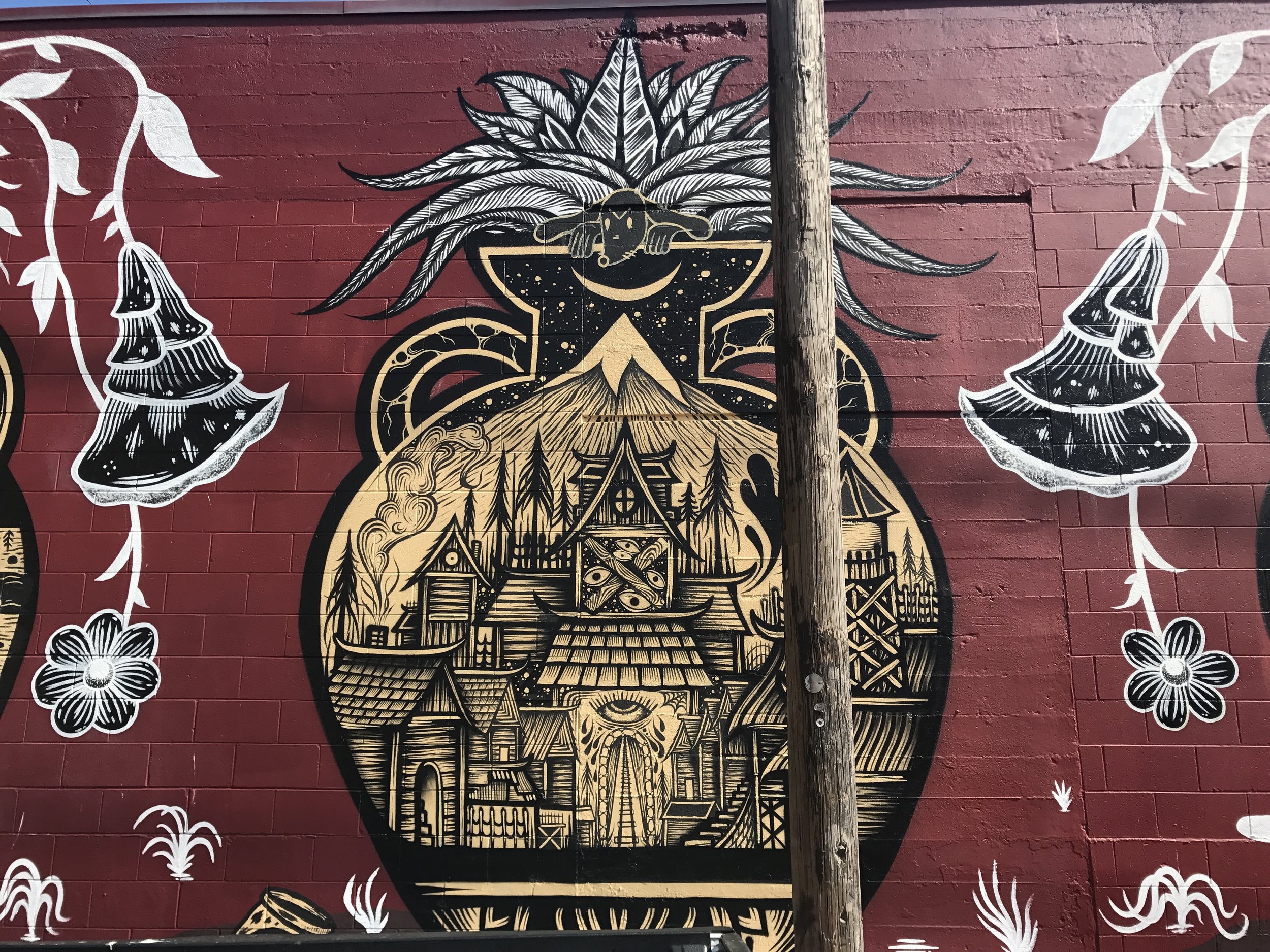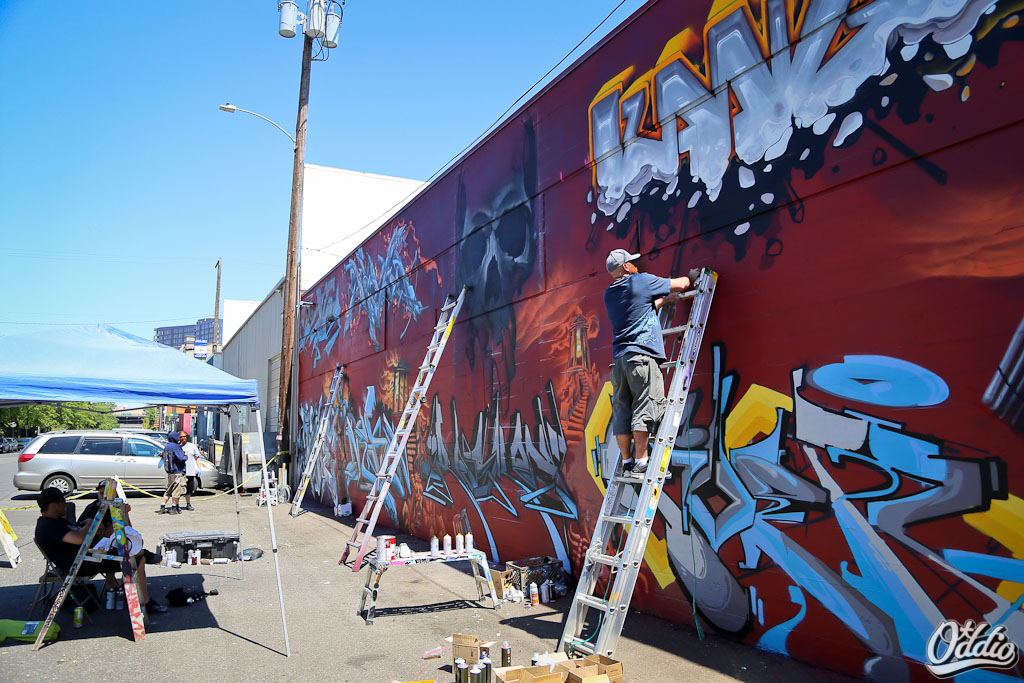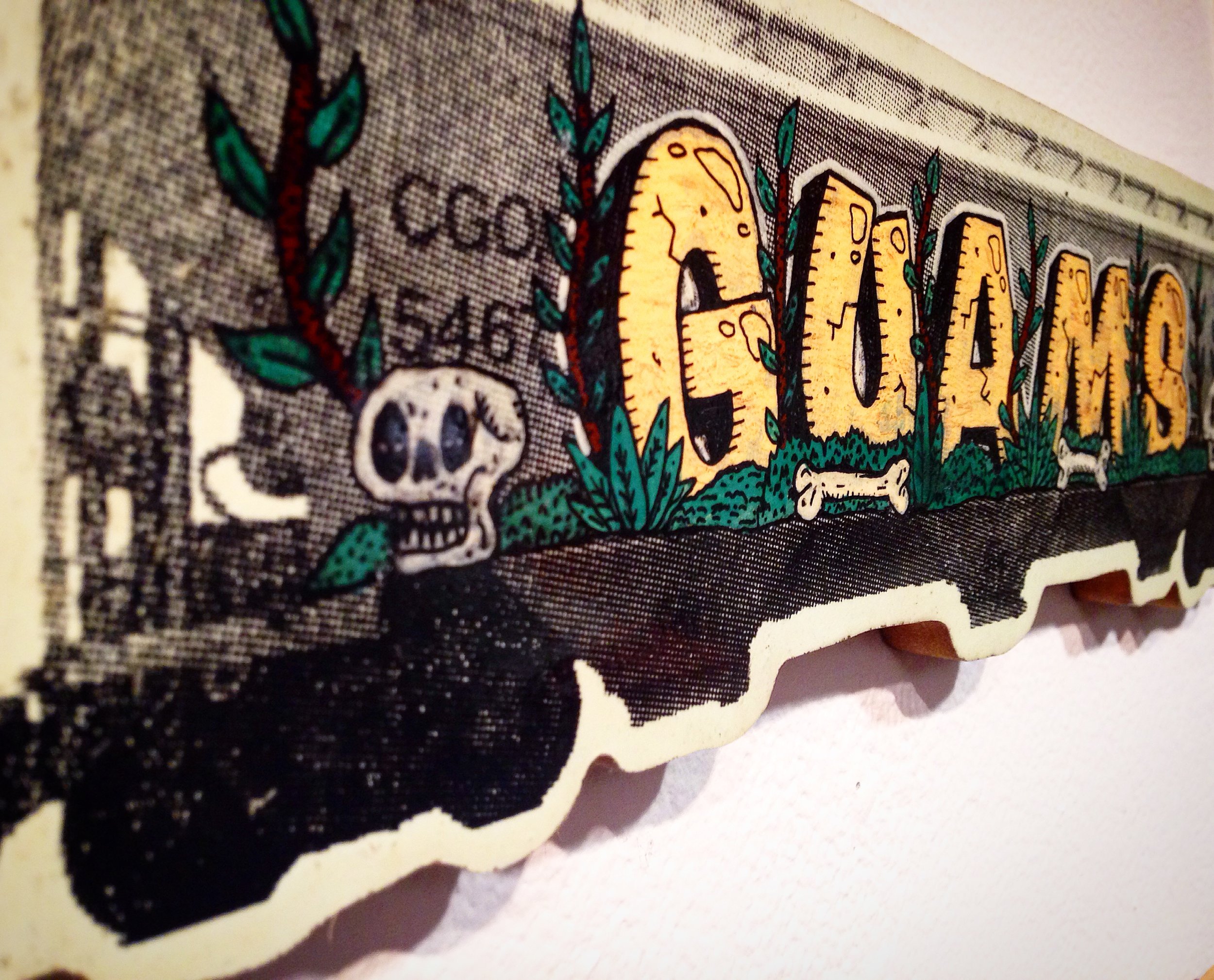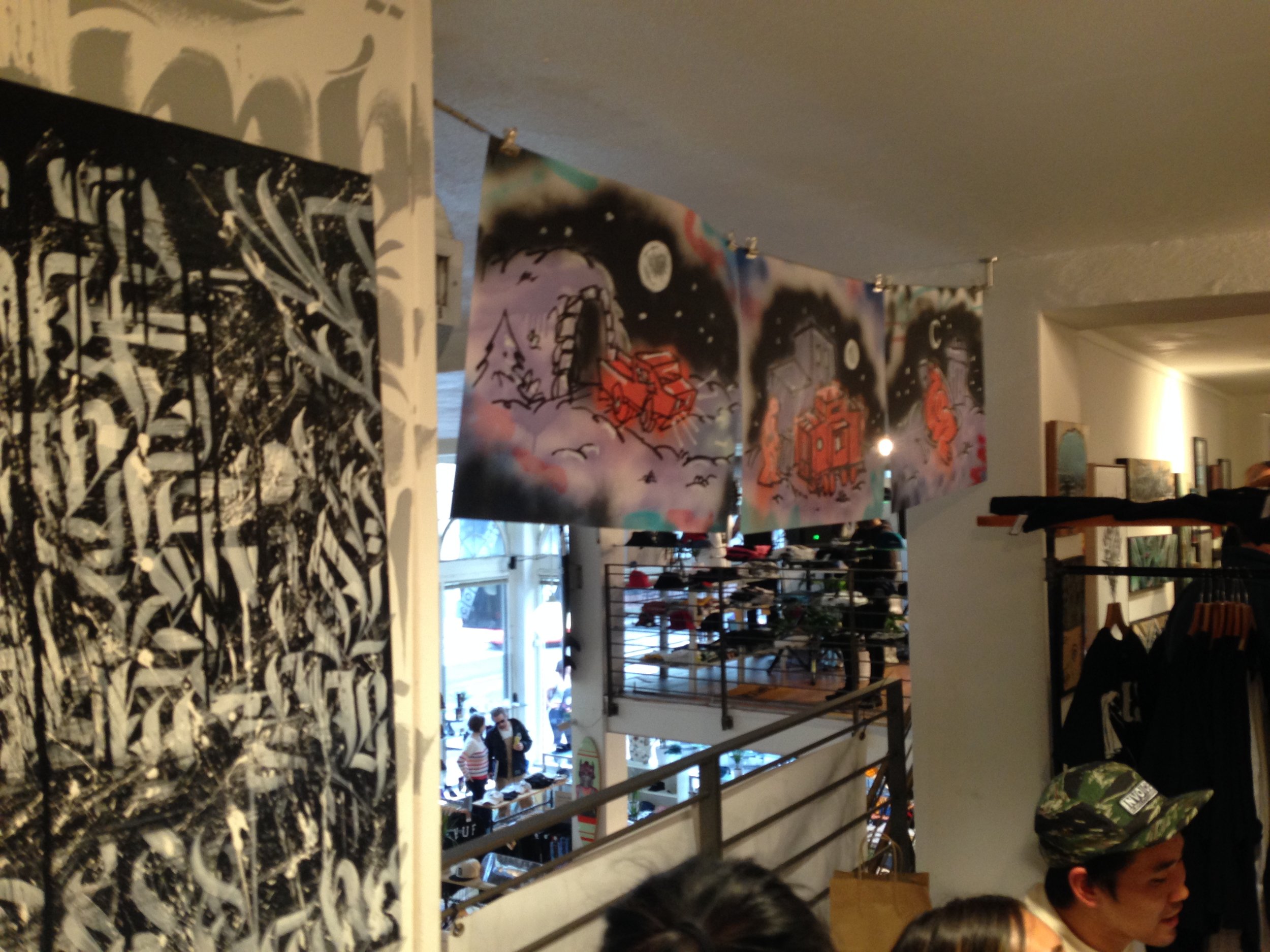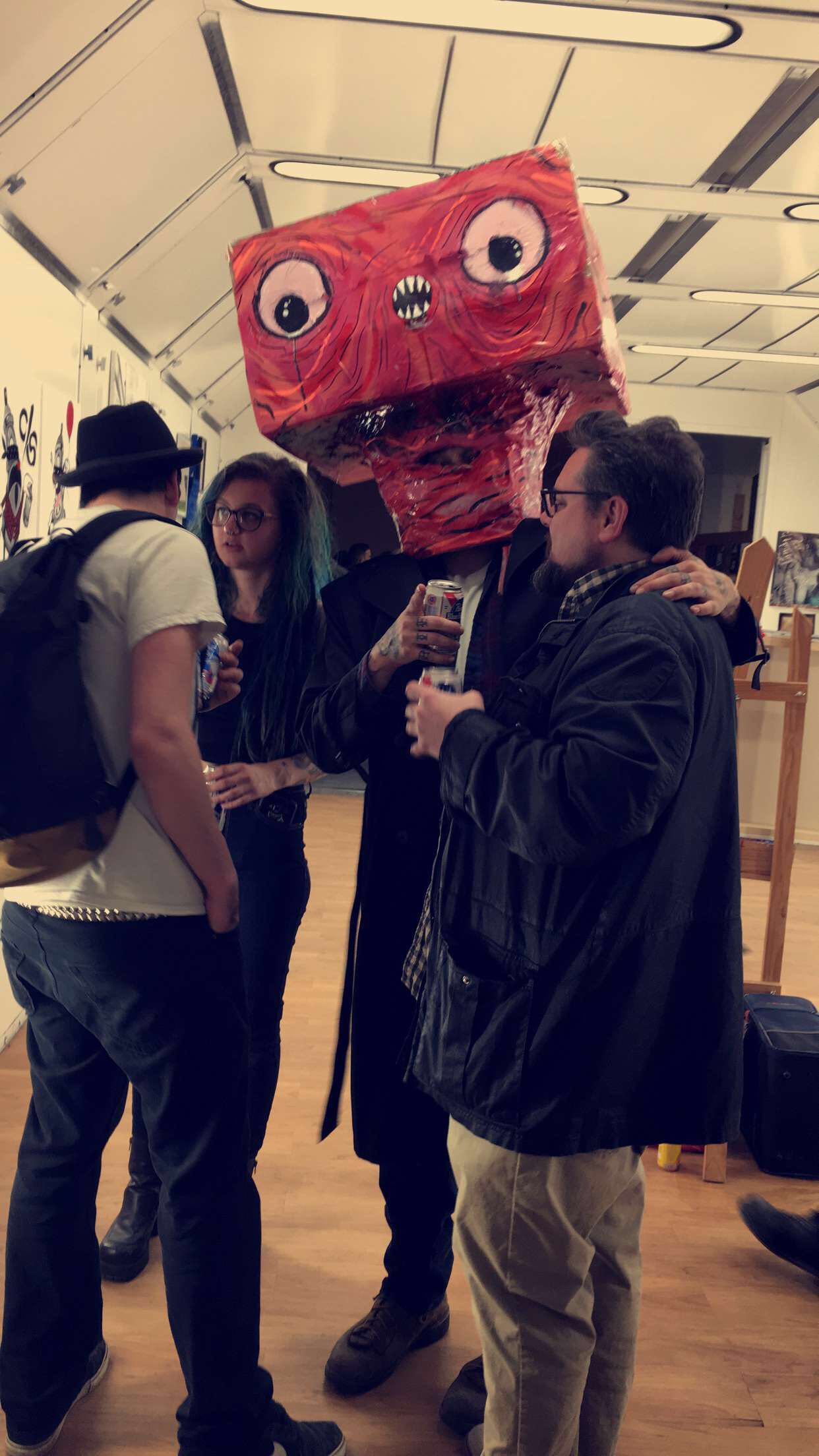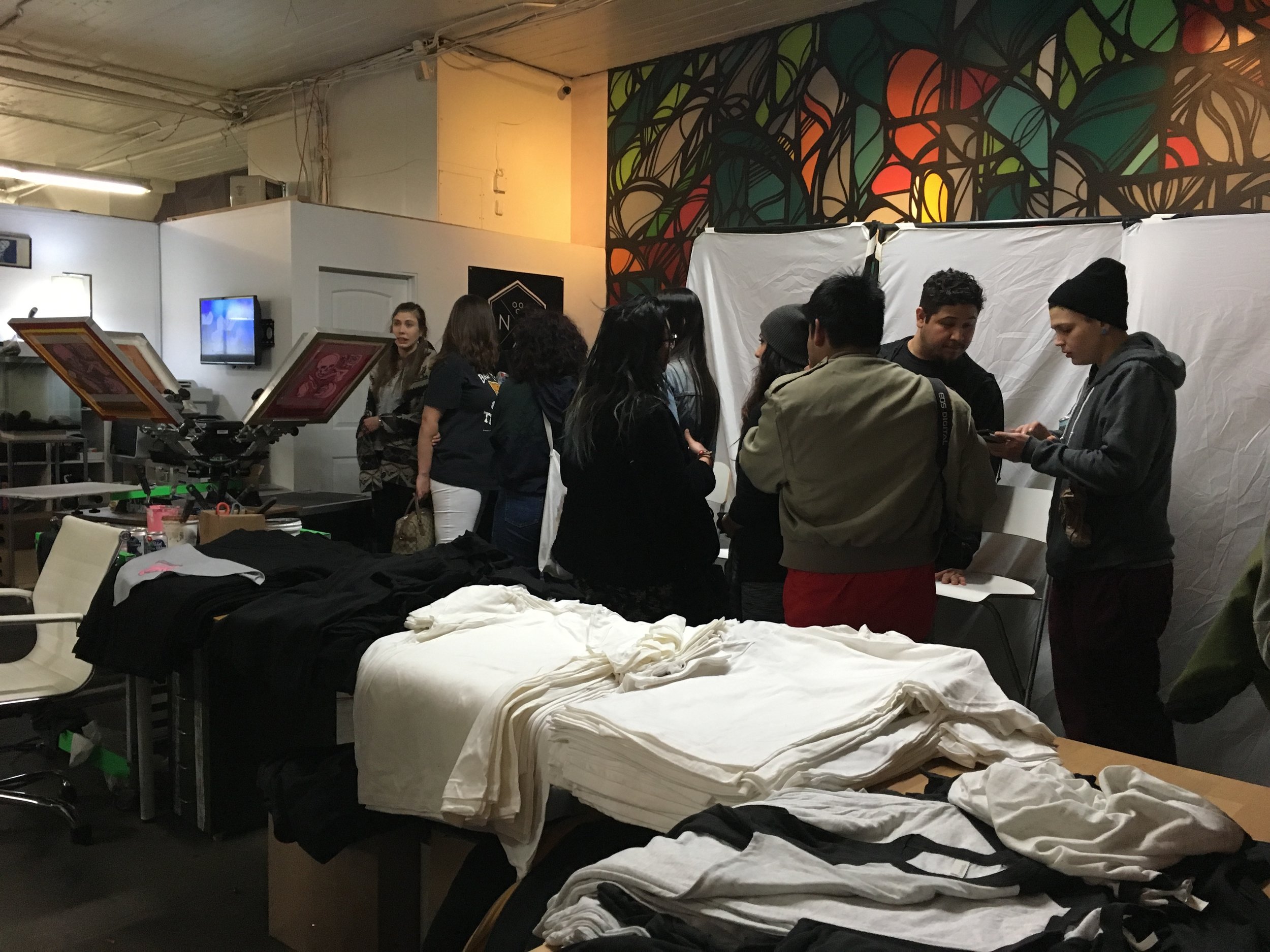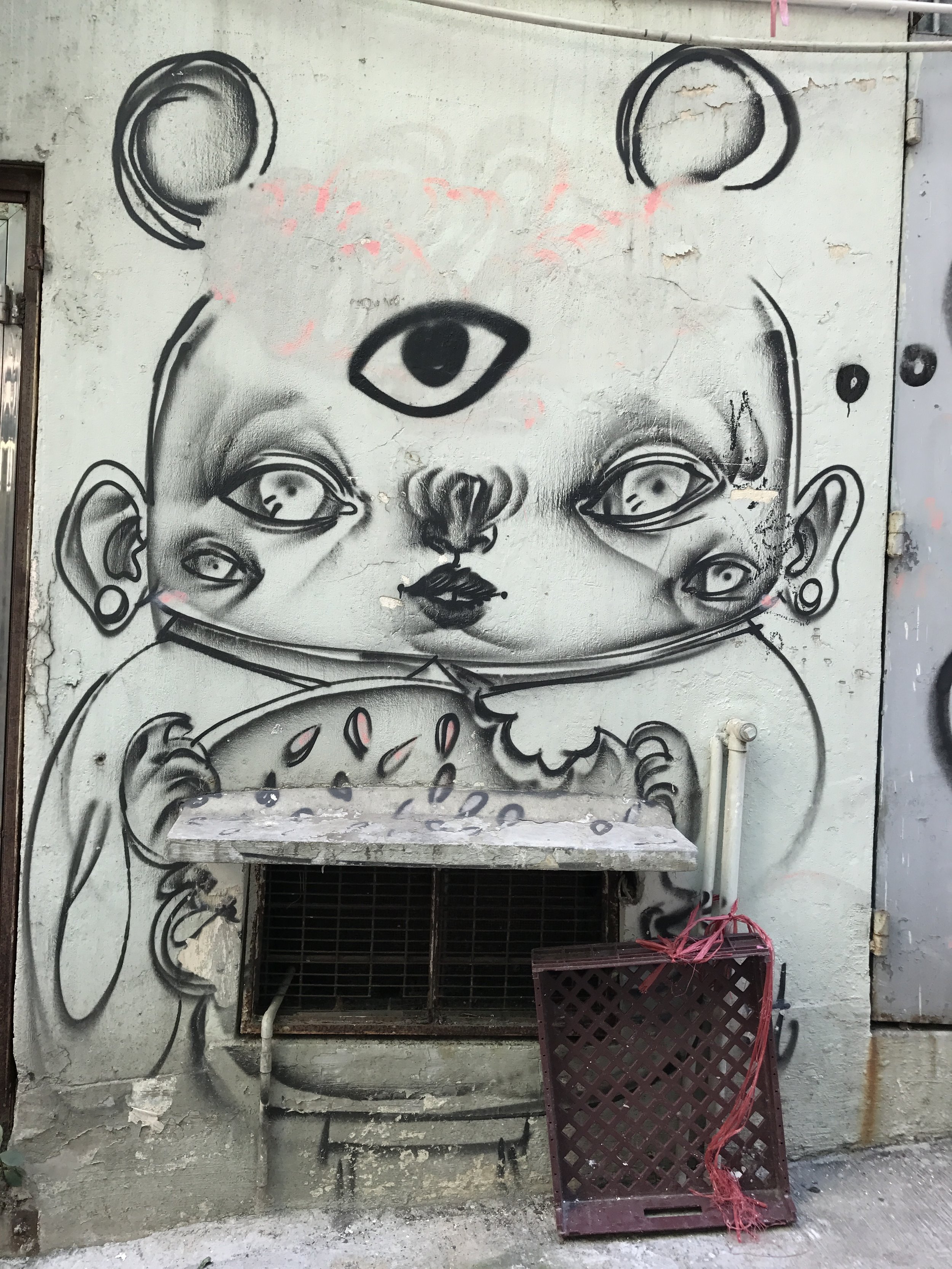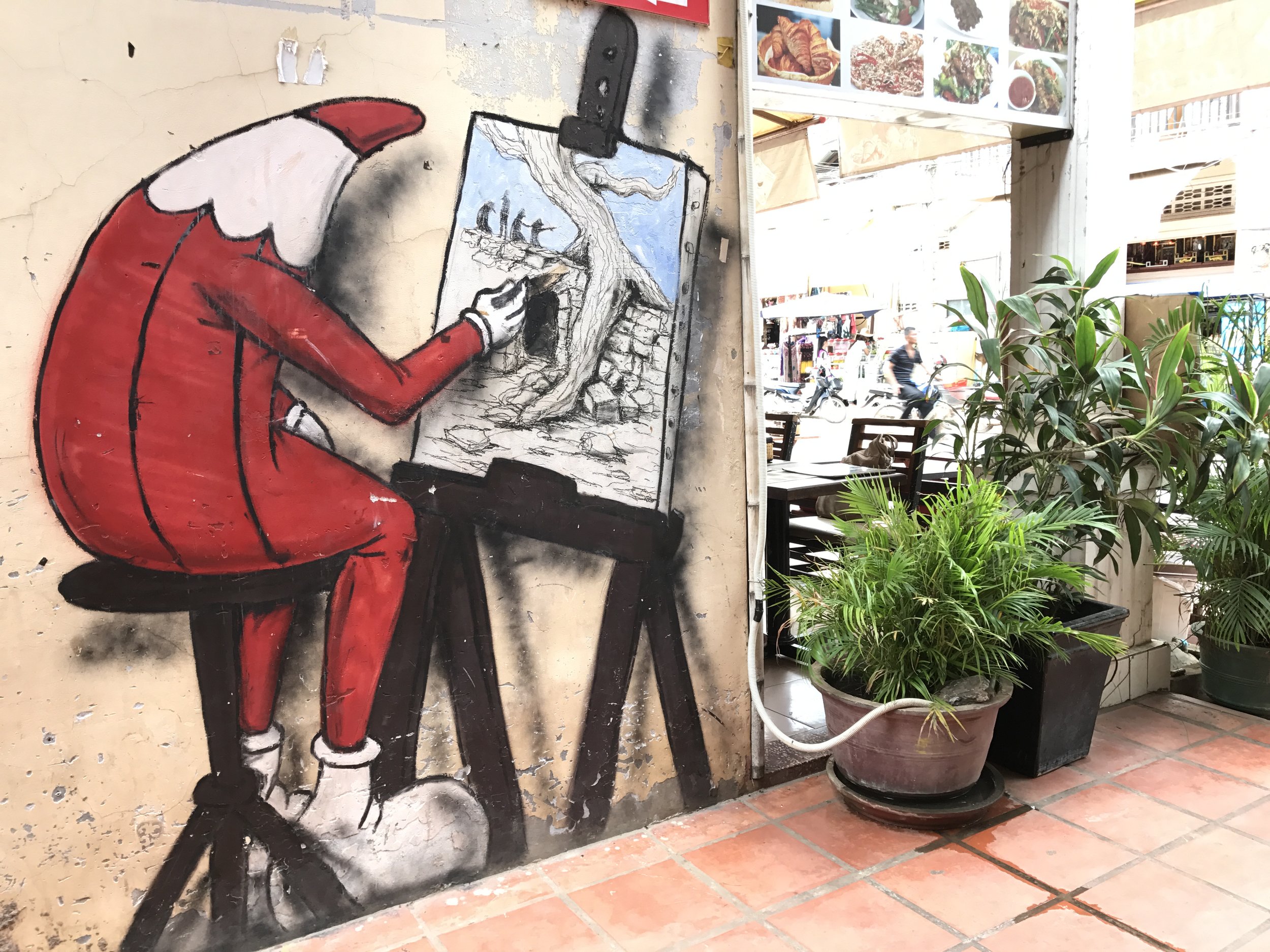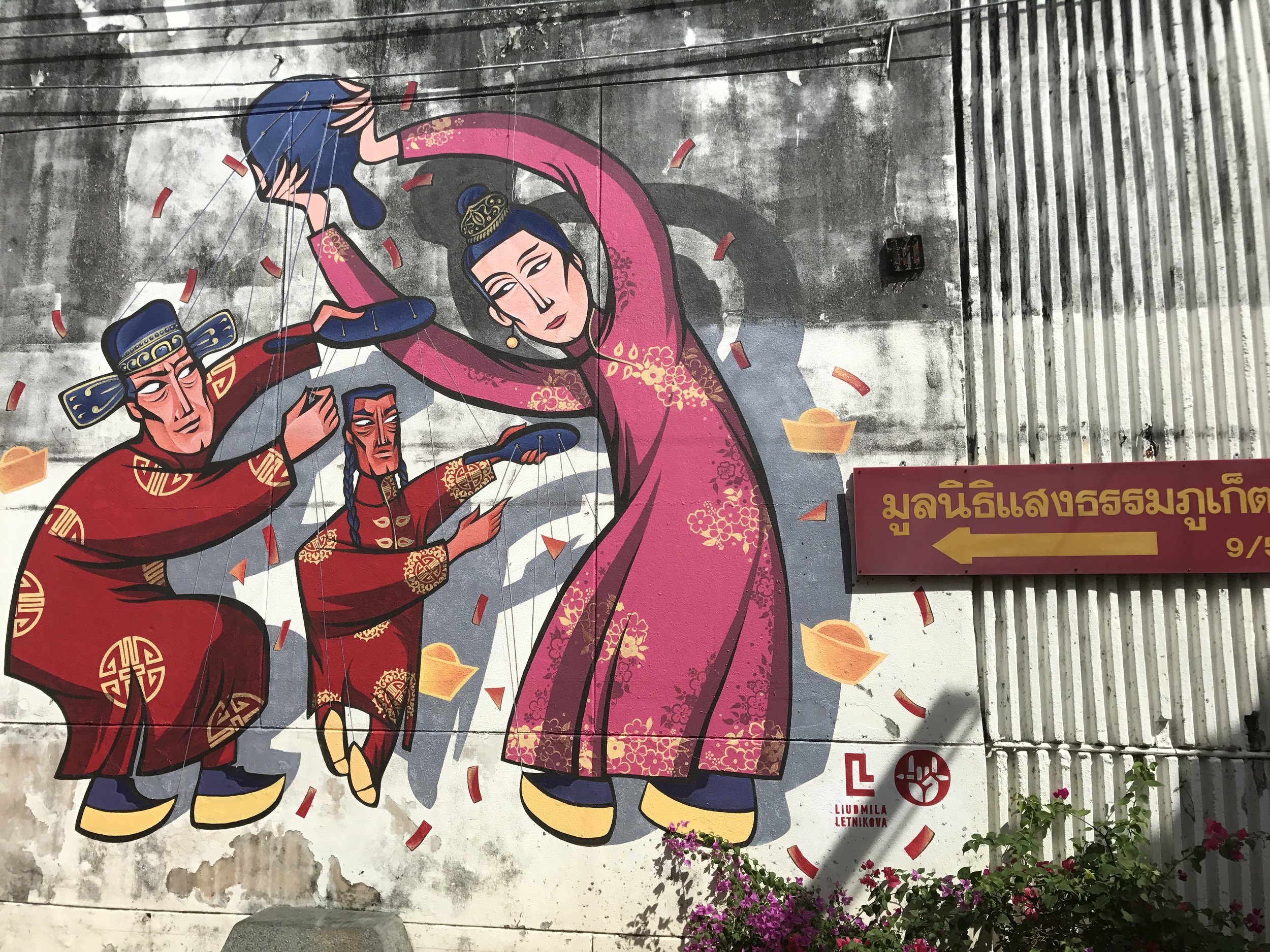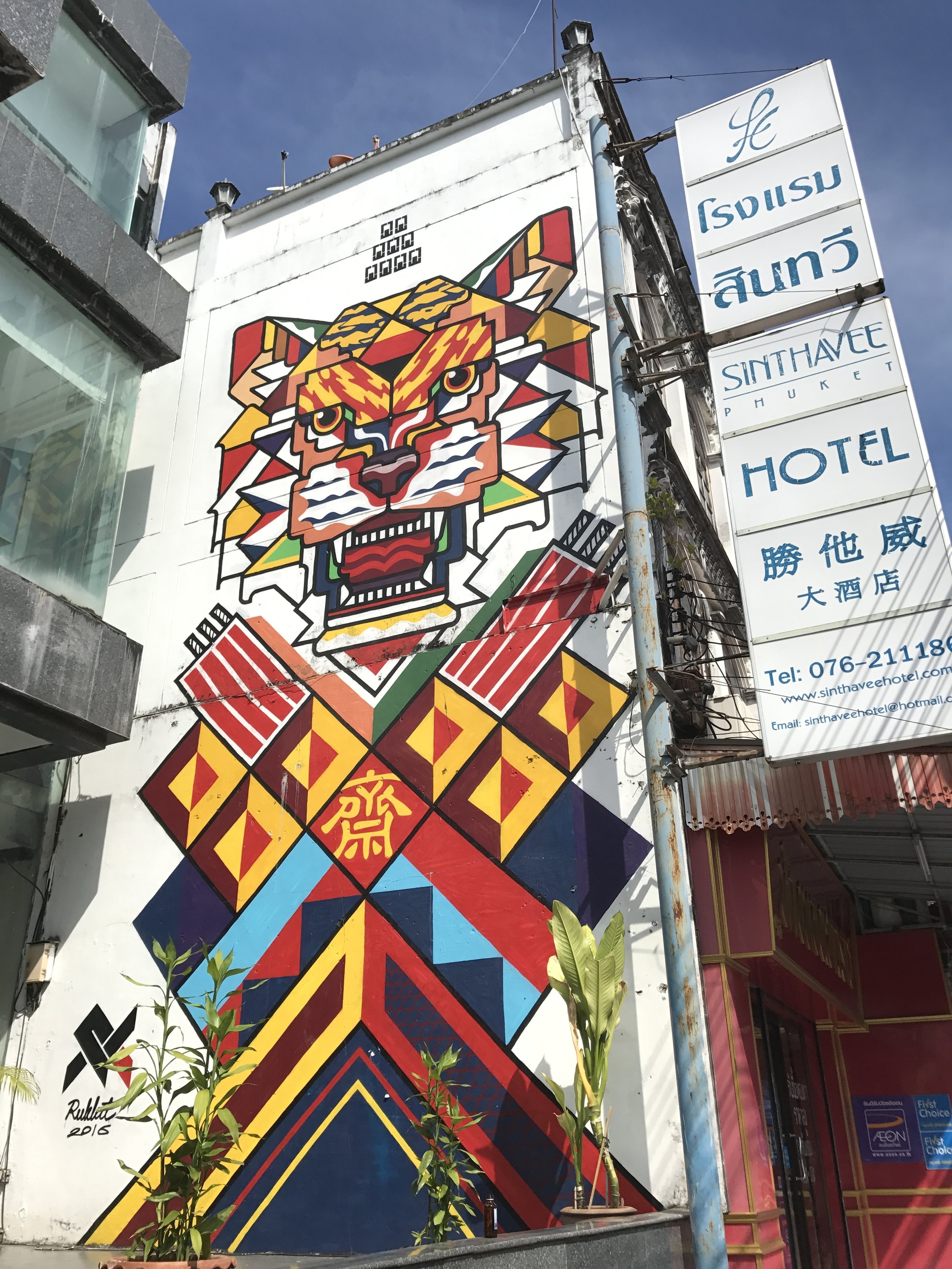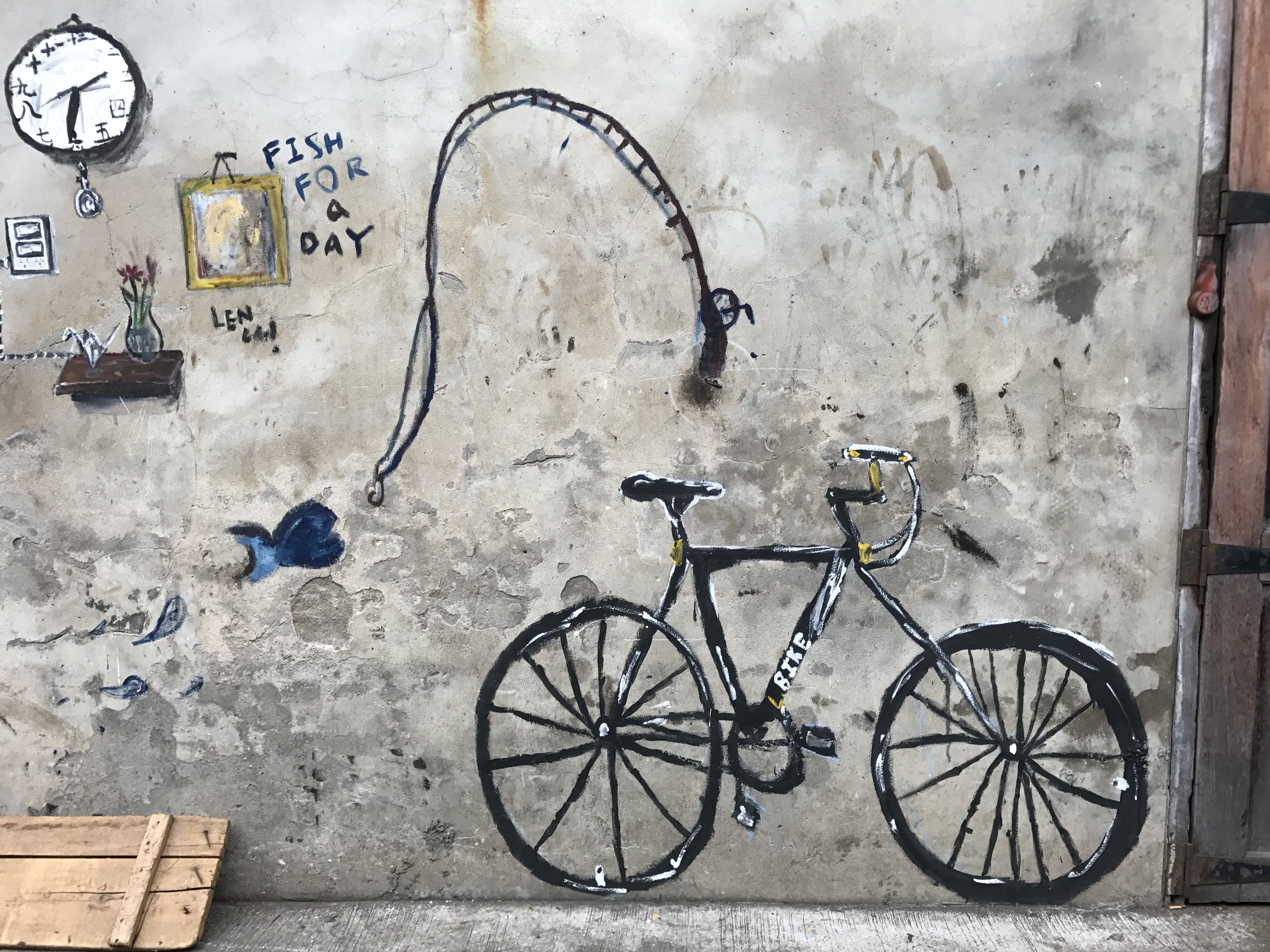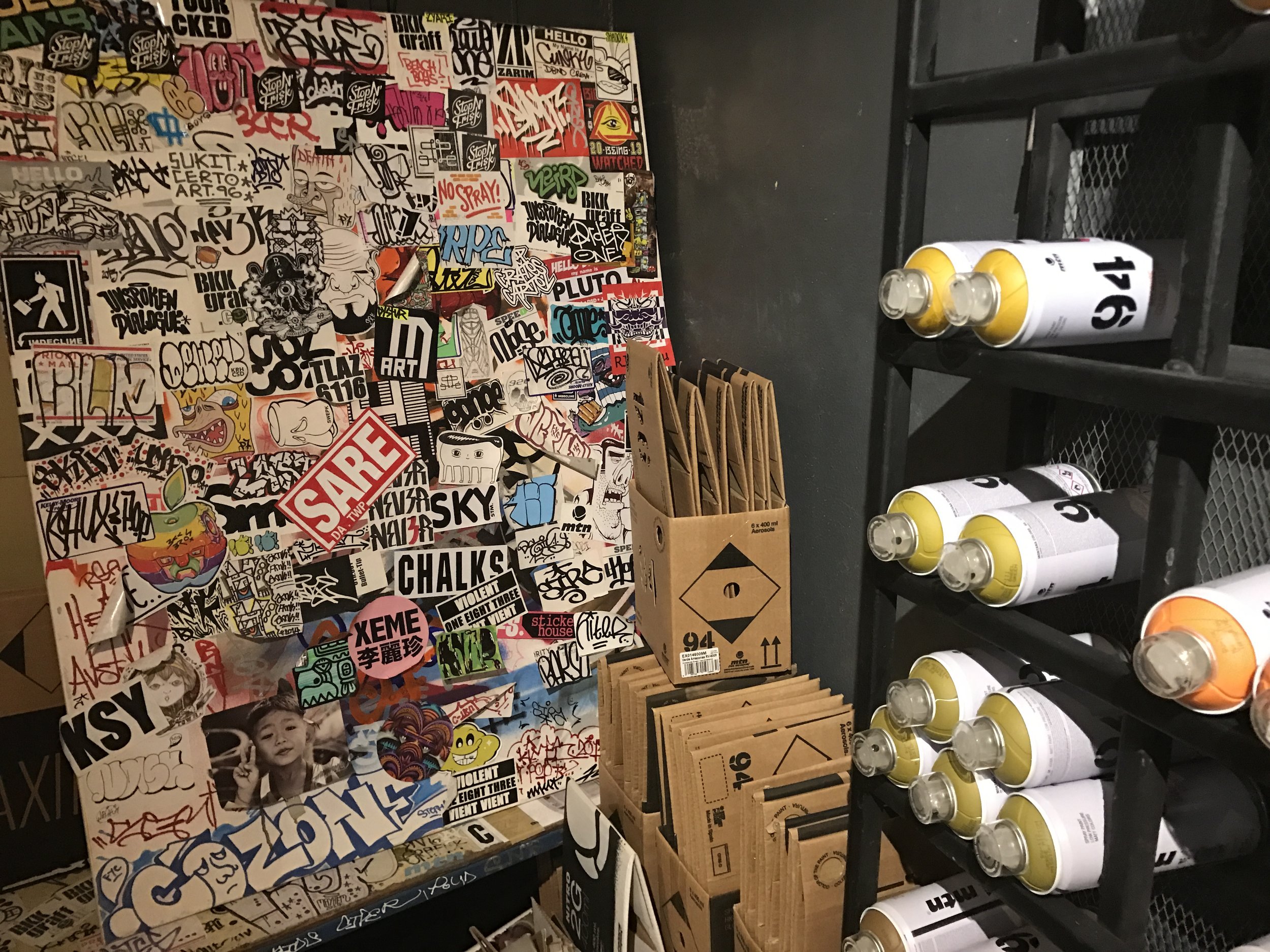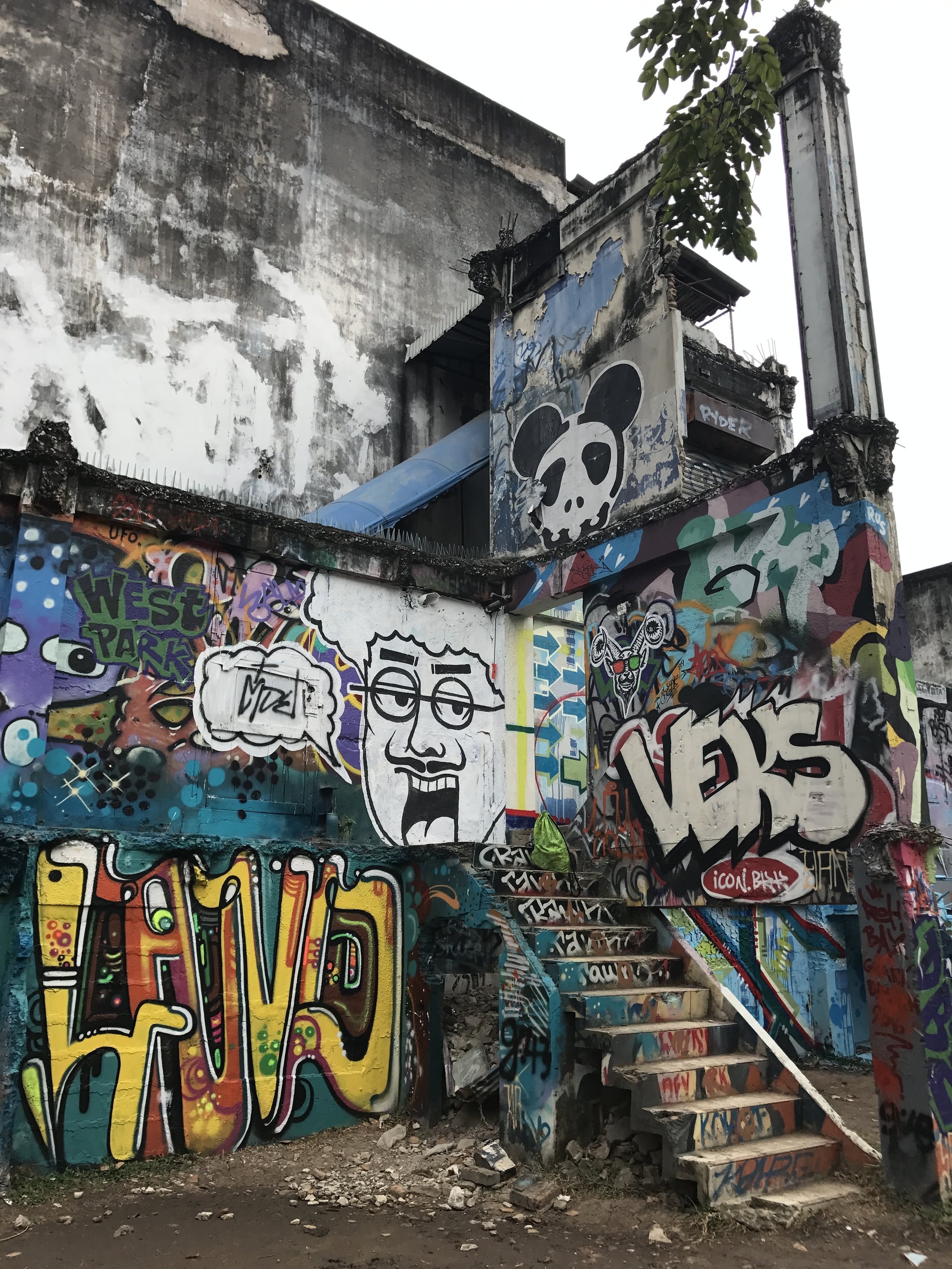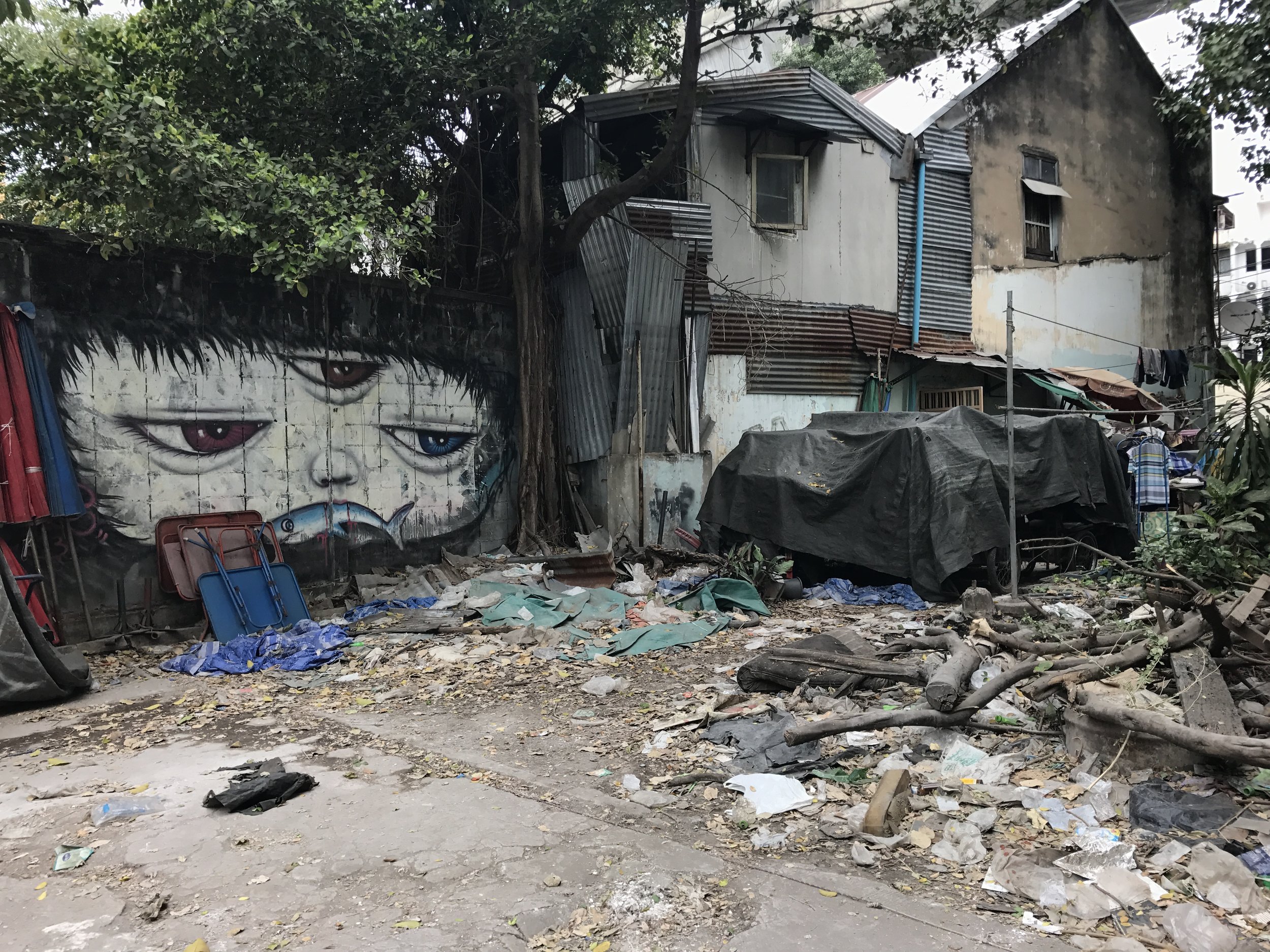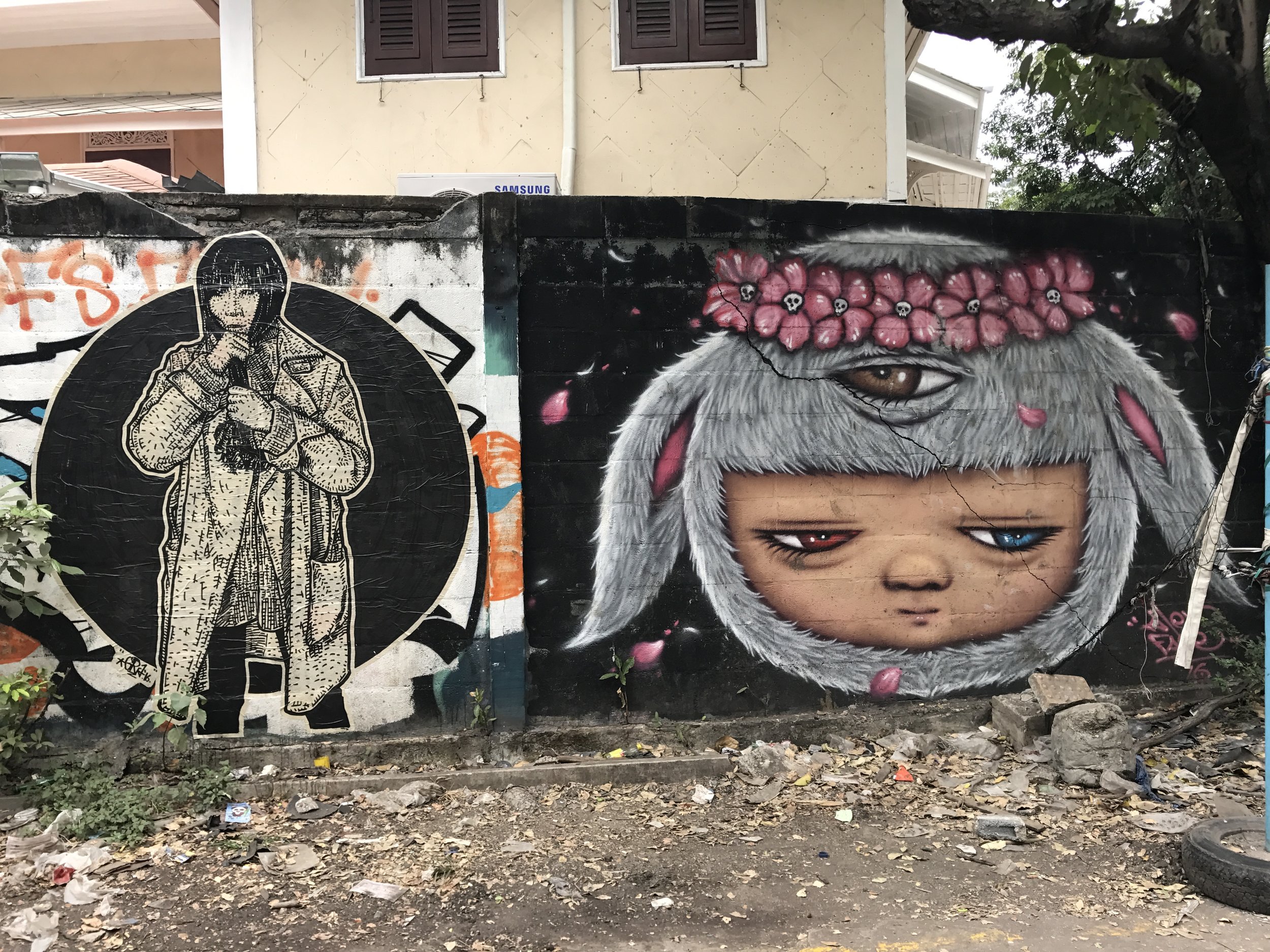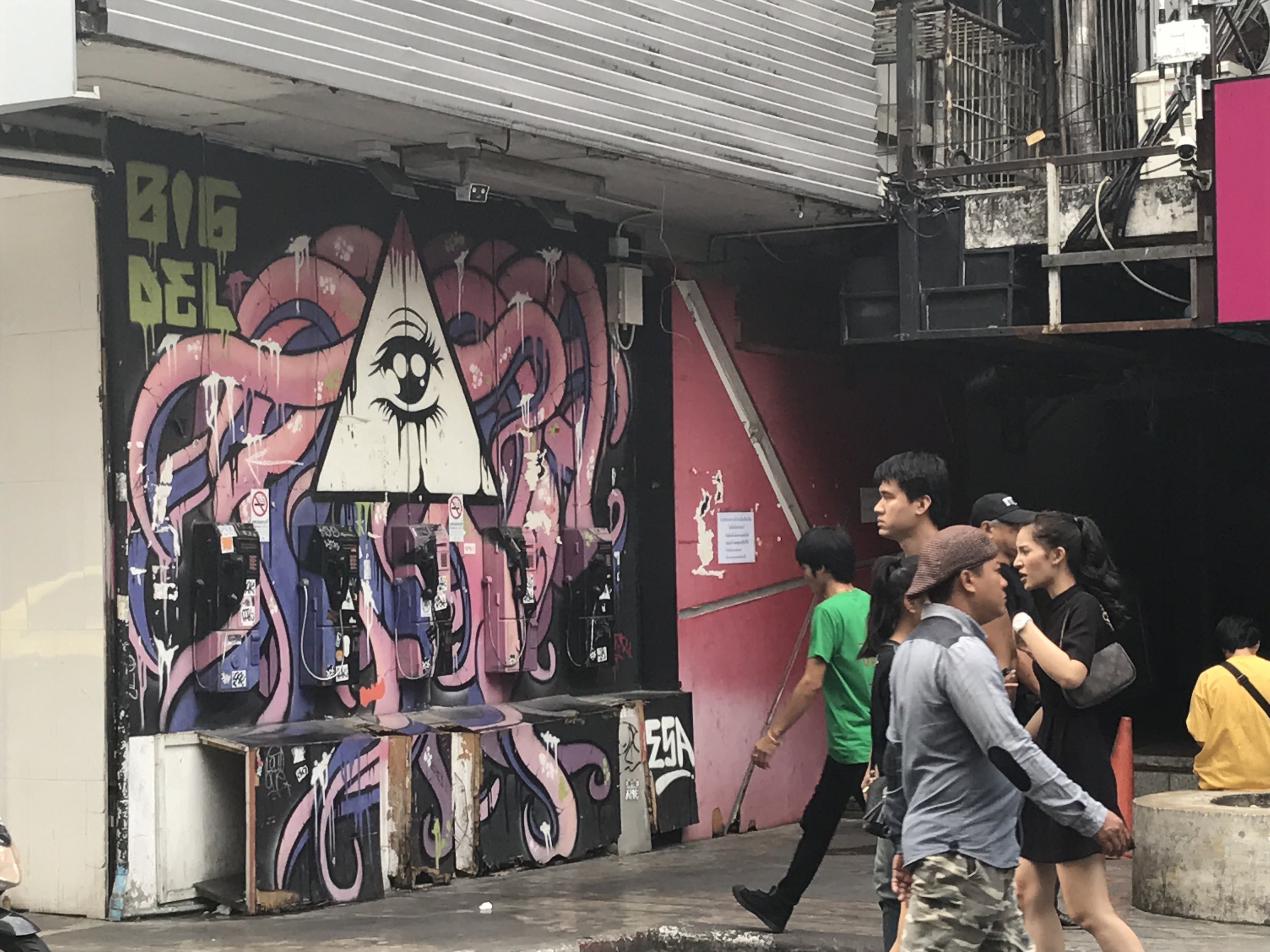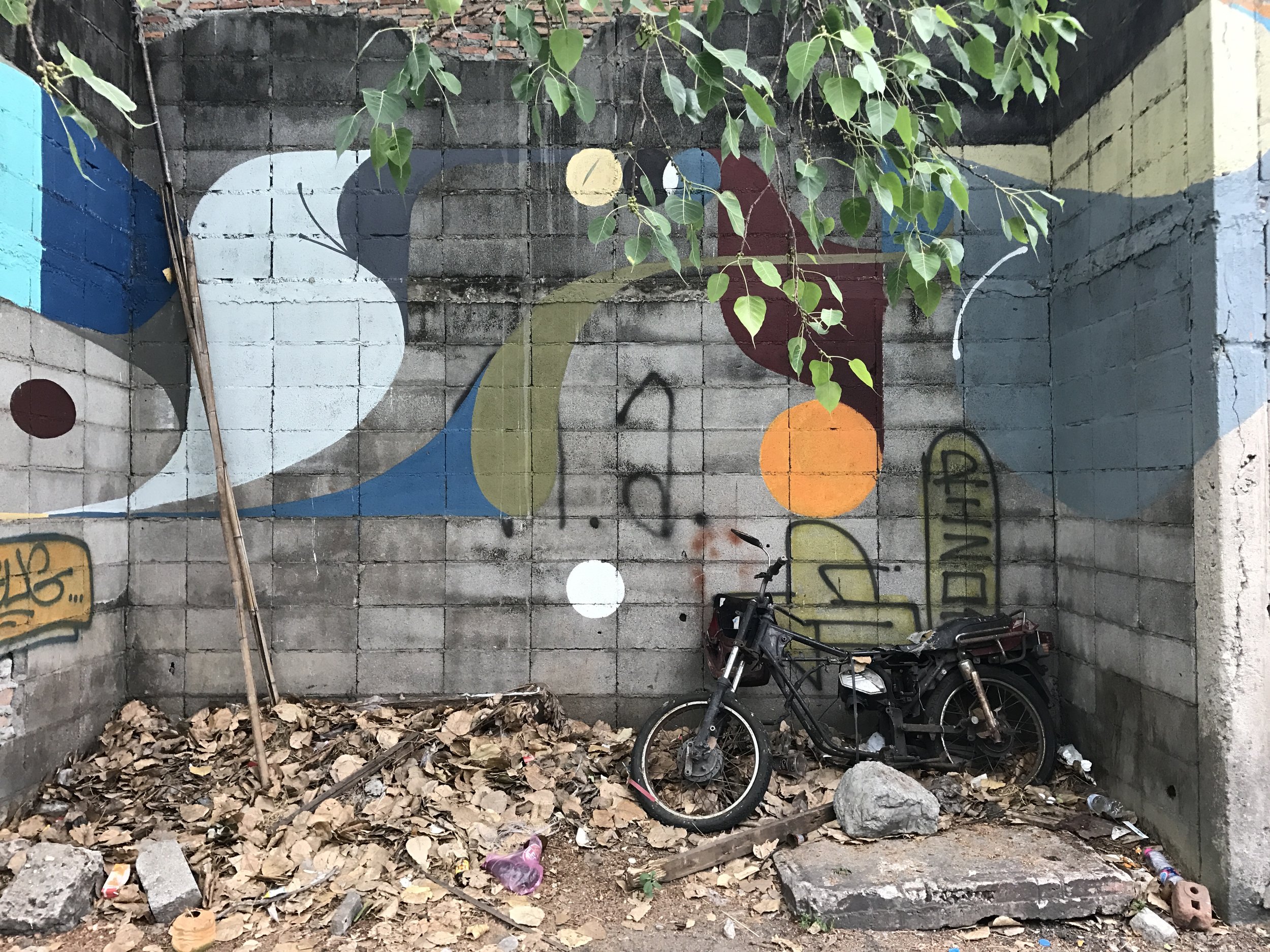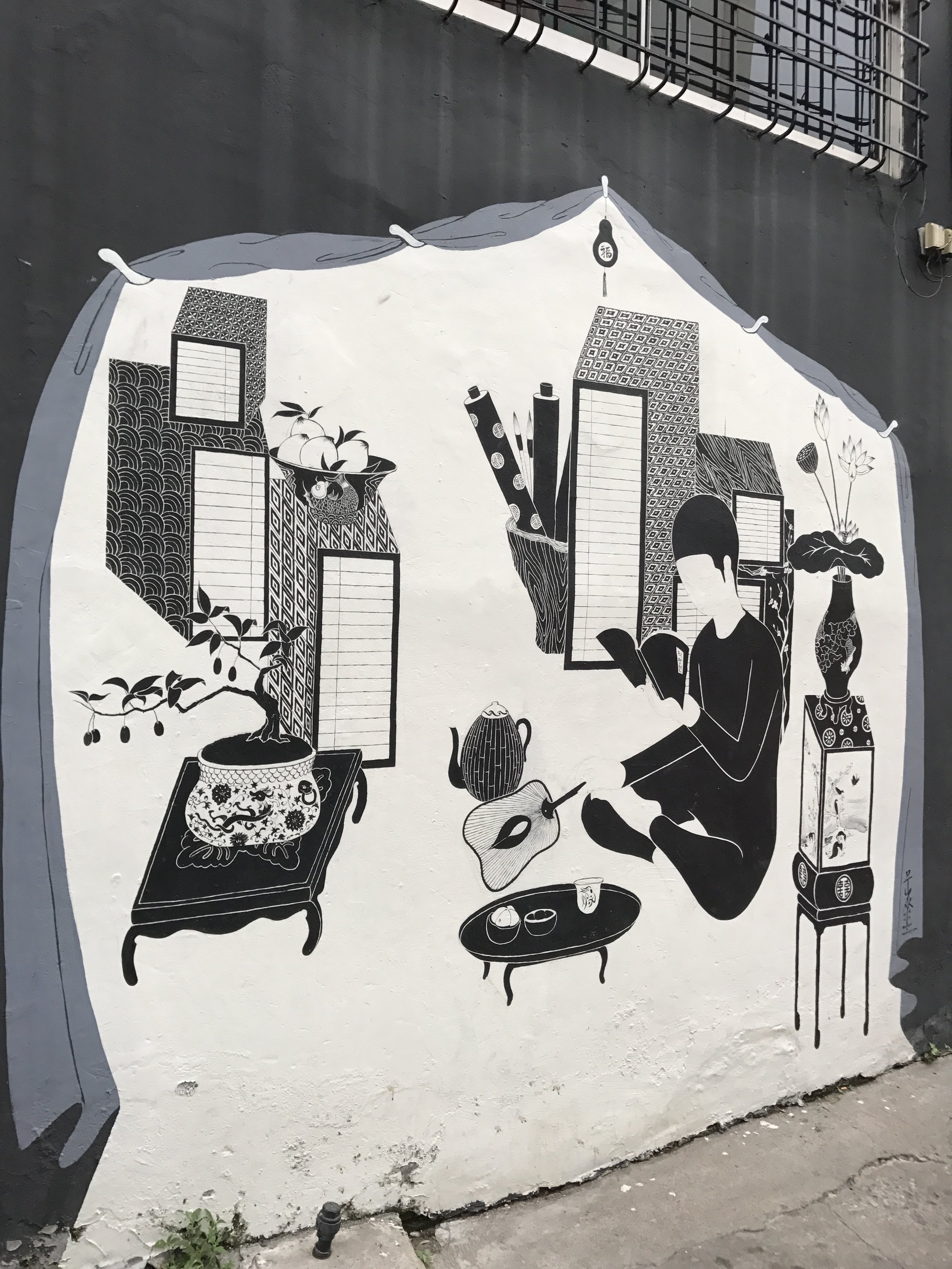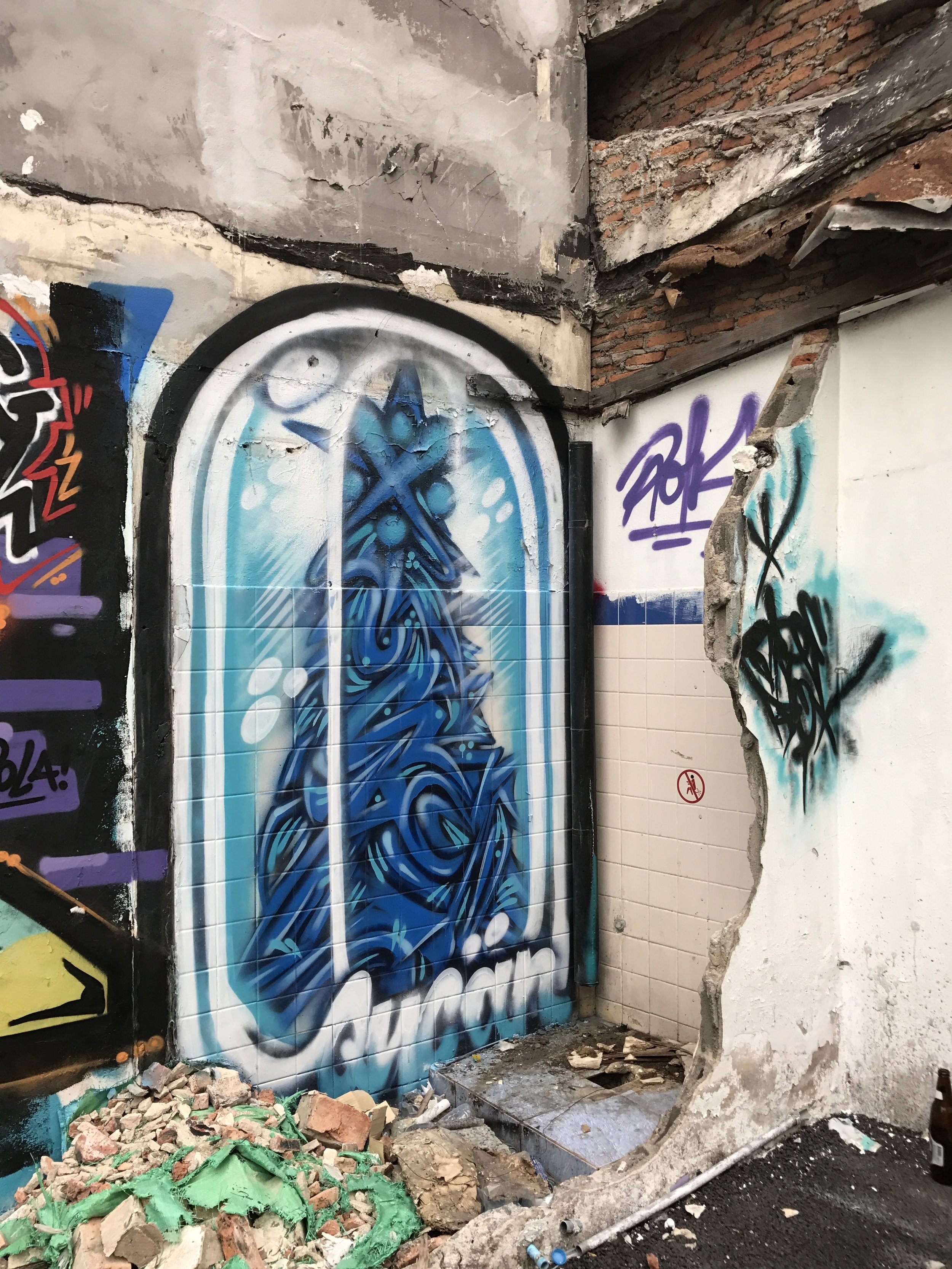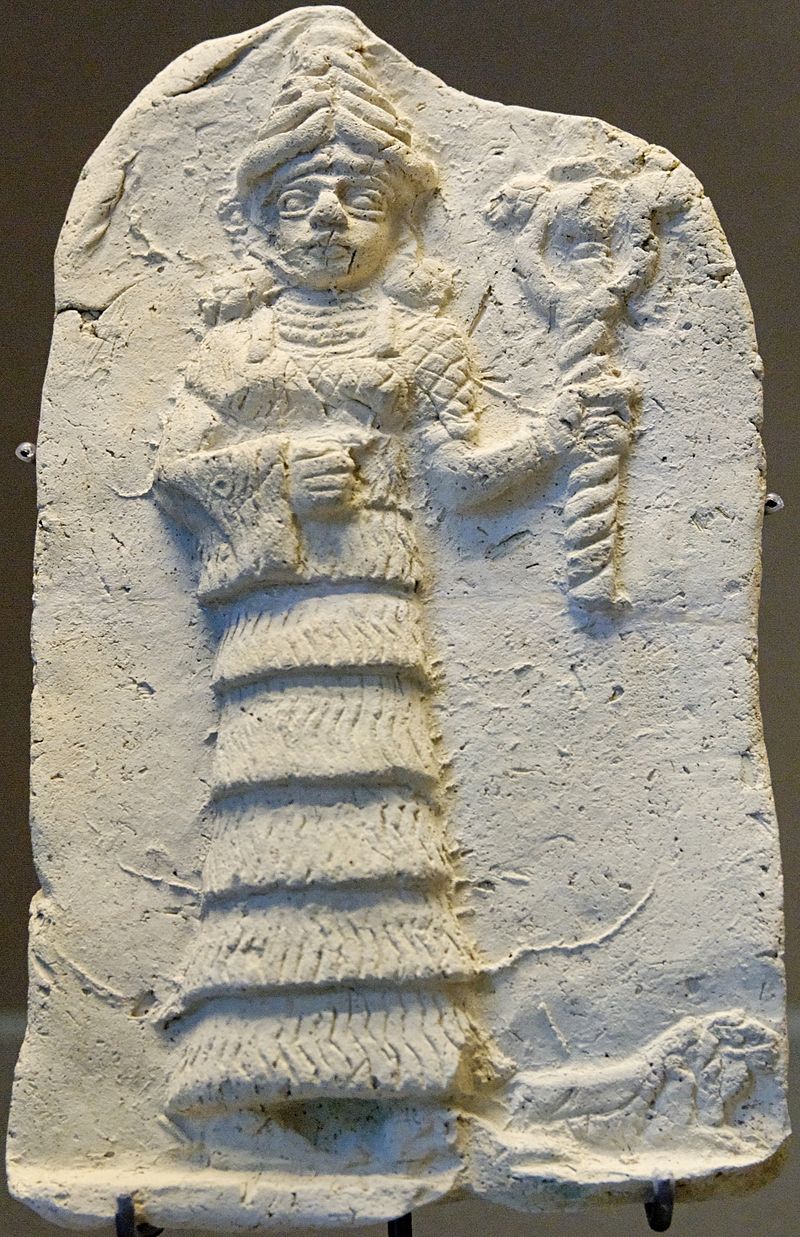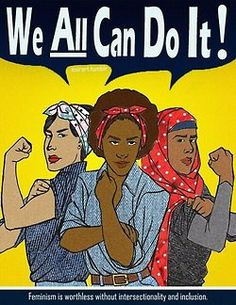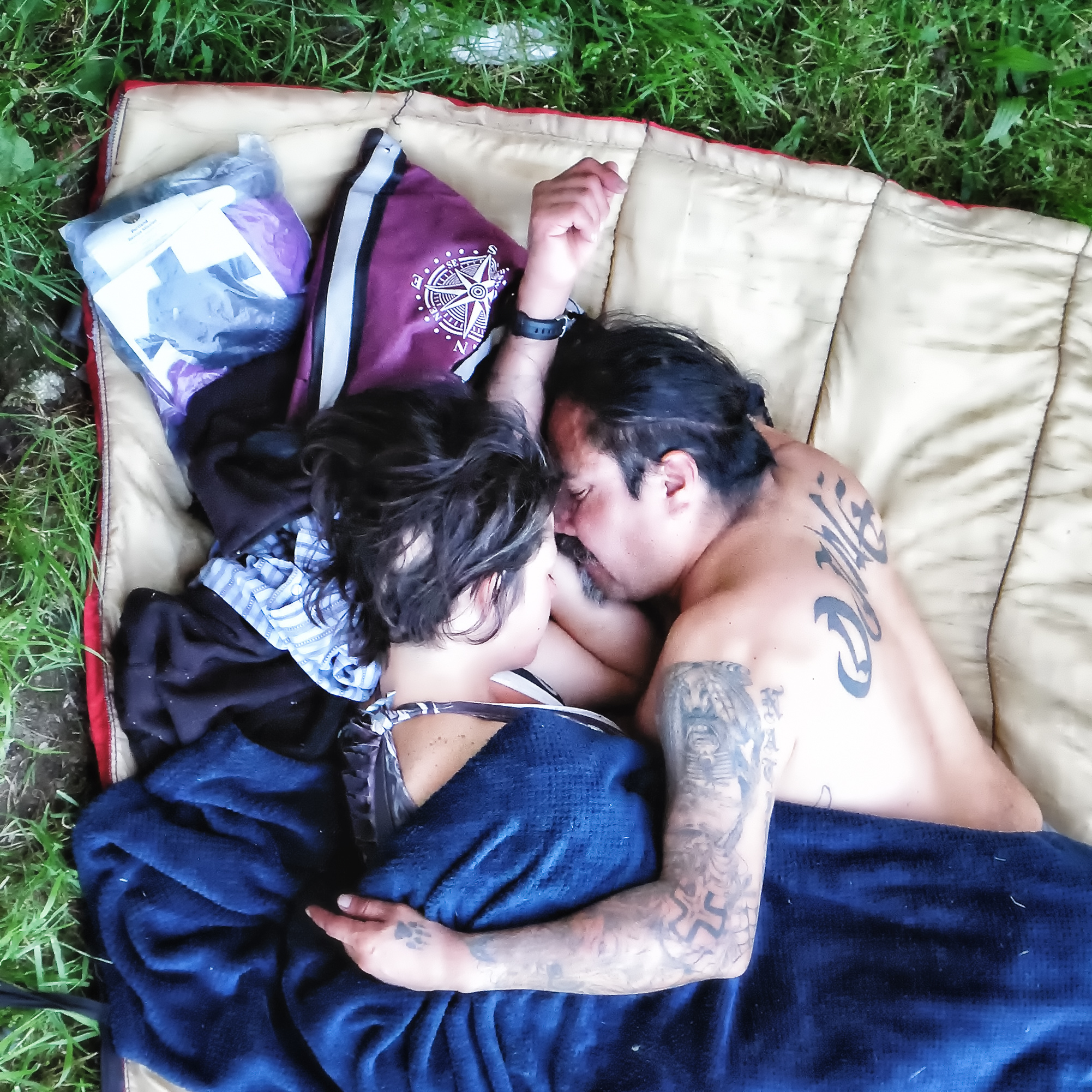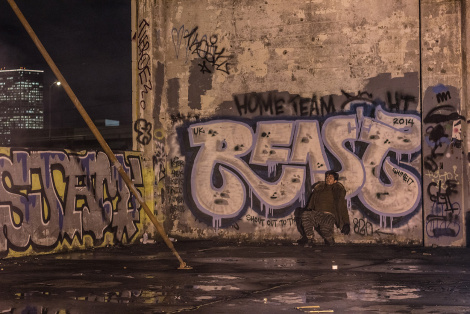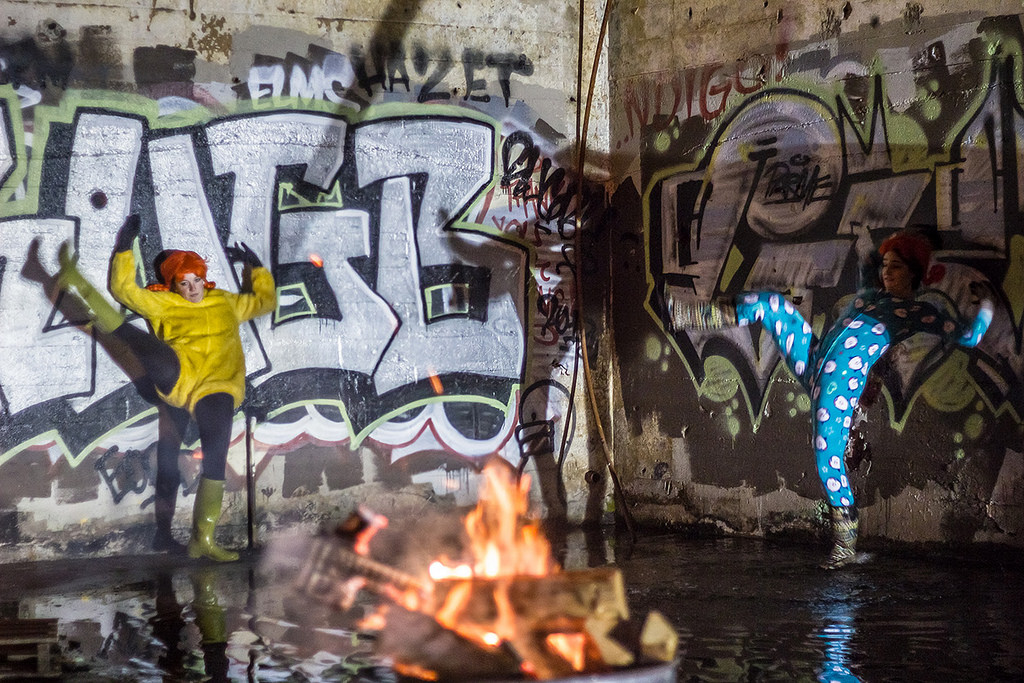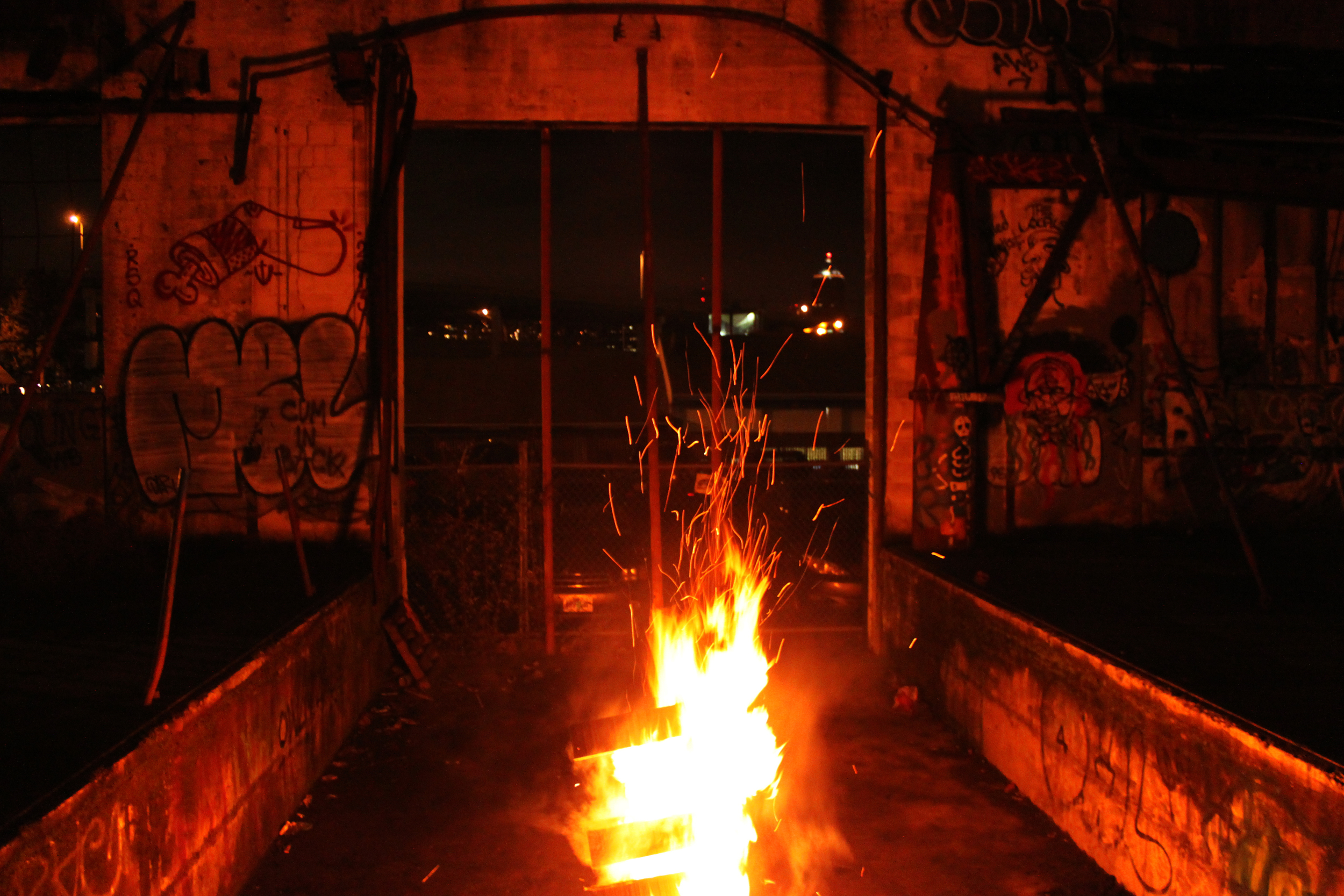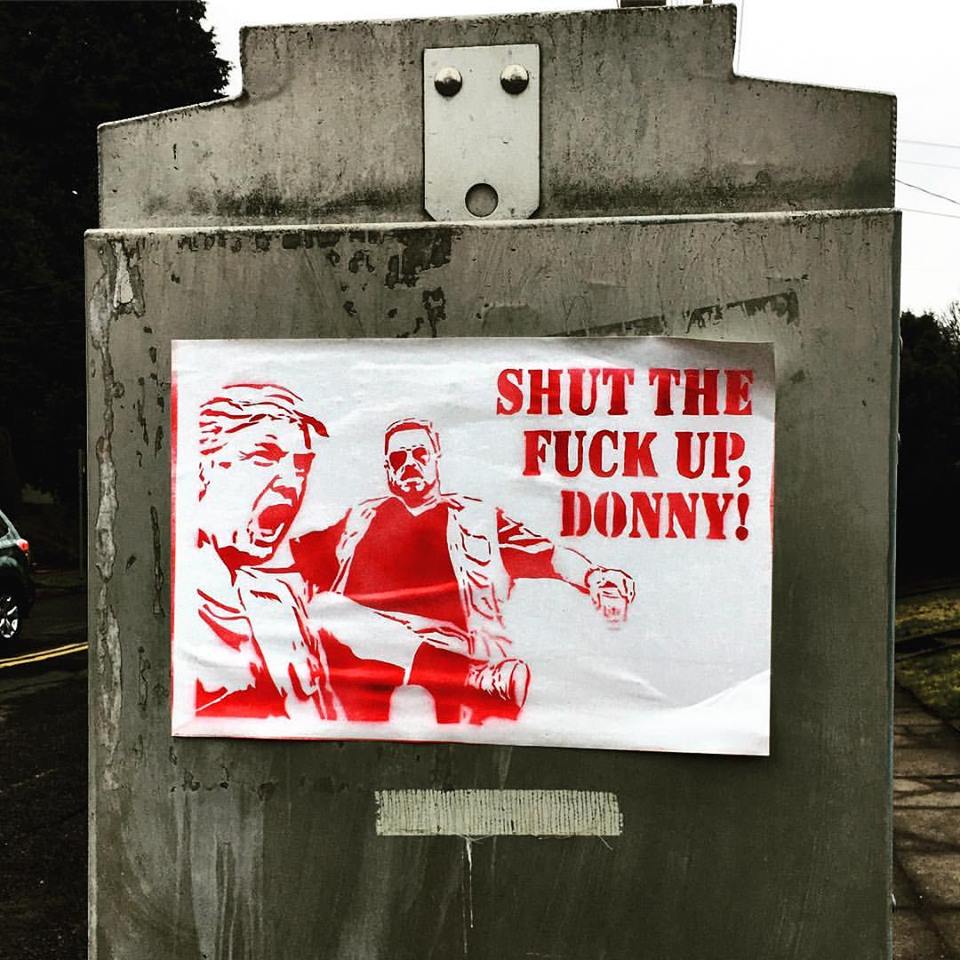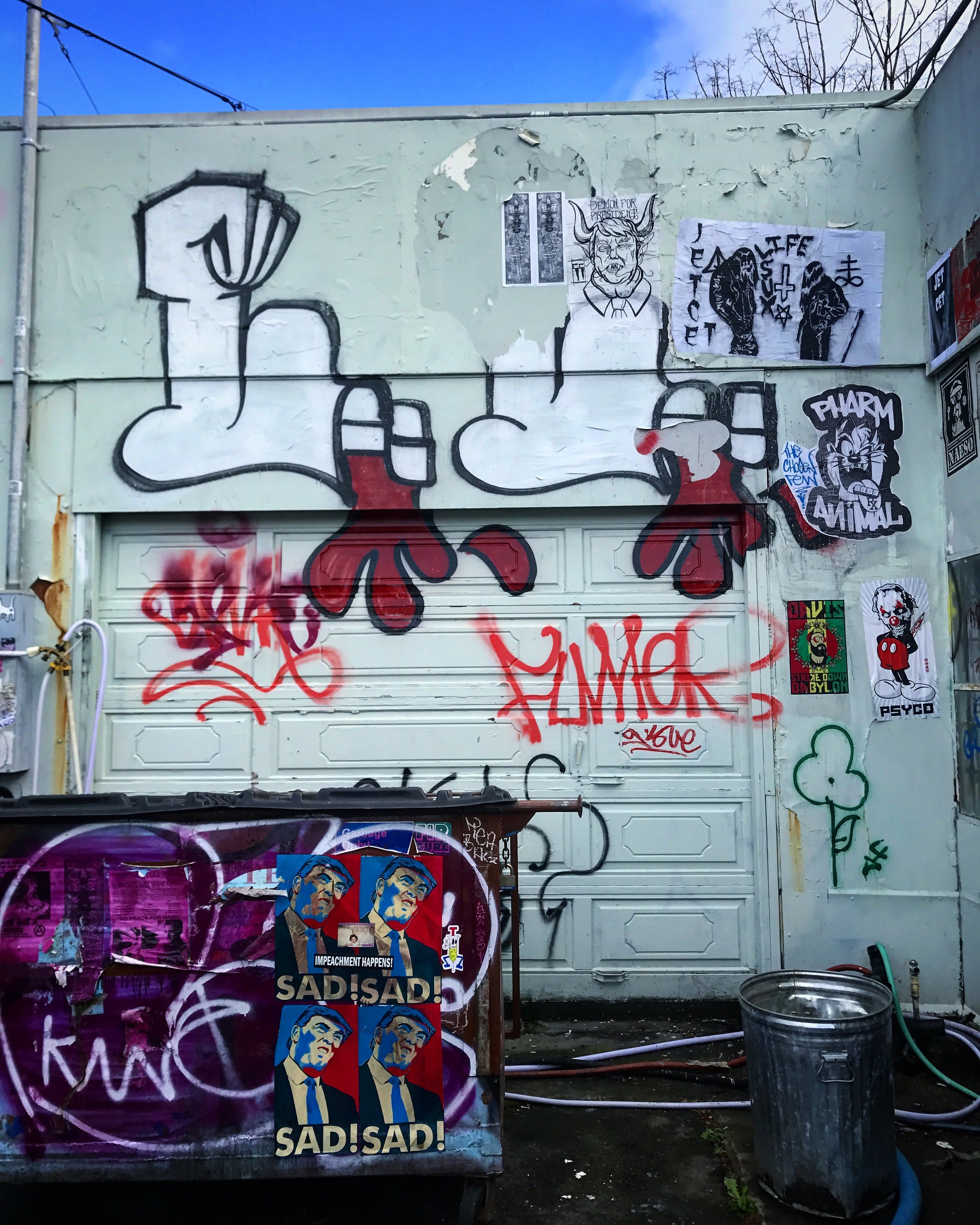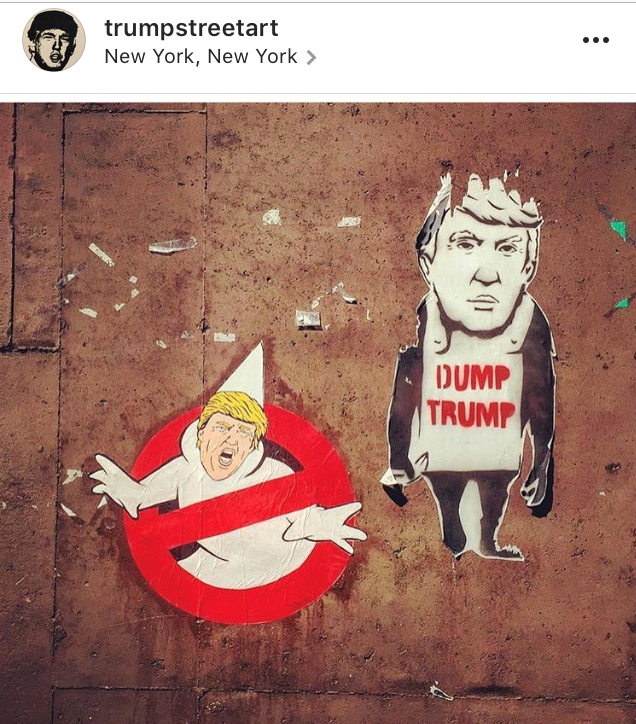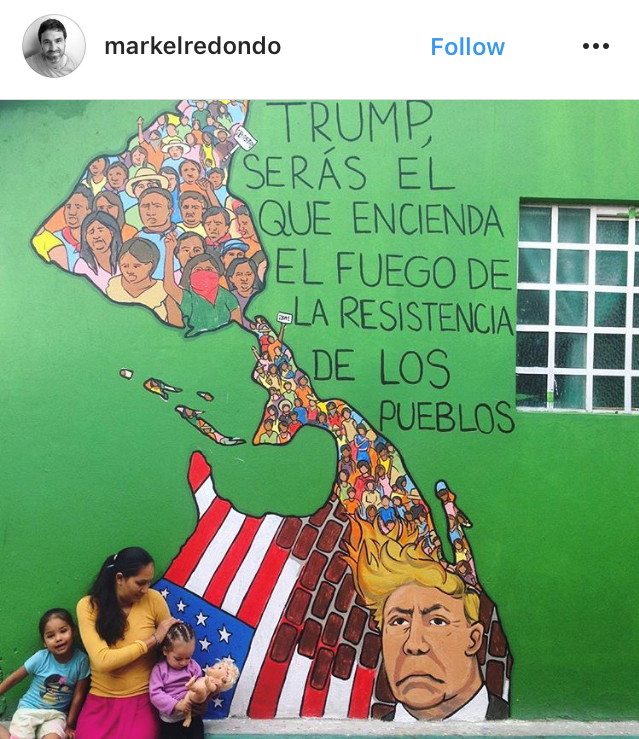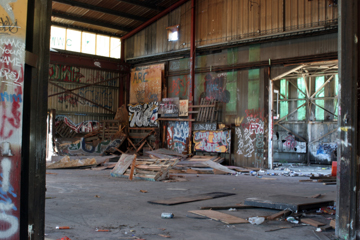Event Review by Loudres Jimenez
December 15, 2018 was a night to remember as Portland saw a fresh take on an exhibition, one that bring attention to the reformation and dismantling of the prison industrial complex. Jesse Hazelip - Midnite Special was held at a new art space on Failing Street, just off North Mississippi called Tips on Failing. Curated by Gage Hamilton, a renowned artist and Co-Curator and Director of Portland’s mural festival, Forest for The Trees.
Midnight Special brings Jesse Hazelip's new solo work alongside performances and collaboration with multidisciplinary artist Ginger Dunnill, lifelong friend and tattoo artist James Allison, visual artist and poet Demian Dine Yazhi, and indigo child rapper Rasheed Jamal. Each artist brought a unique voice to the show, luring audiences to submerge themselves in the essence and meaning of the artwork.
The moment you walked in, you are instantly greeted by hanging ropes made of bed sheets and the gripping sounds of ripping and tearing cloth.
"Ginger Dunnill for Mother Tongue creates a site-specific sound and fiber installation to the loving memory of all the young people of color across Amerikkka who continue to take their own lives because of the mental and physical trauma of being incarcerated" (Hazelip, 2018).
As you pass through; the ropes attached to the ceiling, hang close to the floor, leading your eye down to scattered poems, two inmate jumpsuits spread out with ropes beside them, and a sign that reads, "Rest in Peace;" instantly set the tone. The poems beautifully created by Demian Dine Yazhi, work "in an action that will embody the intention of Mother Tongue and amplify the Queer and Indigenous experience in relationship to the prison industrial complex and suicide" (Hazelip, 2018).
Walking further in, you encounter a site-specific instillation structure built to the size of solitary confinement cells in the U.S. prison system. This space creates the stage for Hazelip's live protest alongside tattoo artist, James Allison. As Hazelip sits, with his arms around his knees on the floor, sitting above him is Allison who is using a makeshift tattoo gun to tattoo a rose with a stem of rope. Intertwining with Dunill's instillation to memorialize those who have committed suicide due to incarceration. The fluorescent light shining on them, gave a sterilized glow to the room; which contrasted the white walls and grey concrete. Hazelip and Allison, collaborated together on this exhibition while Allison was still incarcerated. Both Hazelip and Allison embody true authenticity and commitment to the art and the cause.
The walls showcased Hazelip’s new series, Trinity War. Hazelip interweaves three narratives: The Eternal War (the past, present, and possible future of the United States), the War on Drugs (aka people of color), and the War of Colonization (gentrification). These pieces highlighted the cause and effect of the prison industrial complex and the lives it takes. Hazelip's unique style of using fine-line ballpoint pen on paper include images of the Reaper, Bellum Se Ipsum Alet (Latin for, The War Will Feed Itself), and Coyotl. Some pieces from this series can also be seen on the streets of Portland, as wheatpasted installations.
When asked about the meaning behind his usage of three animals in his work – a wolf, bull, and vulture – Hazelip stated that when wolves are in a pack they survive, when separated and in solitude, they lose their mind. We are tribal beings. The bull is a reference to people being like cattle, with each piece already planned to cut apart. Christo, 53” x 29” (mixed media on wood) is about the “sacrifice involved in our judicial system. Our punitive approach to incarceration has been proven to be ineffective and counterproductive to the ‘sinners’. I used the back of a frame and carved out spaces for things a prisoner might want to smuggle in and hide. Blades for protection, keys for release, pictures of loved ones for comfort and an ink impression from a newborn’s feet for those mothers and fathers who can’t touch their children” (Hazelip, 2016). The hooded vulture is a reference to the situation of corruption in Rikers Island in New York.
The piece Big Skull was created out of a carved bull’s skull. The piece displays names of multiple prisons in New York City and upstate New York. “The private prison industry deals and trades prisoners as if they were livestock” (Hazelip, 2017). Each piece in his series contains personal and intimate details of an incarcerated experience, helping to heal a wound that exists in society.
Closing the show, a live performance by Rasheed Jamal gave the audience a sample of his new album entitled 22 Grams (iAMTHATiAM), which testifies to the experience of a young black male in modern day America, given from the perspective of a disembodied ‘Soul’—the main protagonist in the narrative” (Hazelip, 2018). Lyrics like, “land of the free, but I’m just another prisoner, working 9 to 5, man, it shouldn’t be so difficult” provide introspective truth and a soundtrack to the struggle of the cause (Jamal, 2018).
This deep and well thought-out exhibit curation and artist collaboration, highlights the overlapping interests of government and industry - feeding off of stereotypes of oppressed communities (people of color, the homeless, mentally ill, etc.), categorizing them as delinquents and a danger to society. Through this process, huge profits are generated by private companies, while at the same time acting to further marginalize the communities of those who are incarcerated. Due to the continuation of "tough on crime" propaganda in American culture, the larger civilian population has been tricked into believing that imprisonment is the solution to solving our social problems. As Angela Davis wrote in her essay, Masked Racism: Reflections on the Prison Industrial Complex, "prisons do not disappear problems, they disappear human beings" (Davis, 1998). Midnite Special shows that our correctional institutions have turned into a “slaughter house for profit,” and we are the cattle. We look forward to each artist’s endeavors and support their courage to stand for what is right.
Citations:
Davis, A. (1998). Masked Racism: Reflections on the Prison Industrial Complex | Colorlines. [online] Colorlines. Available at: https://www.colorlines.com/articles/masked-racism-reflections-prison-industrial-complex [Accessed 24 Dec. 2018].
Hazelip, J., Personal communications, December 15, 2018.
Hazelip, J. (2016, August 3), “Christo”, 53x29”, Mixed media on wood. https://www.instagram.com/jessehazelip/.
Hazelip, J. (2017, June 23), “North (Big Skull)” Carved Bull skull. https://www.instagram.com/p/BVsijzcFene/
Jamal, R, Live performance, December 15, 2018.










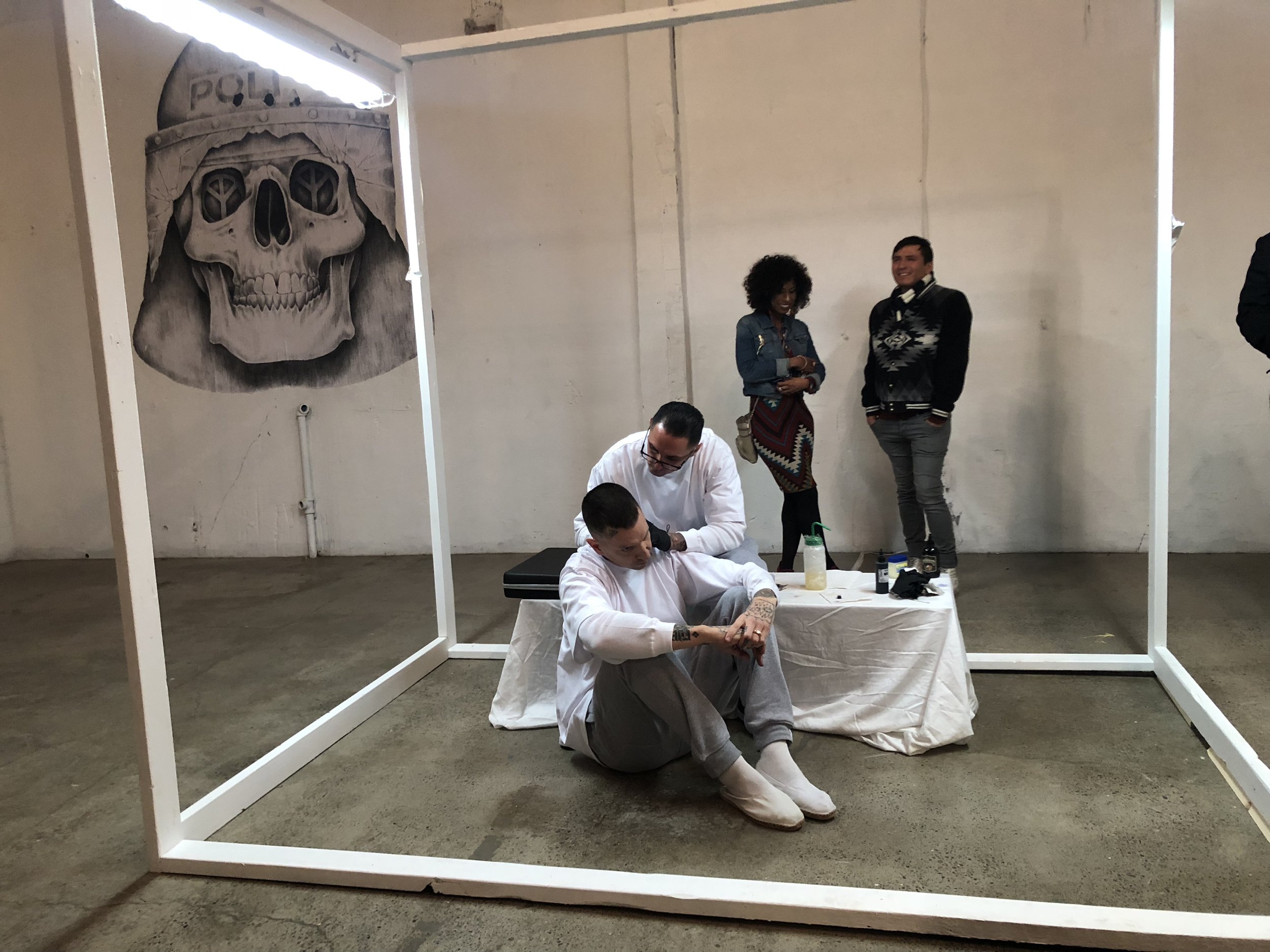

























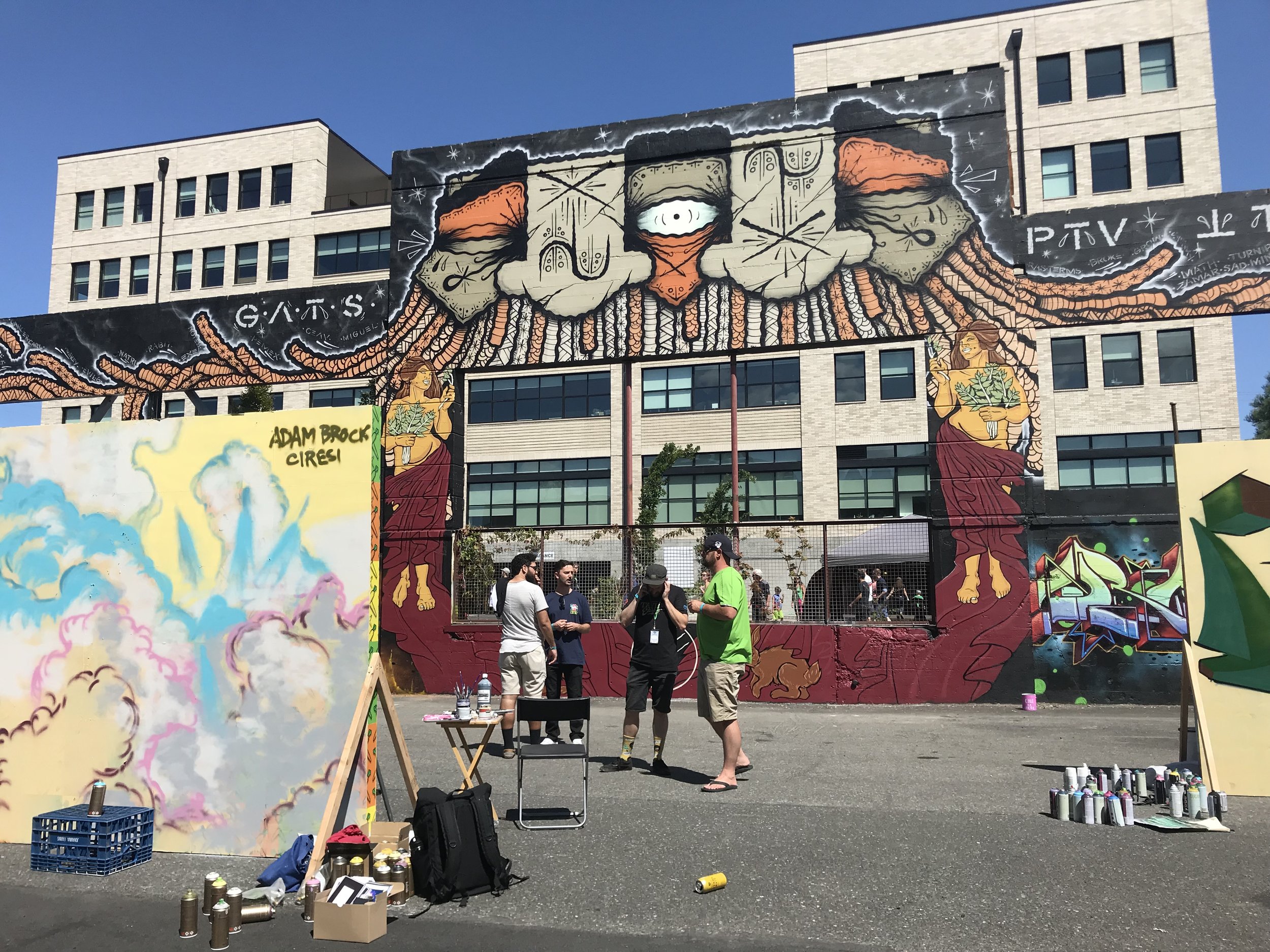













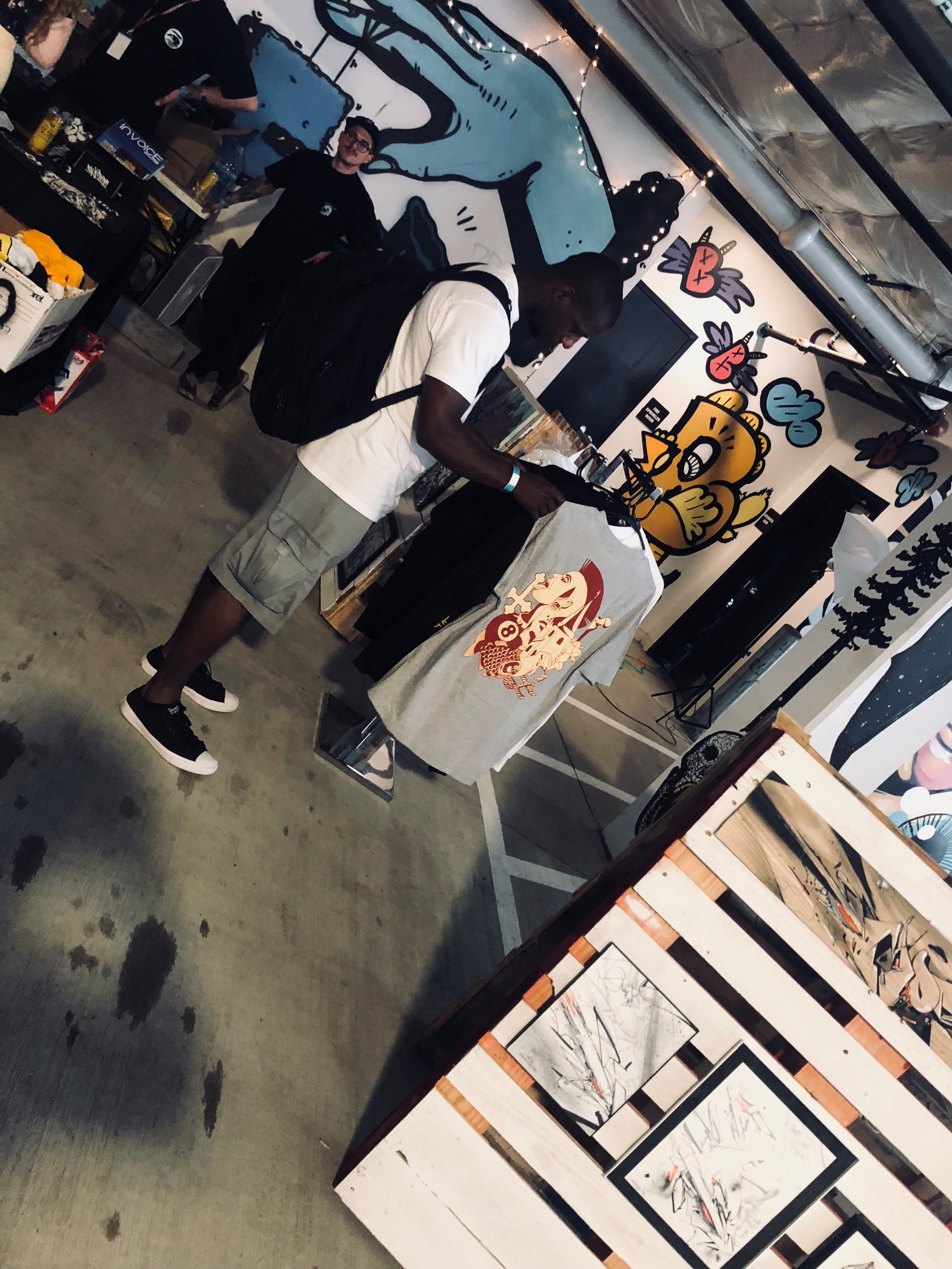
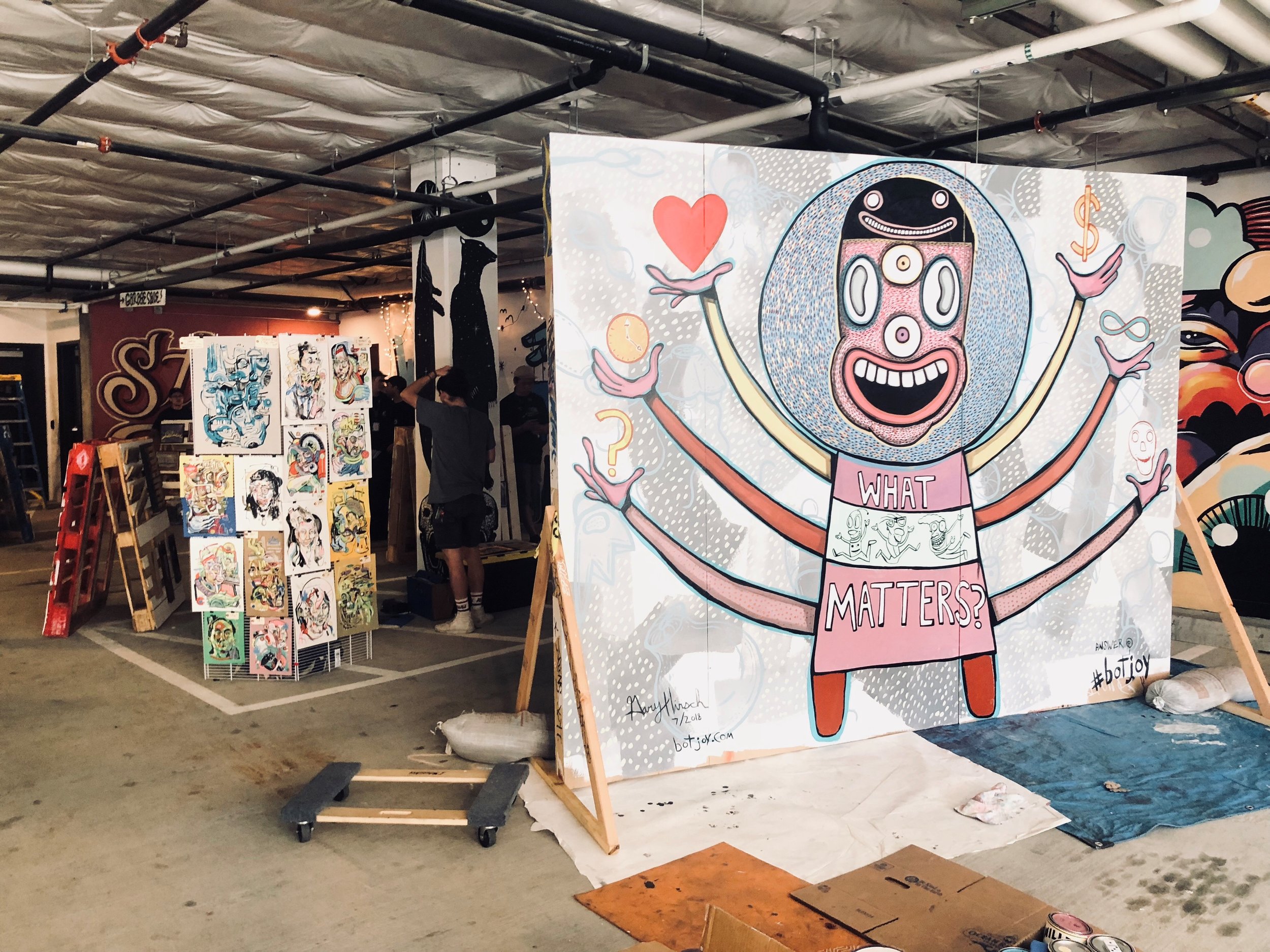










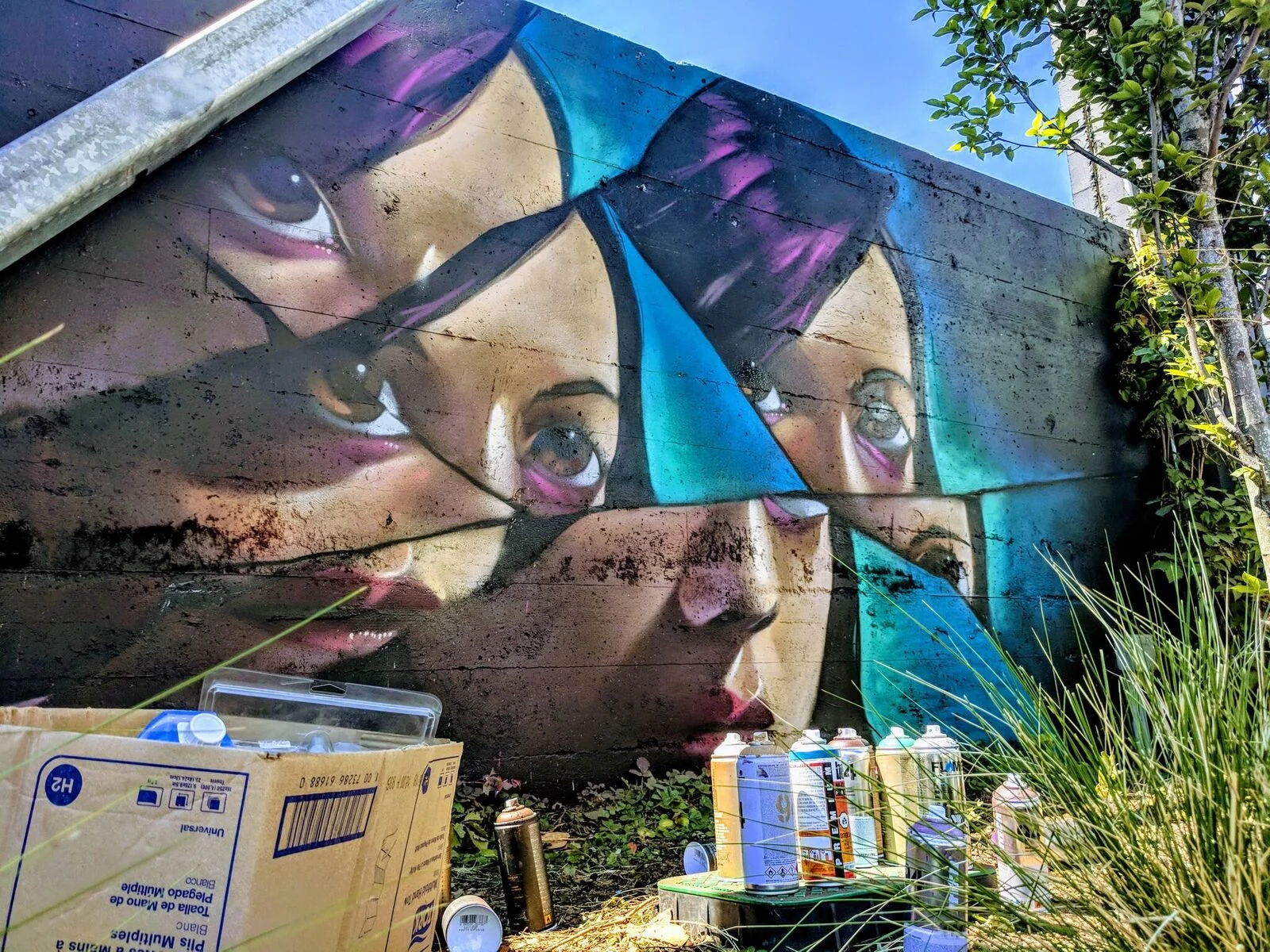






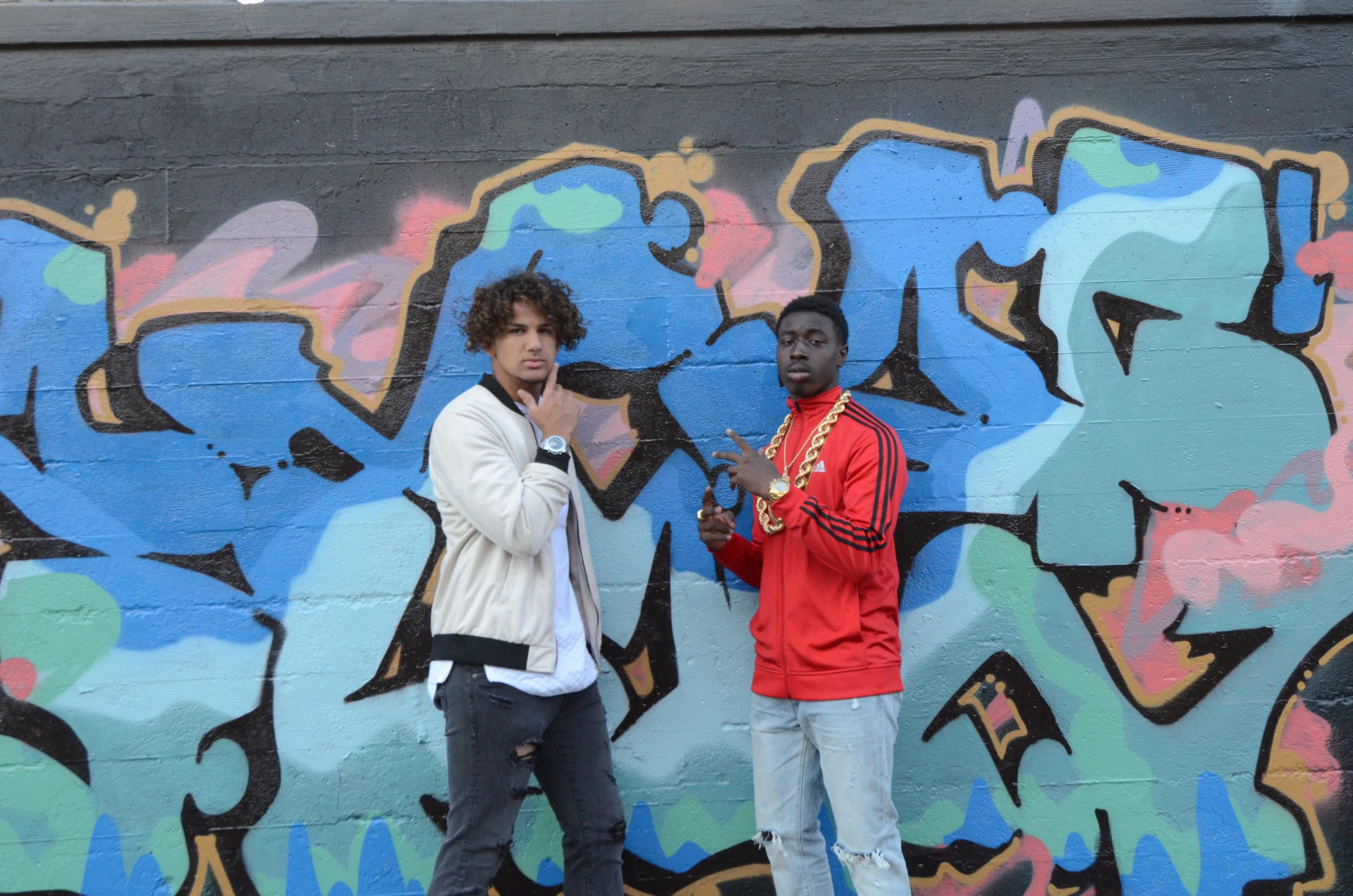













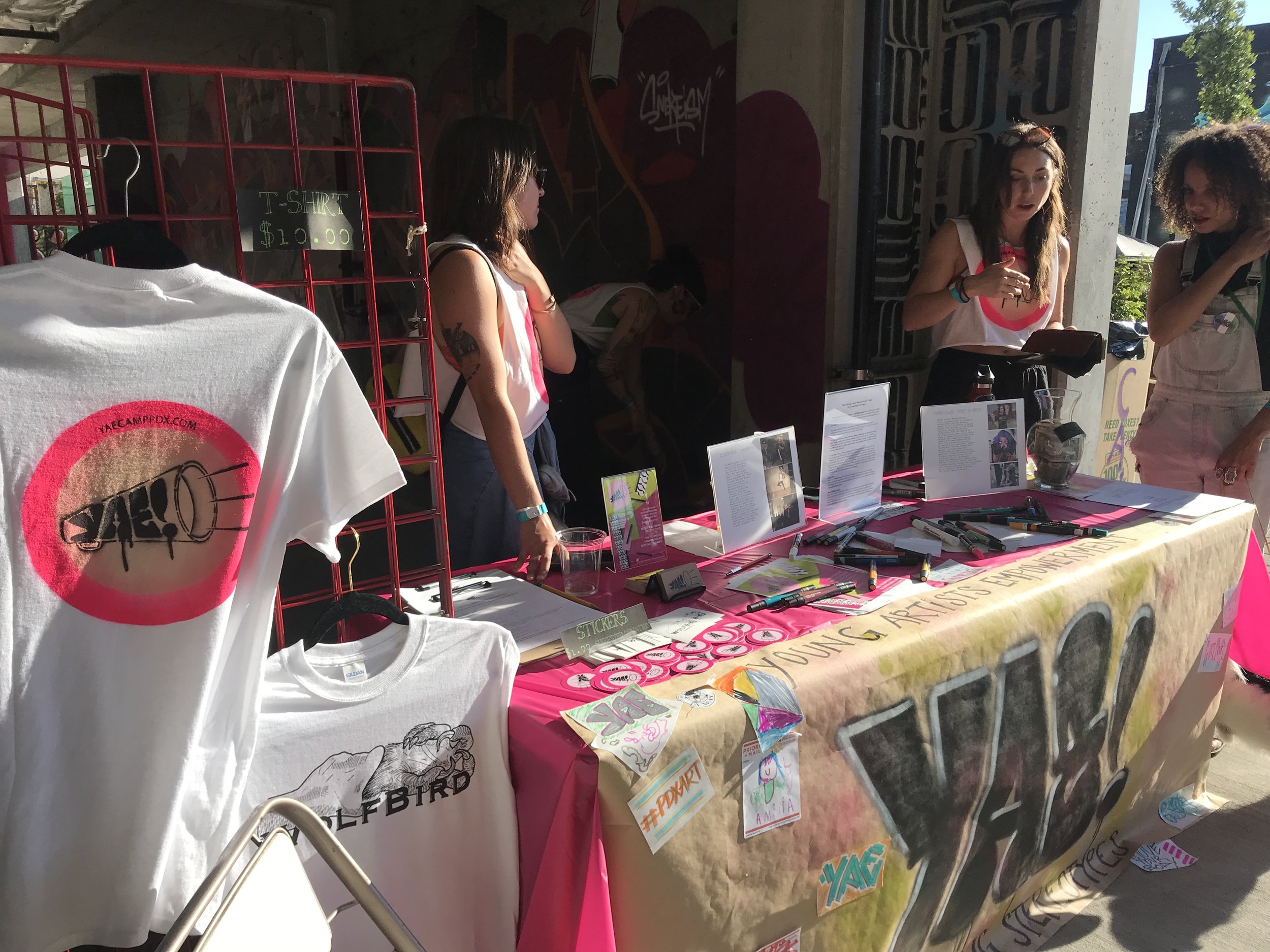
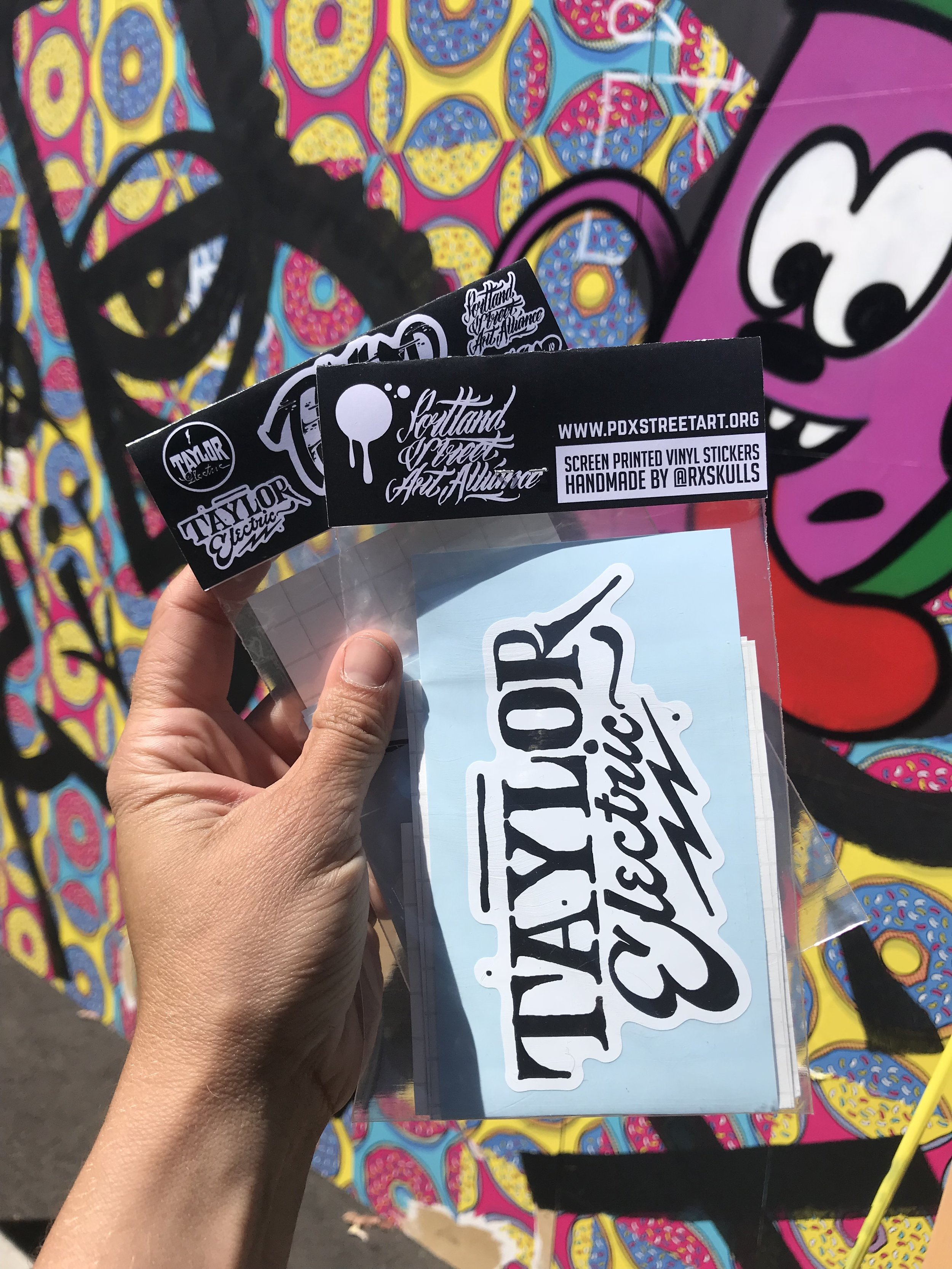

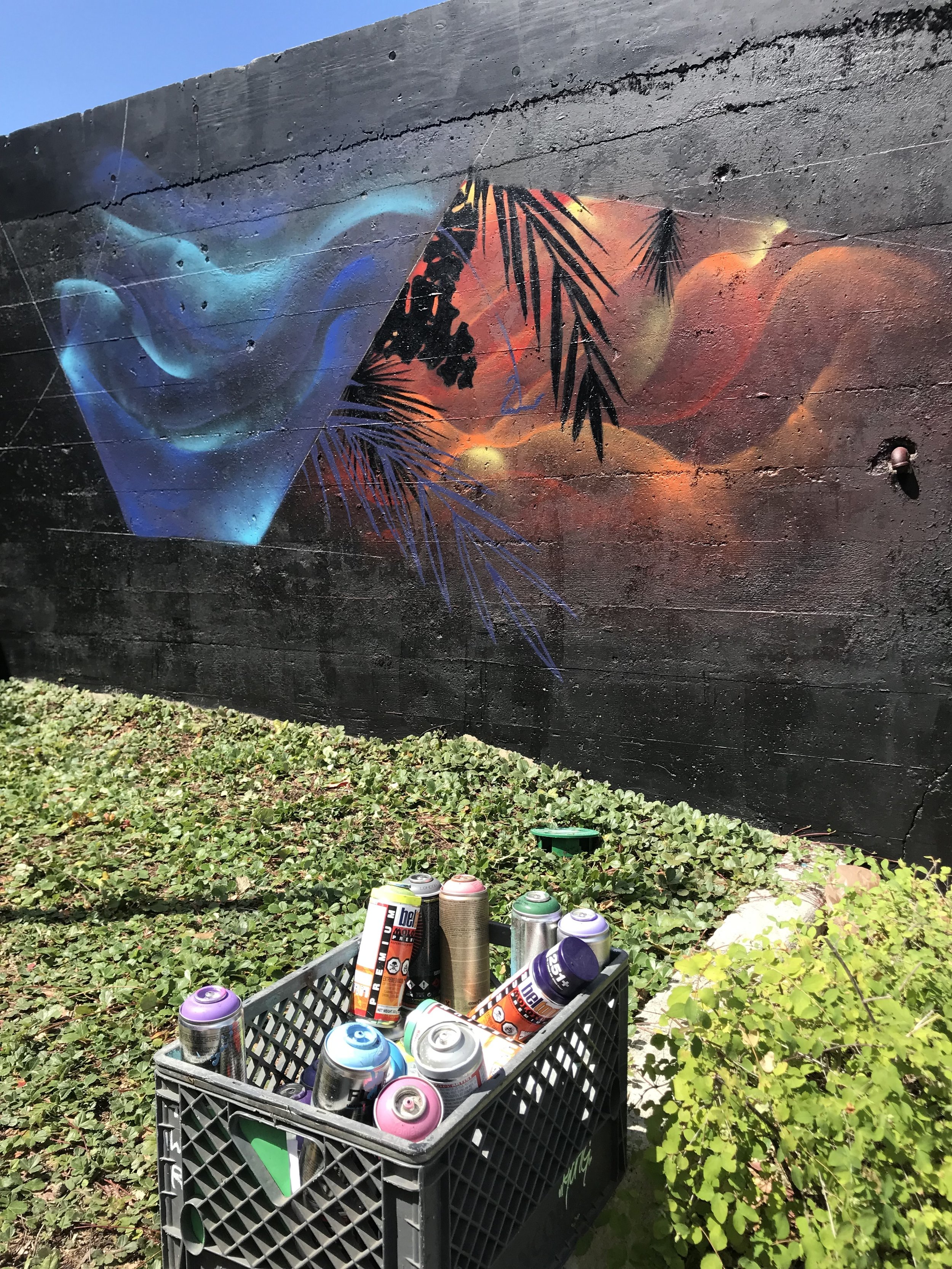
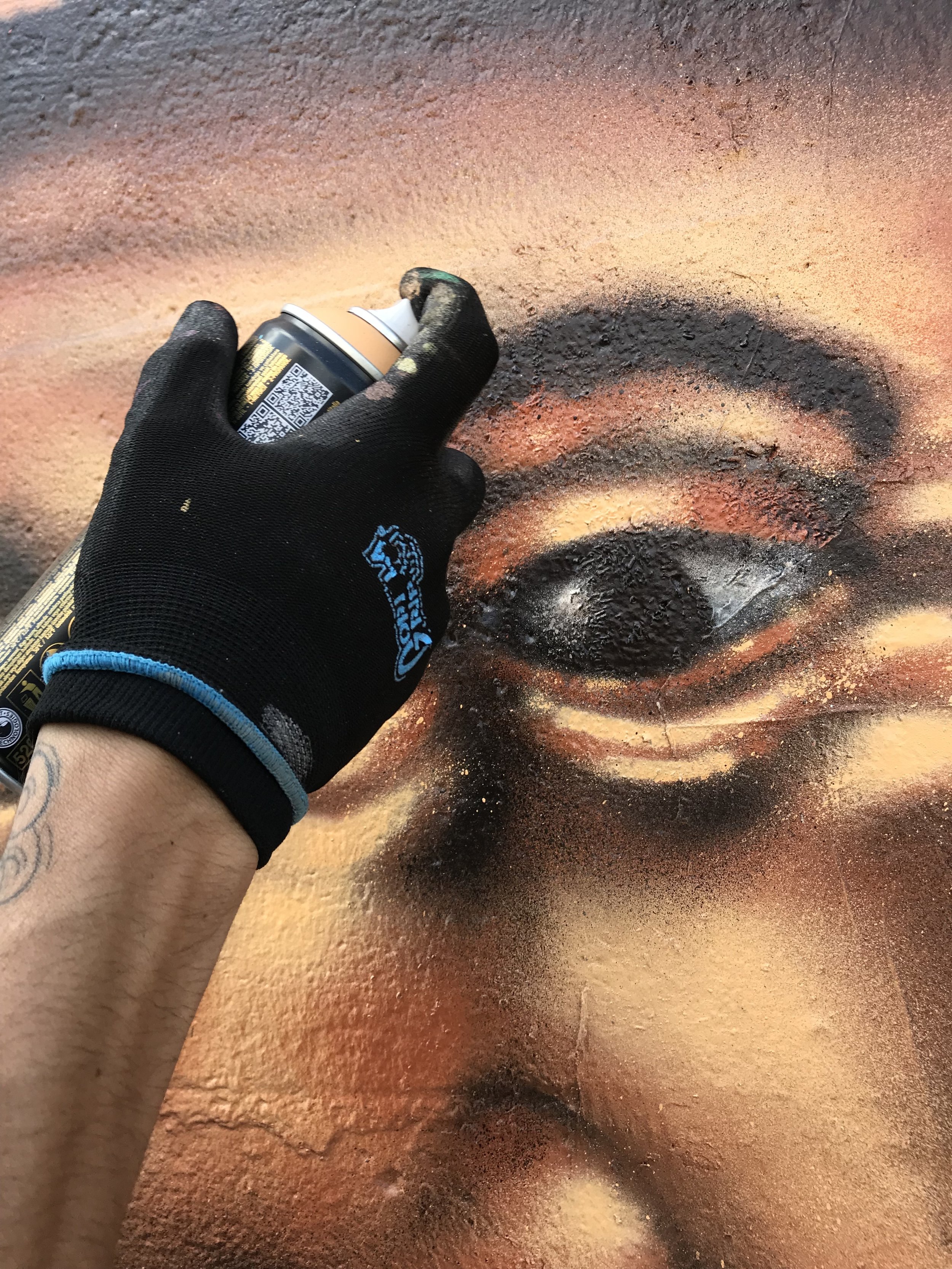




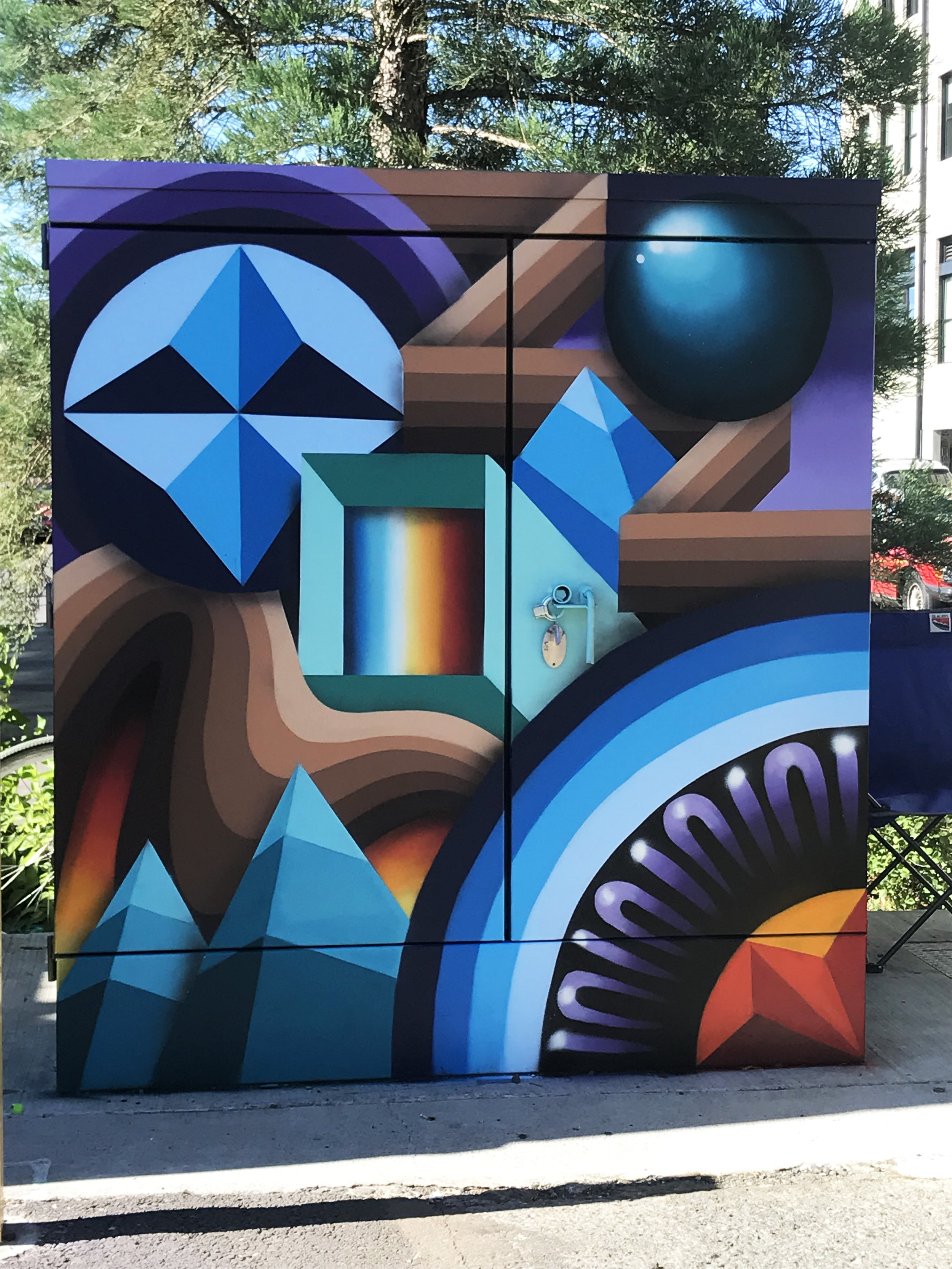





























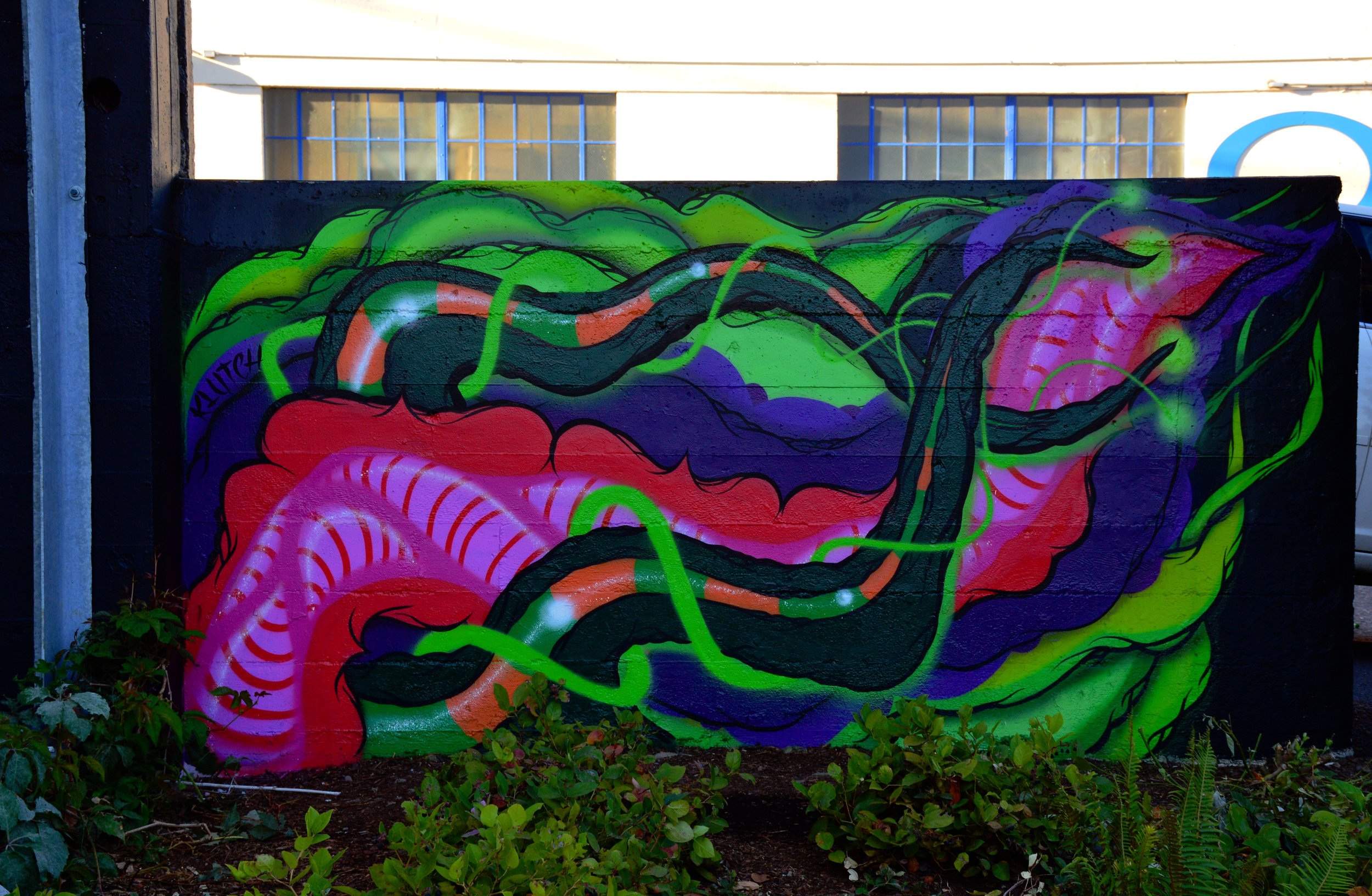
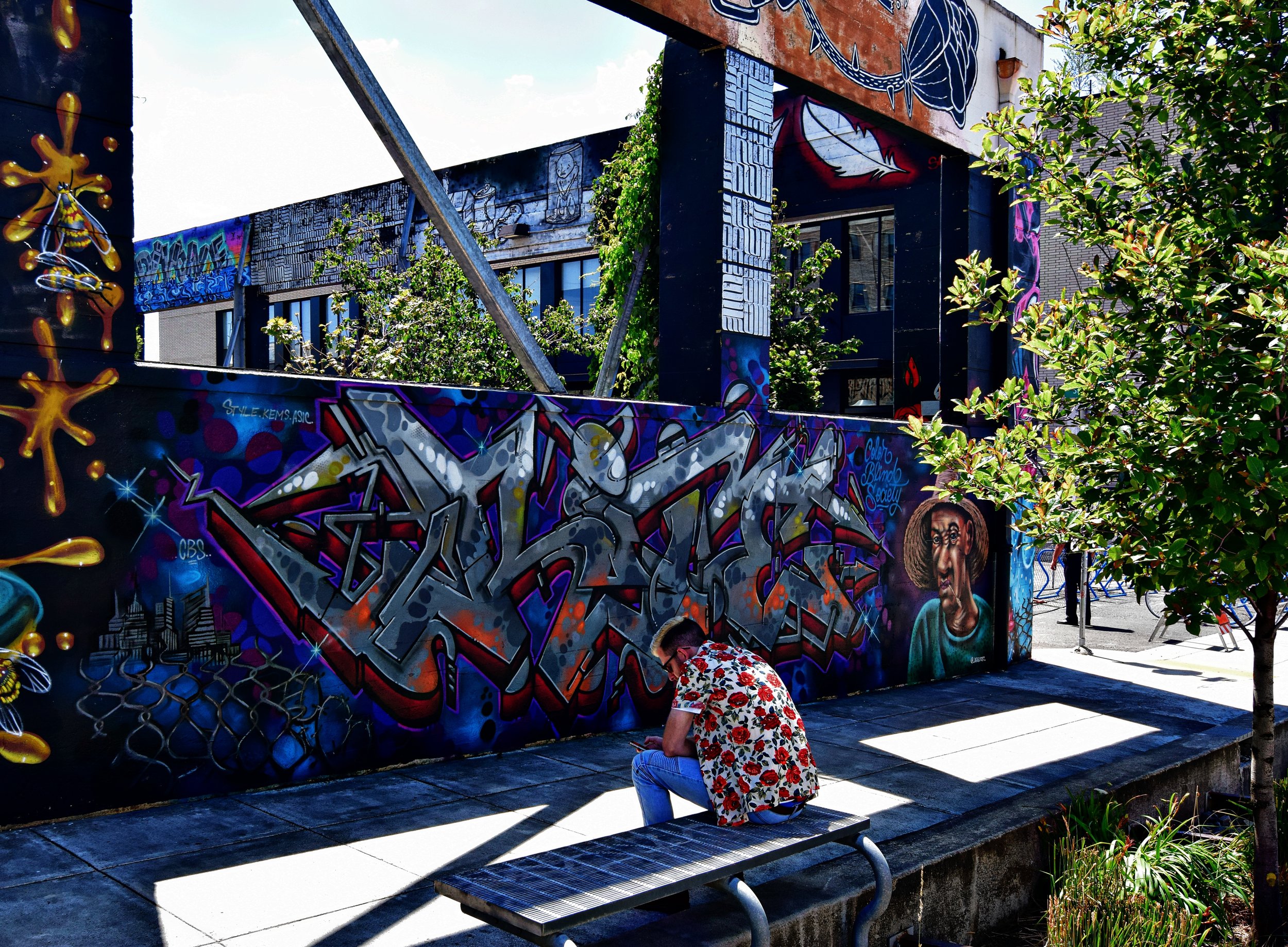

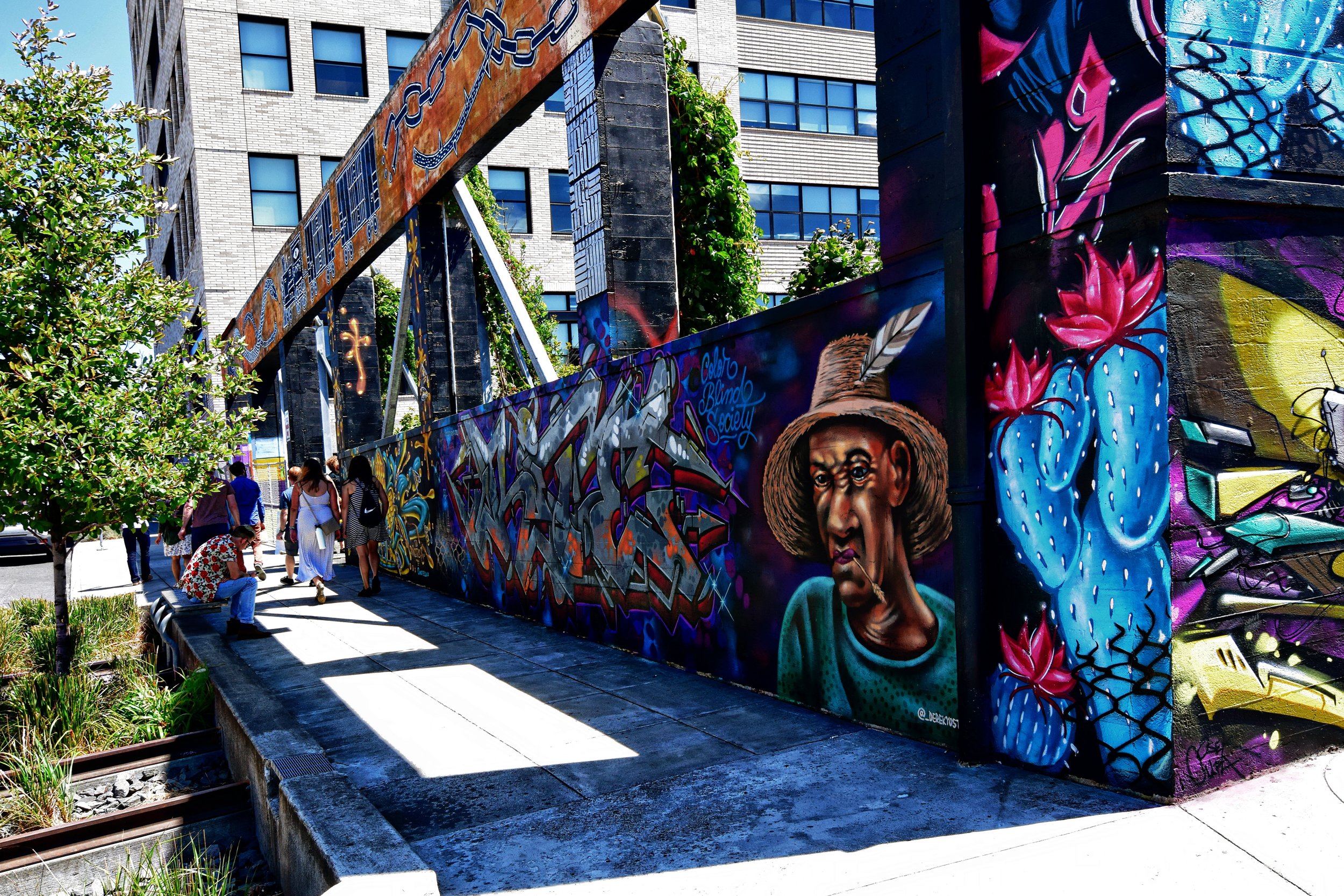








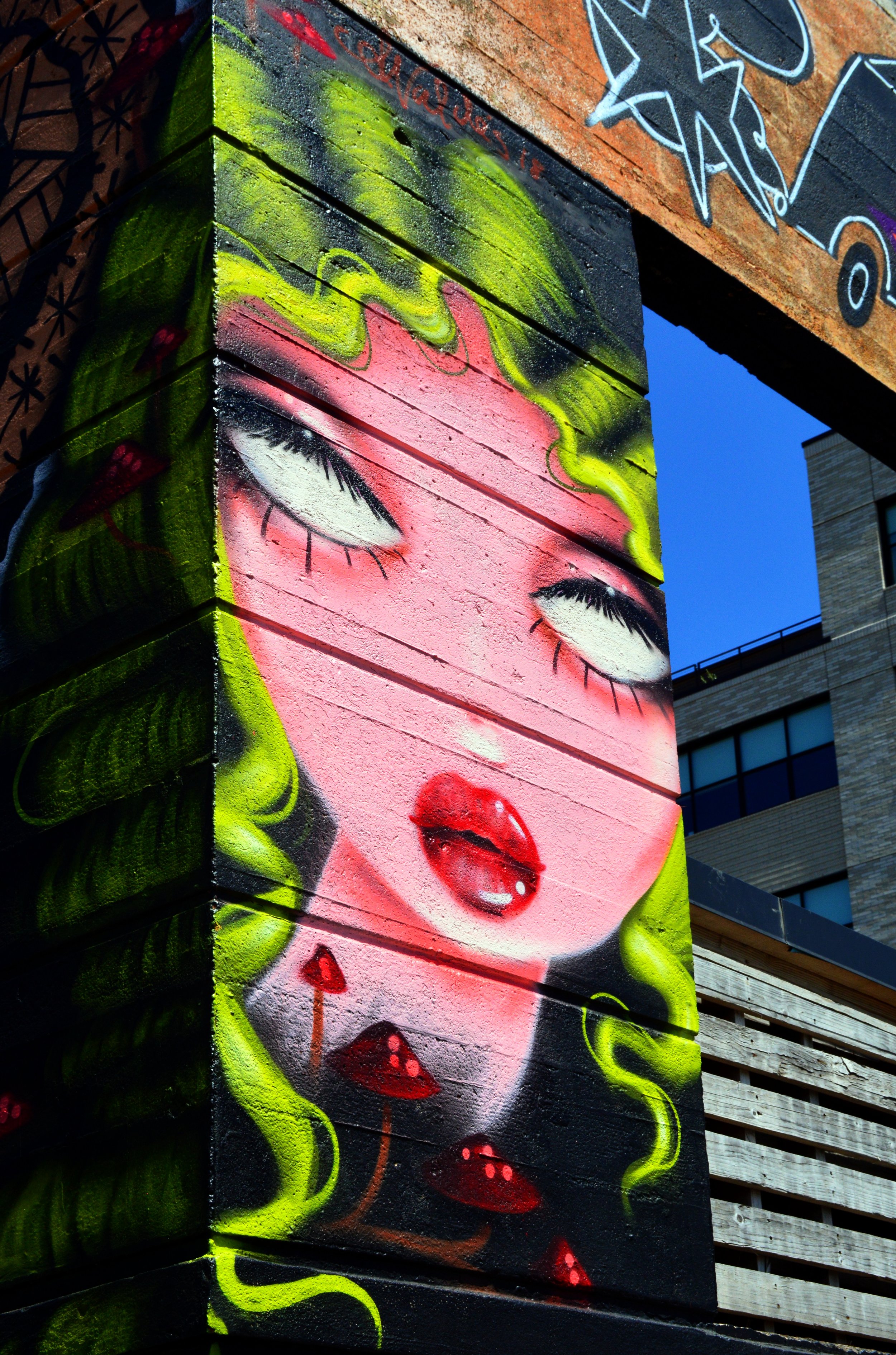
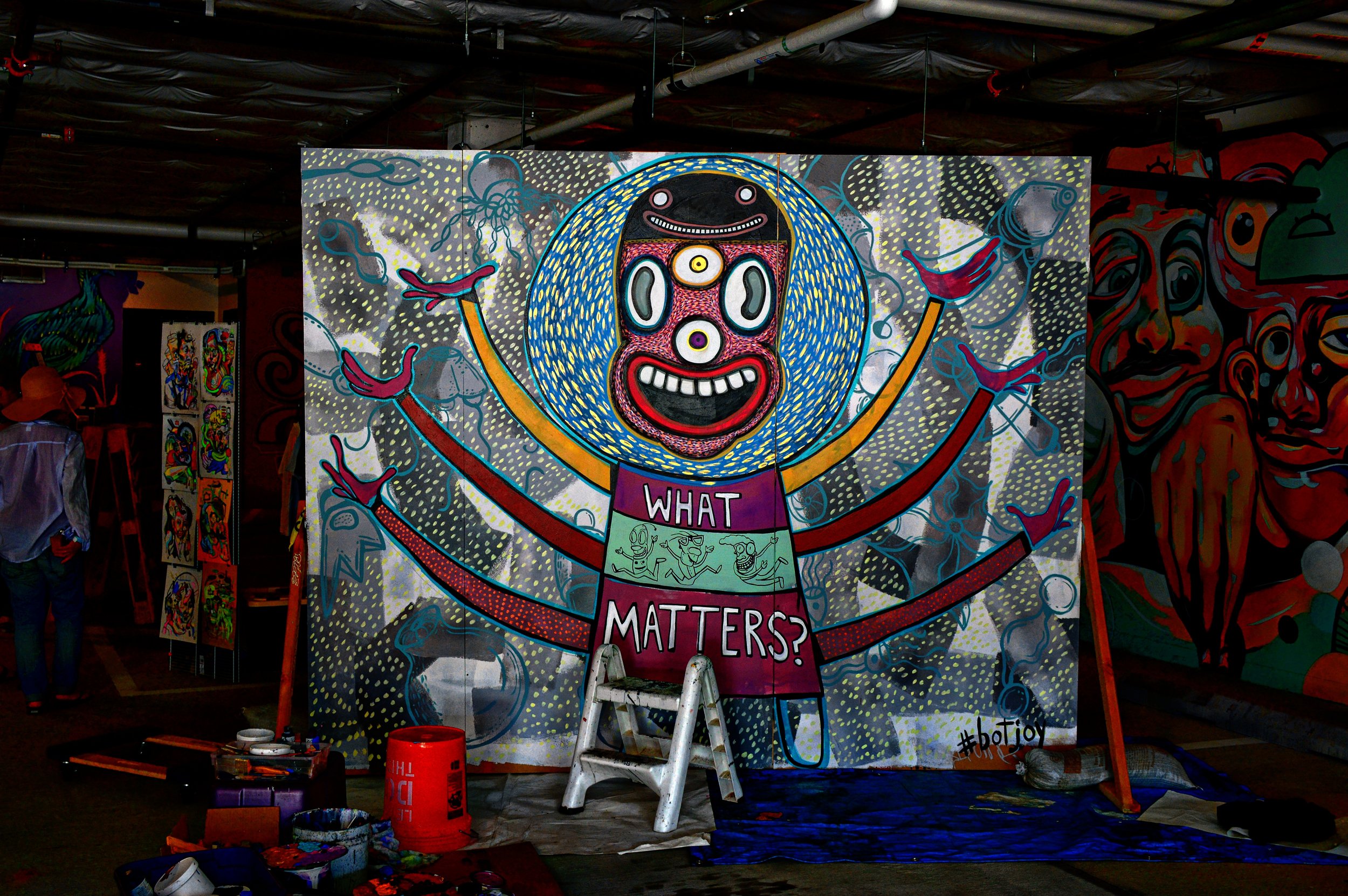










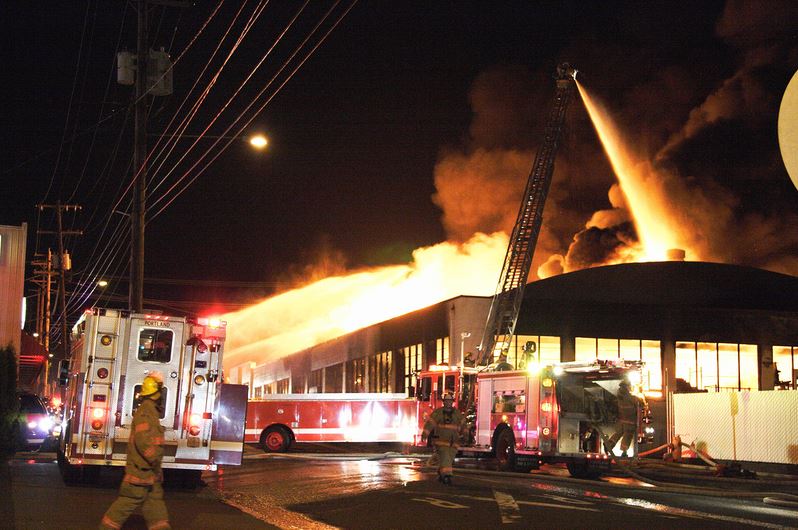
















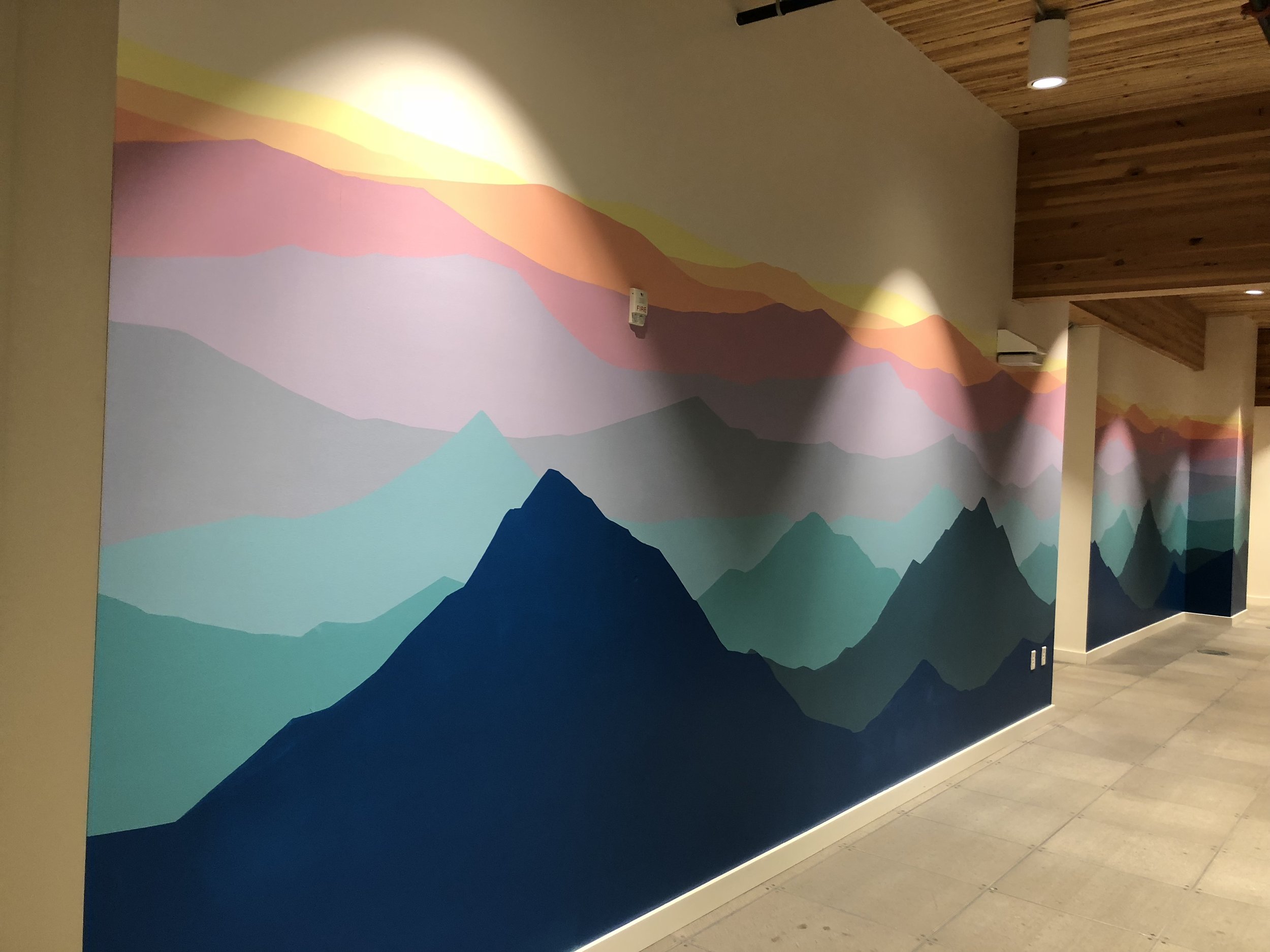







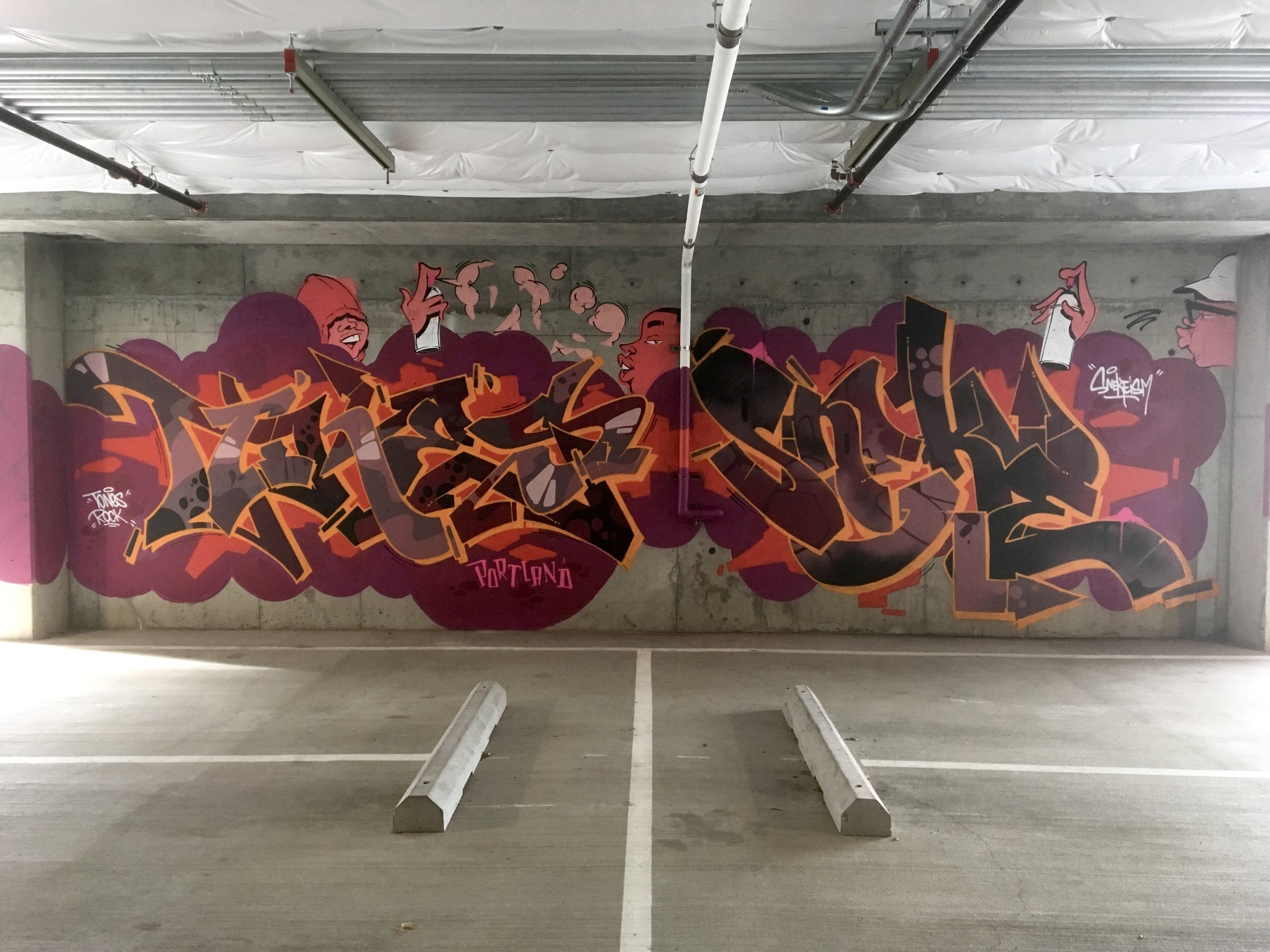




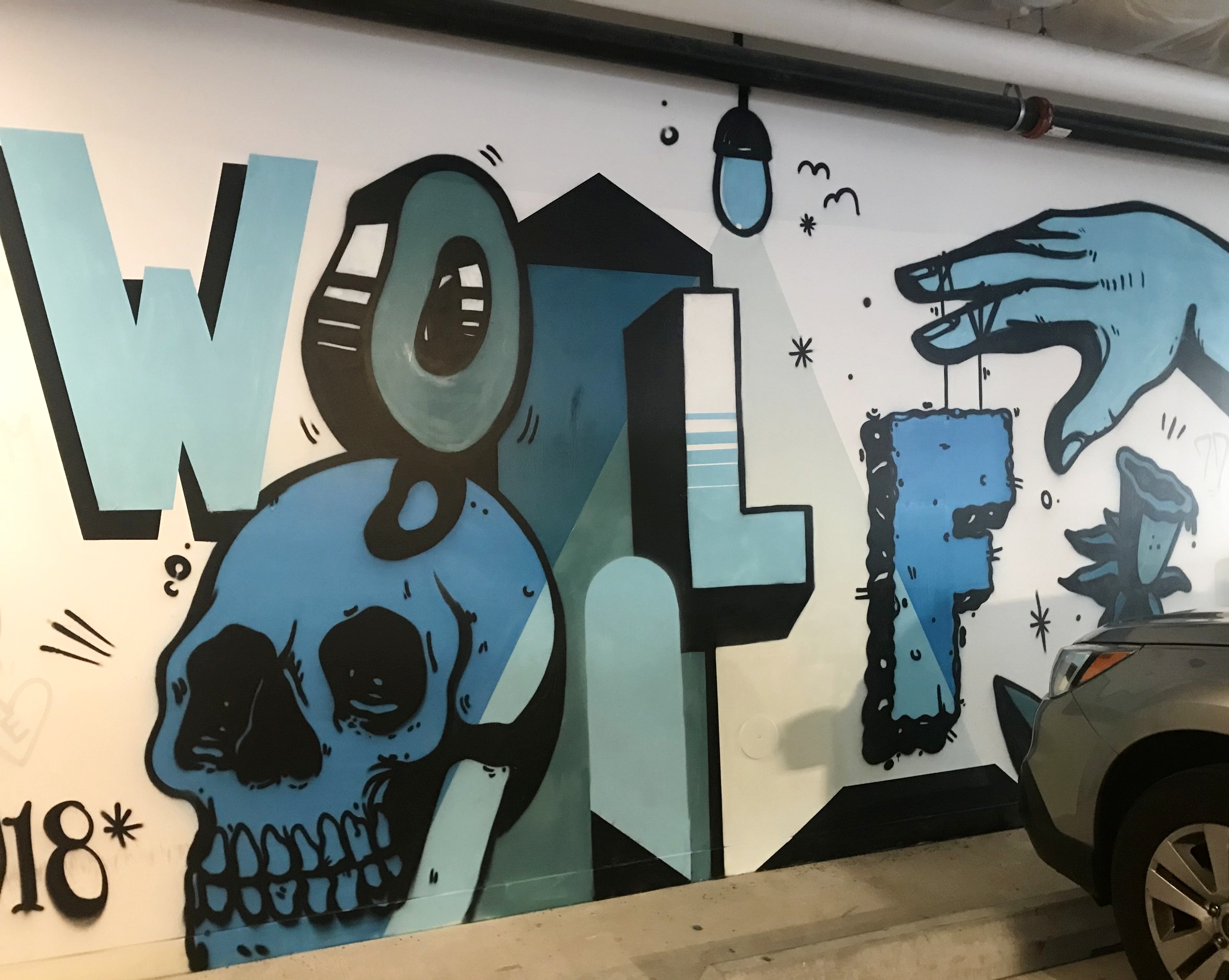


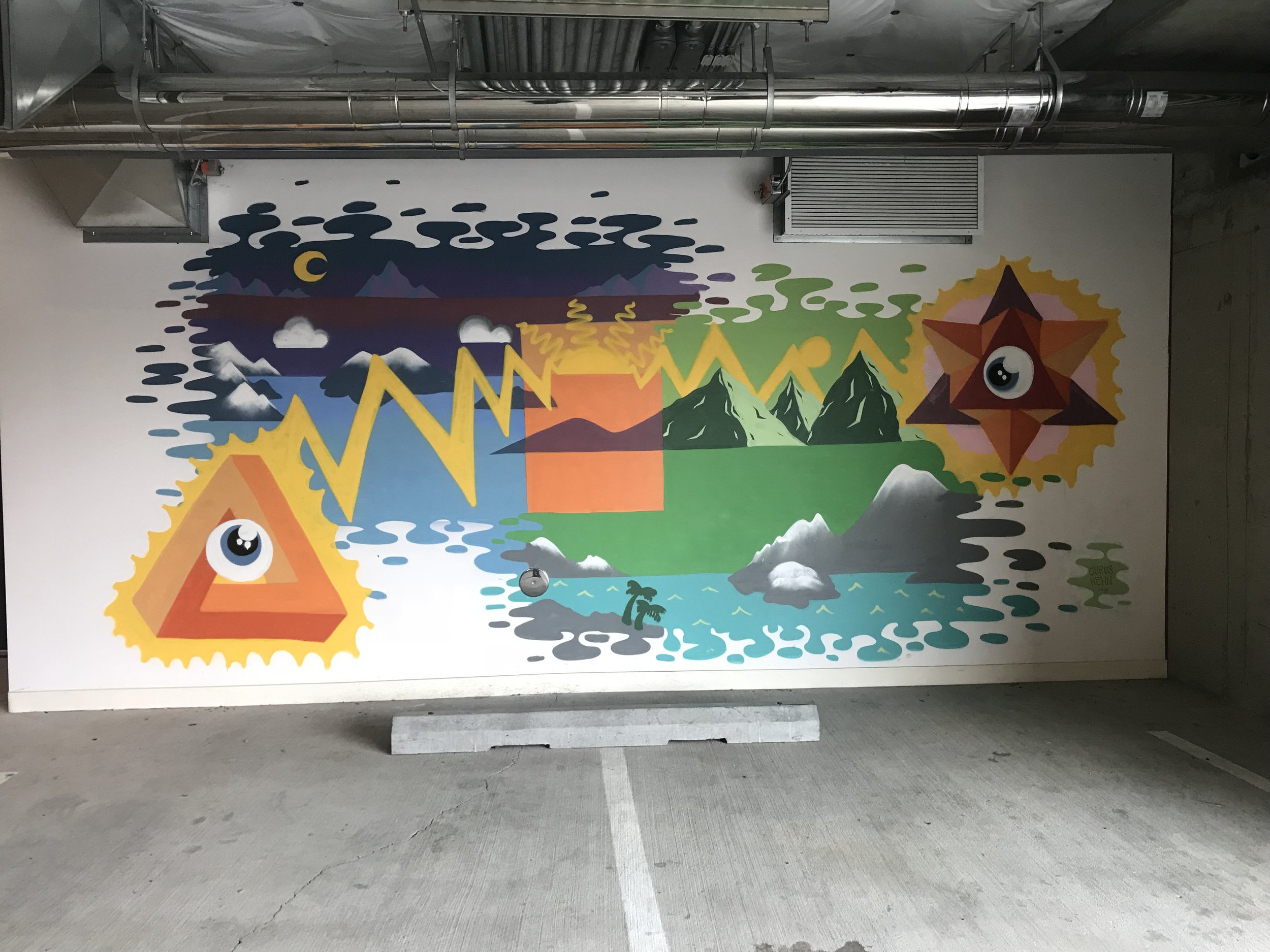









![IMG_E3155[1].JPG](https://images.squarespace-cdn.com/content/v1/54c5d2a7e4b0df35f166e6f8/1521422463076-I80S072851Q1AOE3QO2N/IMG_E3155%5B1%5D.JPG)
![IMG_E3154[1].JPG](https://images.squarespace-cdn.com/content/v1/54c5d2a7e4b0df35f166e6f8/1521422471722-84M1WK0LJYBBLSAJFI2W/IMG_E3154%5B1%5D.JPG)
![IMG_E3153[1].JPG](https://images.squarespace-cdn.com/content/v1/54c5d2a7e4b0df35f166e6f8/1521422479156-GRLX10TIJQ0TYX3DQIXS/IMG_E3153%5B1%5D.JPG)
![IMG_E3152[1].JPG](https://images.squarespace-cdn.com/content/v1/54c5d2a7e4b0df35f166e6f8/1521422495470-OCPRFUPII4WCBQCFGUSK/IMG_E3152%5B1%5D.JPG)
![IMG_E3151[1].JPG](https://images.squarespace-cdn.com/content/v1/54c5d2a7e4b0df35f166e6f8/1521422501581-QWOP17N6HI3BU3023EN9/IMG_E3151%5B1%5D.JPG)
![IMG_3158[1].JPG](https://images.squarespace-cdn.com/content/v1/54c5d2a7e4b0df35f166e6f8/1521422507347-IN63252D6V6CCDKKSBJF/IMG_3158%5B1%5D.JPG)

![IMG_3157[1].JPG](https://images.squarespace-cdn.com/content/v1/54c5d2a7e4b0df35f166e6f8/1521422518114-S8P1TQUSUC7SH9OL2KCF/IMG_3157%5B1%5D.JPG)
![IMG_3156[1].JPG](https://images.squarespace-cdn.com/content/v1/54c5d2a7e4b0df35f166e6f8/1521422530046-19WA4BYRXH3POQ689OMT/IMG_3156%5B1%5D.JPG)
![IMG_3036[1].JPG](https://images.squarespace-cdn.com/content/v1/54c5d2a7e4b0df35f166e6f8/1521422566104-OG2X5SNC0513K7U1NSU3/IMG_3036%5B1%5D.JPG)
![IMG_3097[1].JPG](https://images.squarespace-cdn.com/content/v1/54c5d2a7e4b0df35f166e6f8/1521422596251-WVP89R34PV8OFKI98HHA/IMG_3097%5B1%5D.JPG)
![IMG_E3167[1].JPG](https://images.squarespace-cdn.com/content/v1/54c5d2a7e4b0df35f166e6f8/1521422759806-N06U0I4AVJ6HQ3F7EGD1/IMG_E3167%5B1%5D.JPG)
![IMG_E3166[1].JPG](https://images.squarespace-cdn.com/content/v1/54c5d2a7e4b0df35f166e6f8/1521422768969-T009CJPK22ICXTREH5IM/IMG_E3166%5B1%5D.JPG)
![IMG_3163[1].JPG](https://images.squarespace-cdn.com/content/v1/54c5d2a7e4b0df35f166e6f8/1521422791241-R5KJM4Z6POKT4X6M4RG3/IMG_3163%5B1%5D.JPG)
![IMG_3161[1].JPG](https://images.squarespace-cdn.com/content/v1/54c5d2a7e4b0df35f166e6f8/1521422802945-BUQO11HLI4CBNCAA63KA/IMG_3161%5B1%5D.JPG)
![IMG_3160[1].JPG](https://images.squarespace-cdn.com/content/v1/54c5d2a7e4b0df35f166e6f8/1521422815687-KYQC292C03KVM4AT29K2/IMG_3160%5B1%5D.JPG)
